

Where Are Trek Bikes Made? 2024 Overview
As the largest bicycle company in the United States, Trek manufactures nearly 50 percent of all the bikes sold in the USA. They make all styles of bikes, including mountain bikes, road bikes, professional-grade bikes, and bikes for kids. Understanding the scale of its operations, you may wonder where they make Trek bikes and if they produce them in the United States.
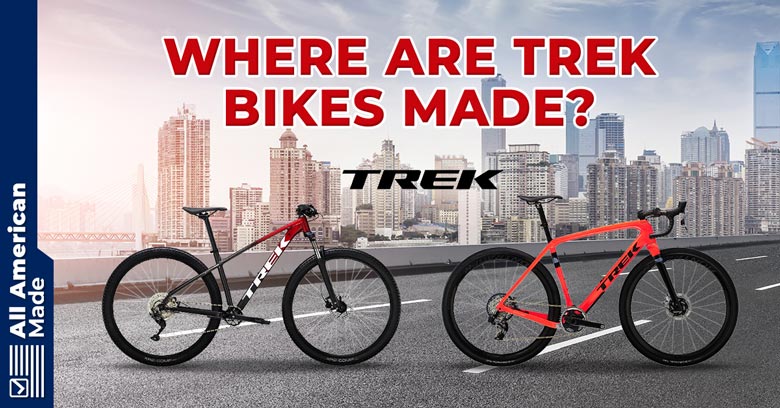
In the rest of this guide, we’ll explain exactly where Trek bikes are made and other interesting information about the company.
Trek bikes are made in China, Taiwan, Cambodia, and other countries. Trek Bikes are no longer fully produced in the USA; however, they do assemble some of their bikes in the United States.
Which Trek Bikes Are Made in the USA?

Despite having an awesome American legacy, less than 1 percent of all Trek Bikes today comes from the United States. In 2014, they made somewhere between 20,000 and 25,000 bikes in the US , but in 2013, they made around 50,000. We have continued to see a steady decline in the number of bikes that they make in the United States. Let’s have a look at the bikes made in the US:
- Madone 6 series
- Trek Madone 5.2
- Trek Emonda SLR 8
- Project ONE
Even these bikes, we would exercise caution in thinking that they fully make them in the United States because we get the feeling that they only assemble them here. Every bike that they make in the US will come from its sole factory in Waterloo, and it will have a label on it that says, “Handbuilt in the USA.”
Unfortunately, due to the lack of manufacturing that this company now does in the US, you have reason to exercise caution. For example, they say that only the red and white bike frames for the Trek Madone 5.2 were made in the USA.
Made in Waterloo
At the manufacturing facility in Waterloo, Wisconsin, they continue to build Trek bikes, but we would advise caution about believing in this too much. Unfortunately, we believe it is quite little in comparison to the past.
Believe it or not, like many American-made companies, Trek started from humble beginnings in a big red barn. They chose an operation that sat in the middle between Madison and Milwaukee. One of the funny things about this company comes from how they will occasionally put the face of their employees on coffee mugs as they did with their road bike manager .
When you buy the more quality Trek bikes, that would show you where you get the American-made bikes from Trek. For example, look for custom-built bikes as well to receive the ones made in Waterloo.
Some of the things that they do at the factory in Waterloo include sanding, bonding, and painting bicycle frames. They also assemble the chains and tires on the bicycles. Many of their US-made bikes will consist of carbon fiber since these are more high-end materials.
All of the carbon fiber frames come from Hexcel, a company based in Salt Lake City, Utah, so as long as you buy a carbon fiber framed bike, you will have an American-made frame. Hexcel has provided its services to Trek for over 25 years.
Along with the original factory in Waterloo, Trek also has its headquarters in Waterloo, where they hire 1,000 employees. Anyone interested in the history of this brand may want to tour its headquarters in Waterloo. You can learn more about their visitor tours here , where you will learn about their history.
Here is a cool video showing just how passionate Trek is about their bikes.
Why Did Trek Bikes Stop Making in the US?
We saw the manufacturing numbers halve from 2013 to 2014. It dropped from 50,000 bikes per year down to 25,000. Today, only around 10,000 Trek bikes get produced in the United States. Once upon a time, all Treks came from the United States, but you can’t say that anymore.
Trek first began building its bikes in 1976, but over the years, as the bicycle industry has outsourced its manufacturing more and more, we saw Trek do the same.
The increased labor costs and lower profit margins meant that they sent the jobs overseas to stay competitive with other companies. We do like that this brand appears to have held out longer than most. The first bicycle brand to start manufacturing overseas was Schwinn in the 1980s, and we saw a gradual slide from there where all the other companies followed.
Gradual Decline in US Manufacturing
Instead of an instant halt to production at Trek, we have seen a slow and gradual decay of its US manufacturing. Trek continues to this slow decline, and we don’t know where it will end and if all bikes will eventually be made overseas.
In either 1994 or 1995, we started to see them making most of their welded frames, such as the aluminum frames in Taiwan. The only exception to this was their tandem bikes. We believe that the real transition started in 2007 to 2008 because this was when their bikes stopped showing the “Made in X” stickers. Still, we think they held out longer than some of the other biking companies.
Be Careful About “Made in the USA” with Bikes
Don’t be taken in at the first sight of “Made in the USA.” Now, we’re not necessarily talking about Trek Bikes but the biking industry in general. Many times, they made put “Made in the USA,” but if you look closer, you will see the fine print that says, “Frame designed in the USA.”
Another trick that companies will sometimes use is to import the frame unpainted, and once they have painted them, they can claim that they were made there. Every country will have different laws on what is and is not acceptable for things like this.
One of the recent tricks that they use is to say, “Manufactured in America,” which means the same thing as “Assembled in the USA with Domestic and Foreign Parts.” You want to stay hip to the games that companies will play if you want a true American-made product, rather than some company padding its pockets of well-intentioned patriots—it’s more unacceptable than stating the true origin upfront, in our opinion.
Popular Related Article: What Air Compressors Are Made in the USA?
Made in the USA – Getting the Custom Bike Experience
Custom-made Trek bikes offer a one-of-a-kind bicycle that differs from all the rest. You have two options, but both of them involve American made bikes. First, you can head to the headquarters in Waterloo, Wisconsin, to meet the individuals who brought your bike idea to life. Before that, you order it from your local Trek retailer.
Upon buying a custom bike in this way, you receive the VIP tour of the Trek headquarters and have a look at the design and manufacturing of your bicycle. You take a group lunch ride with the employees, which has become a personalized and favored experience unlike anything the competition offers. The Trek Race Shop will also provide you with tips on how to race better.
For the second custom-made option, you order the bike from the factory by visiting it onsite to discuss how you would like it built. After you order it, they will ship it to your retailer for pickup. You receive a personal design and spec consultation with this choice and a factory tour. In many ways, they’re kind of the same, but the second option offers you one-on-one support when ordering. Whatever option you choose, they will handle assembling the bike, but they don’t do this with a mass assembly line.
Here is a cool video showing custom Trek bikes being made:
Touring the Factory in Waterloo
You don’t necessarily need to buy a custom-built bike to tour the factory in Waterloo. You can schedule a tour on Wednesdays if interested in better understanding what they do at the facility there. For example, you will learn how they don’t manufacture the frame at that location, but you see the painting booths, the wheel manufacturing, and the design area.
The tour doesn’t cost anything, and the guides are incredibly knowledgeable about the facility and willing to answer questions. You will see every phase of the bike manufacturing process that they control in Waterloo. It’s also a fascinating way to learn the history of Trek and how it began. We wouldn’t recommend taking this tour in groups larger than 12 since it can be difficult to move around.
Made in Taiwan
In the last couple of decades, Taichung, Taiwan, has exploded into the bicycle manufacturing scene. The whole of Taiwan has become a major producer of bikes, including Trek Bikes, usually through Giant, a biking company that produces parts for most bicycle brands. Giant has the world’s largest bike manufacturing facility in Taichung.
Trek does its manufacturing in Taichung. Many would award this city with the title, “Bike manufacturing capital of the world.”
Let’s have a look at what Trek Bikes does in Taichung. At this factory, under the label Giant, they produce one million bikes, and in total, they produce 6.3 million every year at all nine of their factories. This shows you the deplorable state of US manufacturing, where they only now produce an estimated 10,000 bikes per year.
We would say that Taiwan and China produce lower-tier to mid-tier bikes. Giant produces more of their low-level bikes in China. We did hear that Giant shuttered a factory in China in 2019 due to the 25 percent tariffs on Chinese goods. The production rate in Taiwan doubled as soon as this happened.
Giant went on to blame former President Donald Trump—as if everyone should be outraged about a Chinese factory closing—since it was no longer profitable to produce the bikes in China. While there are plenty of legitimate reasons that someone could pick a bone with any US president, the only people upset about a Chinese factory closing down are the ones profiting off it.
Since the late 1980s, Giant has produced bikes for Trek as it has for many other biking companies, and today, they build many of the Trek bikes. Follow where Giant produces its bikes, and you will often find that they make Trek bikes there. Despite some of the negative connotations about foreign manufacturing, we wouldn’t necessarily say that bikes made in Taiwan would be the worst thing ever. You have many specialists here that understand how to build a quality bicycle. While it may not be American-made, it does have its advantages.
Made in China: Trek Bikes
All of the big bicycle brands have a manufacturing presence in either China or Taiwan—Trek manufactures in both. The lower-end Treks will often come from China since it costs less to produce them here, and they use lower-quality materials. Some of the locations where we believe that they manufacture Trek in China include:
- Jiangsu, China
- Guangdong, China
- Heibei, China
- Zheijiang, China
Most of the Trek bikes come from Taiwan, not China, but you still have some that come from this country. In the past, they produced more in China, but because of US tariffs, they now produce bikes in Taiwan. They have six factories in China where they produce bikes .
Trek Bikes does have a manufacturing presence in China, but they don’t make all of their bikes there.
Most of the Components are Made in China or Taiwan
Trek commonly produce the components for their bikes in countries like China or Taiwan. Even if you have a bike that says, “Made in the USA,” we would advise caution on thinking of it as fully American-made since that rarely happens with this brand anymore. The only exception to this would be their carbon frame bicycles, but many of the components will come from China and Taiwan.
Trek Bikes Go to Cambodia
In 2018, Trek Bikes announced plans to move the production of 200,000 of its bicycles from China over to Cambodia. We believe this decision came at the heels of the US tariffs against China. Many of the bikes with aluminum frames now come from Cambodia. They make them at the A&J Factory, which first opened in 2006. This is, in fact, a Taiwanese-owned factory.
Along with Trek Bikes, they make Kona, Norco, and Kent there as well. The choice to move production from China marked a deliberate action to take production from Giant in China and put it elsewhere due to the Trade War.
This is a 500,000-square-foot facility in Cambodia, and it sits near the nation’s capital of Phnom Penh. We found this an interesting choice because most bike manufacturing in the country happens closer to Vietnam in the north.
Behind Taiwan and China, Cambodia remains a popular manufacturing spot for bikes, but it struggles with the infrastructure. Because of that, many of the components must be imported to build them. That could be one of the reasons that we don’t see more manufacturing of bikes here.
Like with China, you can expect more entry-level and lower-priced Trek bikes to come from here. The one issue that has come up often with manufacturing in Cambodia comes from its poor treatment of factory workers.
Trek Bikes and Manufacturing in Germany
When we say that Trek makes its bikes in Germany, we mean their subsidiary Diamont Bicycles, a German brand of bikes. Trek first acquired the brand in 2002, and they make a stylish city bicycle. The brand has a history in Germany that goes back to the late 19th century. They manufacture in Hartsmanndorf, Germany, where they employ an estimated 250 workers.
Unfortunately, like with the US, we have seen Trek gradually lower the amount of production in Germany. They once employed 600 workers, but they now only employ 250 in the country.
The facility in Hartsmanndorf shows you the only directly owned factory under the Trek Bikes label. All of the other manufacturing comes from third-party factories like Giant. Diamont gives you an example of one of the oldest bike manufacturers in Germany. The factory does appear to have a decent output of 150,000 bikes.
Made in Hungary
Along with its manufacturing switch to Cambodia, Giant, Trek Bikes’s manufacturer, announced plans in 2018 to switch over to Gyongos, Hungary. This decision came during the US Trade War with China, and they lobbed high tariffs on goods. Giant has said that it will construct a $72 million facility with the aim of better serving the European market and reducing its dependence on Chinese manufacturing.
The choice to manufacture nearby will reduce the cost of taxes and transport. Building the new factory in Hungary will allow them to produce one million more bikes next to its market.
Are Trek Bikes Made in India?
While Trek does sell its bikes to the Indian market, they do not produce bicycles in the country. They have also said that they have no plans to produce in India. It first entered the market there in 2018, and they have said that they plan to sell to over 125 cities in India.
Favoring Countries with Cheap Labor
Unfortunately, we don’t see Trek Bikes bringing back manufacturing to the United States any time soon because it appears to favor the countries with cheap labor the most. For example, China, Taiwan, Cambodia, and Hungary pay lower wages than countries like the USA or Germany.
We were even surprised that they have kept as much manufacturing in Germany as they have because outsourcing to countries with cheaper labor appears to be the norm. We believe that even their manufacturing in Germany could change with Hungary 494 miles away.
For those who want American-made products, as Americans, we can only blame ourselves that the manufacturing has gone to places like this because of how we often go for the cheaper products despite them being made elsewhere. If we want American manufacturing to return, we must make it clear that we support American-made products rather than those made in other countries. Your money is a vote for American manufacturing.
Considering how Trek Bikes receives 60 percent of its business from the United States, we think that they should do a lot more manufacturing in the United States, but we can only fairly ask that of them by supporting the American-made bikes that they produce.
What Trek Does Do in the US
While they don’t have a great record of manufacturing in the US, especially in the last decade, we wouldn’t write them off completely. The brand hires American workers for its engineering, testing, and design. We respect that the brand has at least kept that much in the United States over choosing to send it elsewhere.
Don’t See a Barn, See Something Bigger
Trek has a saying at their factory in Waterloo that we find inspiring. The American heritage of this company has separated it from the other choices because it all started in something so humble as a big red barn and grew from there. Over time, the company expanded to become a billion-dollar business that has a presence around the world. Trek has since outgrown the barn that it started in, but the founding principles of “Don’t see a barn, see something bigger” have always guided the mission of the brand.
Conclusion:
That does it for this guide, if you have further questions about where Trek bikes are made or if you know any information we should add to this guide, let us know in the comments below. Like some of the other brands in the biking industry, Trek doesn’t do much production in the United States, but they do have a history in the United States. You can still buy bikes from Trek that were made in the United States, but we would advise heavy research in advance to make sure that you bought one made here. Beware as well of how a higher cost on the bikes doesn’t always mean that they made them in the United States.
Hi, my name is Kevin and I’m from Pittsburgh, Pennsylvania. Choosing products made in America is important to me because it supports local economies, creates jobs, helps the environment, and ensures ethical labor practices. I also find that American made products are usually of higher quality so although they’re a little more expensive, you save money in the long run. Before starting this website I was in the USMC infantry and nowadays I work on this website as a hobby.
2 thoughts on “Where Are Trek Bikes Made? 2024 Overview”
I’ve been looking for an American made bike but can’t seem to find any that meet my needs. What would you recommend for someone who is an intermediate mountain biker?
Hey Matt, there are a lot of good alternatives to Trek. We have a full article on bikes and there are plenty of mountain bikes on that list that would be suitable for an intermediate lever rider. After checking it out if you have any questions just let me know.
Leave a Comment Cancel reply
Save my name, email, and website in this browser for the next time I comment.

Where are trek bikes made? (is it really American?)
- Share on Facebook
- Share on Pinterest
- Share on WhatsApp
- Email this Page
- Share on Reddit
In recent years, buying locally has become important for many people for various reasons: employment, environment, quality, etc. But have you ever wondered where trek bikes are made?
Trek bikes are manufactured 99% overseas in places like Germany, the Netherlands, Taiwan, and China. Whereas the majority of bikes are made in Asia, Trek does make some high-end carbon fiber bikes in the USA in Wisconsin, but that represents only 1% of the 2 million bikes sold per year.
But, not all high-end carbon Trek bikes are made in the USA, some are also made in Taiwan. Nevertheless, Trek emphasizes a lot on the quality of their products, and that’s why all their bikes have a lifetime warranty, build in the USA or not.
To explain things deeper, this article will cover which models are made in the US, and how to recognize them. Does buying from china necessarily mean bad quality, and what is all the fuss about giant making Trek bikes? Many interesting things, so keep reading!
Which Trek bikes are made in the USA?
All Trek bikes made by Project One program are handbuild in the United States. There are currently eight Trek models available: Madone, Domane, Emonda, Checkpoint, Speed concept, Supercaliber, Fuel EX, and Slash: all high-end models above $10k.
Note that not all these bikes are made in the USA. Only the “Project One” ones do. Therefore, it is entirely possible to find an Emonda made in Taiwan for instance.
Project One is a premium program where you can customize the paint and all the parts (wheels, handlebars, etc). It is packed with a superior quality standard where nothing is done on a “mass assembly line”. It’s all hand-painted, and hand-assembled on US soil.

How to recognize bikes made in the USA?
Trek bikes made in the US have “Handbuild in the United States” written on their frames.
Where is the Trek factory?
The USA Trek factory is located in Waterloo, Wisconsin. This is also the place of their headquarters and R&D facilities. As of 2014, they were making between 20,000 and 25,000 bikes a year in Wisconsin.
In the same year, trek manufactured 1.6 million bikes worldwide. These 20k on US soils represent thus only 1% of worldwide production. BUT, these 20k represent a big part of the 56k bikes manufactured annually on US soil. That’s why Trek claims to be the first “made in USA” bike manufacturer, even if the numbers are quite low.
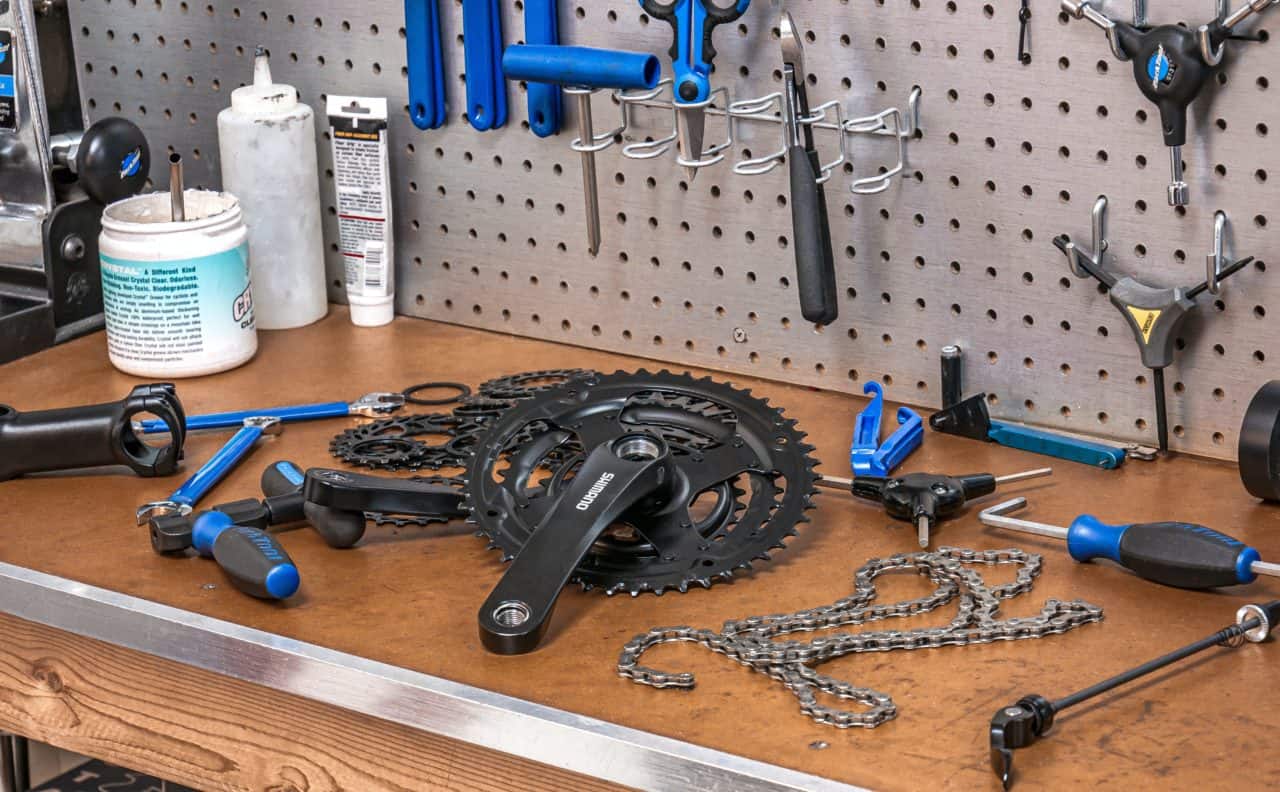
Are Trek Bikes made by Giant?
Giant does manufacture some Trek bikes in Taiwan, but these bikes are still designed and engineered in Waterloo, Wisconsin. Moreover, Trek is only outsourcing at Giant facilities and can therefore specify their own requirements to them, especially in terms of quality control.
What that means is Trek may oblige Giant to very strict quality checks, more than Giant may do for other bikes. Moreover, Trek designs cannot be used by Giant for its own bikes, they are Trek’s property. Therefore, you cannot say that, because Giant and Trek bikes are made in the same factory, it’s better to buy the cheaper Giant bikes because that’s the same bikes. This is just not true!
Good quality controls mean you will have two very good bikes if you buy two Trek bikes. They will be very similar because quality control ensures they do. On brands with less strict controls, it’s more like the lottery. You may have a very good bike for cheap but another time have a bike that won’t last long.
Having bikes built in the same factory means absolutely nothing. It’s not proof the bikes are identical by any means. In fact, it’s not rare to see entry-level products produced on the same assembly line as the high-end ones in many industries!
What does Trek do on US soil?
On US soil, Trek hand assembles all the Project One bikes. All the research and development is performed in Waterloo. So every Trek bike is designed and engineered in the United States of America. Their headquarters are also located in Waterloo.
Trek is also very proud of its retail network, which is orchestrated from the US. They only work with the world’s best bike shops; people they believe can deliver the quality service they aim for. Trek sells in 5,000 retailers globally and owns about 100 stores.
Is Trek bikes a good brand?
Despite producing mainly in Asia, Trek has strict control over quality. Quality control is in their DNA and among the values they convey to customers. That’s the reason why their bike frames have a lifetime warranty. Trek bikes are without a doubt very good bikes.
They do not compromise on quality and that’s how they become one of the top brands worldwide with an excellent reputation. They have 5000 retailers globally, a strong network to ensure very good after-sales services.

I also personally like the fact that they decided to never go public on the stock market because they “don’t need the money and (they) don’t the headaches” [Burke, CEO]. To me, it shows their aim to do quality products instead of just doing money for shareholders.
Trek bikes are the largest bicycle company in the US. While selling bikes for the masses, they also develop high-end products for professionals with cutting-edge technology. You can see Trek bikes on the famous Tour de France for instance. They really know everything about bikes and that’s why I have confidence in the quality of their products.
It’s no surprise that my main road bike is a Trek!
Related questions:
Are Trek bikes made in China?
Yes, the majority of Trek bikes are made in China and Taiwan. This is a common trend among many bike manufacturers. Despite this, the quality of Trek bikes is top-notch thanks to very thorough quality control. All their bikes have a lifetime warranty, even those made in China.
https://www.cnbc.com/2014/08/01/in-waterloo-wisconsin-a-passion-for-made-in-usa-bicycles.html https://www.bikeradar.com/features/inside-treks-project-one-semi-custom-operation/ https://onmilwaukee.com/articles/trekwisco https://www.trekbikes.com/us/en_US/project-one/
Avid triathlete, I love to write about my passion and share knowledge than can benefit others. I admit I consider my bike my best companion after so many miles done together both indoors and outdoors: training, racing, as well as bikepacking and commuting.
Similar Posts

Can you use a snorkel in a Triathlon?
If you are a regular snorkel user during your triathlon training you will probably wonder if you are allowed to use it during a triathlon. The rules are not very clear on the topic. This is why I am going to explain them to you. Snorkels are legal equipment for use by triathletes in events regulated by the USA Triathlon…
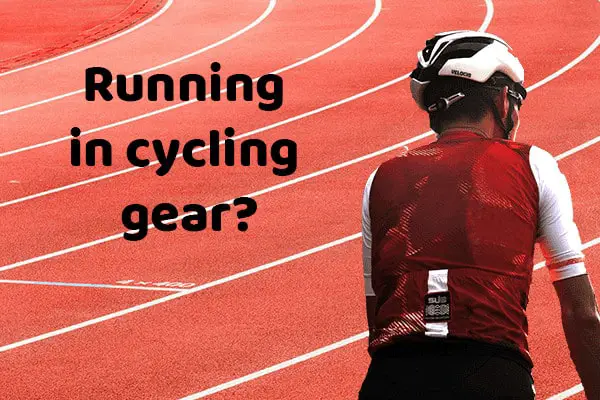
Can you run in cycling gear? (detailed per item)
You might wonder if you can go running with your cycling gear. One reason is that it is expensive to buy gear specific to each sport; this is even more true if you practice triathlon. It could also be because your running clothes are dirty but you still want to go for a run. What should you do then? Use…

Garmin Connect: is it free without a watch?
Garmin Connect is an app developed by Garmin to gather your health and sport activity data. It is a popular app and is generally among the top apps to review your activity metrics as well as create routes. But if you have just heard about this app, it might not be clear to you if this app is free or…

How to sync Garmin to Google Fit (step-by-step)
Google Fit is popular among people to store health and sports data. Generally because it is natively embedded into Android phones, so people have been using it for years. Nowadays sports watches are doing a wonderful job at tracking your fitness, better than phones and Garmin is quite a popular brand. If you made the move to Garmin, or are…
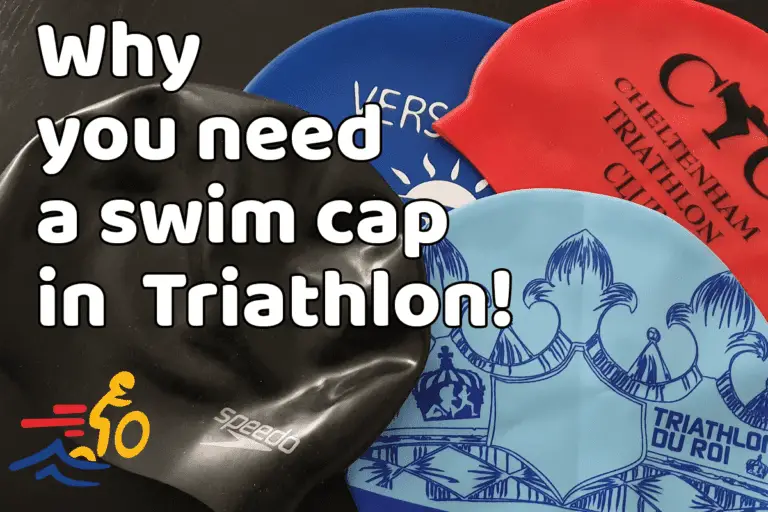
Why you need a swim cap for triathlon
It is not always clear if you need a swim cap to do a triathlon. Each event is different. Most will provide you with an official swim cap that is mandatory but some events don’t. But it is not clear whether you should wear your own swim cap anyway. Let’s make sure you know what to do on race day!…
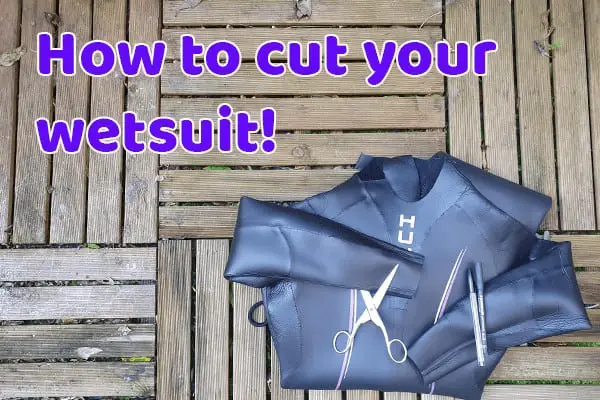
How to cut and shorten a wetsuit?
Got a wetsuit? And you would like to amend its length a bit? Then you are in the right location. You can cut a wetsuit with sharp scissors to shorten it. Neoprene is a material that sticks together and doesn’t fray. Many wetsuits have cloth taped over the seams. You can add some cement over the seams after cutting if…
Leave a Reply Cancel reply
Your email address will not be published. Required fields are marked *
Save my name, email, and website in this browser for the next time I comment.

- Mountain Biking
- Buyer’s Guide
- Gear Reviews
- Rides+Events
- Training Guide
- Maintenance
The new Trek Madone Gen 8 will be the company’s one race bike
A revamped frame that slices through the wind and sails up climbs.
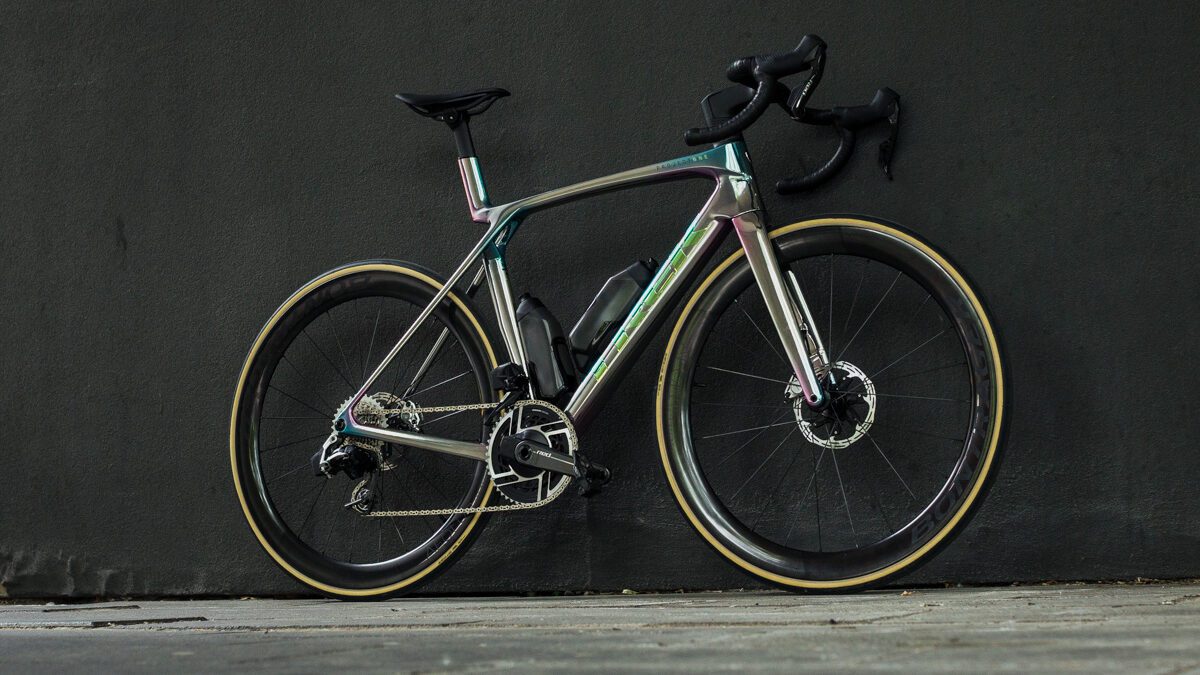
You might say the new eighth-generation Trek Madone is a poorly kept secret. Lidl-Trek’s Mads Pedersen won the first stage of the Critérium du Dauphiné on the Trek Madone Gen 8. Thibau Nys snagged Stage 3 of the Tour de Suisse on the same frame. But now, the new bike has been released officially. The company’s flagship aero bike has received a host of new changes, which are good news for riders (both pro and the rest of us). The launch, however, marks some bad news for another bike in Trek’s lineup, one that shares all the same letters in its name, albeit with an added accent on the e.
Why Trek is revising its road-bike lineup now
Back in September 2021, Trek was working on the fourth-generation of its lightweight road frame, the Émonda. As the team developed the bike, with trips to a wind tunnel and computer modelling, the group saw aerodynamic figures approaching those of Trek’s aero bike. Engineers and designers started exploring the idea of making one bike that had the low mass of the Émonda and aerodynamics of the Madone. It’s something other companies have already done. Specialized retired its aero Venge after the S-Works Tarmac SL7 came out in 2020 with all the necessary wind-slicing abilities on the climber’s bike. Argon 18 began phasing out its Gallium, all-round road bike, and aero Nitrogen after the Montreal company launched the Sum in 2022.
“The concept of a single race bike has been out there for a while and one of the reasons that we haven’t done that previously was it just required too much compromise,” said Jordan Roessingh, director of road bikes at Trek.
With the launch of the Madone Gen 8, Trek says the weight of the aero bike is the same as the Émonda. To be precise, it’s about 5 g heavier. The frame and fork of the size 56 Émonda is 1,141 g. The new Madone frameset in medium large weighs 1,146 g (frame: 796 g; fork: 350 g). (I’ll tell you more about why the old bike is size 56 and the new one is size medium large later.) Since the Madone is so feathery now, the carbon-fibre Émonda will be phased out of the company’s lineup. The aluminum Émonda ALR will stick around.
The aerodynamics of the Madone Gen 8 are essentially the same as the Gen 7 frame. Keeping things the same, however, required a whole bunch of design changes.
On developing the Trek Madone Gen 8
When I asked Alex Loy, lead engineer, and John Davis, aerodynamics lead, about just how many prototypes they made during the development of the Gen 8 Madone, they weren’t so sure.
“When it was model-year ‘24 Émonda—” Davis said develing into his personal memory banks.
“We did A1,” said Loy, finishing his colleague’s sentence.
“Yup. And A2.”
“A1, A2, E2, D2, C3—so that’s at least five.”
“C7.4, C8.11,” Davis started before the total “engineering-ness” of the names cracked me up as well as the other members of the Trek team in the meeting.
“Each of those refers to a class of shapes and tube orientations that we were evaluating,” Loy explained. “So E2 was, for example, the dropped seatstays class of bike that we were exploring.
If you are familiar with the design of the Gen 7 Madone, you’ll recognize that dropped seatstays would mean a host of other significant changes. For example, there’d be no IsoFlow. Or at least, the dropped seatstays prototypes didn’t have the gap that debuted on the previous Madone to reduce weight, boost compliance and improve aerodynamics. Yes, even that signature feature wasn’t a shoo-in for the new bike.
The pair eventually figured they had five aluminum prototypes for the wind tunnel and two carbon-fibre moulds that led to tens and tens of iterations with various layups. “But I’d say if you’re expanding your definition of prototype to the virtual side, it would be in the hundreds,” Davis said. “I tallied up the number of CFD runs, computational fluid dynamics, our aerodynamics simulation software. We ran more than 1,600. So, that’s not 1,600 different full bike prototypes, but many different virtual full-bike prototypes tested in a lot of different conditions virtually. We did a similar process virtually for structural efficiency.”
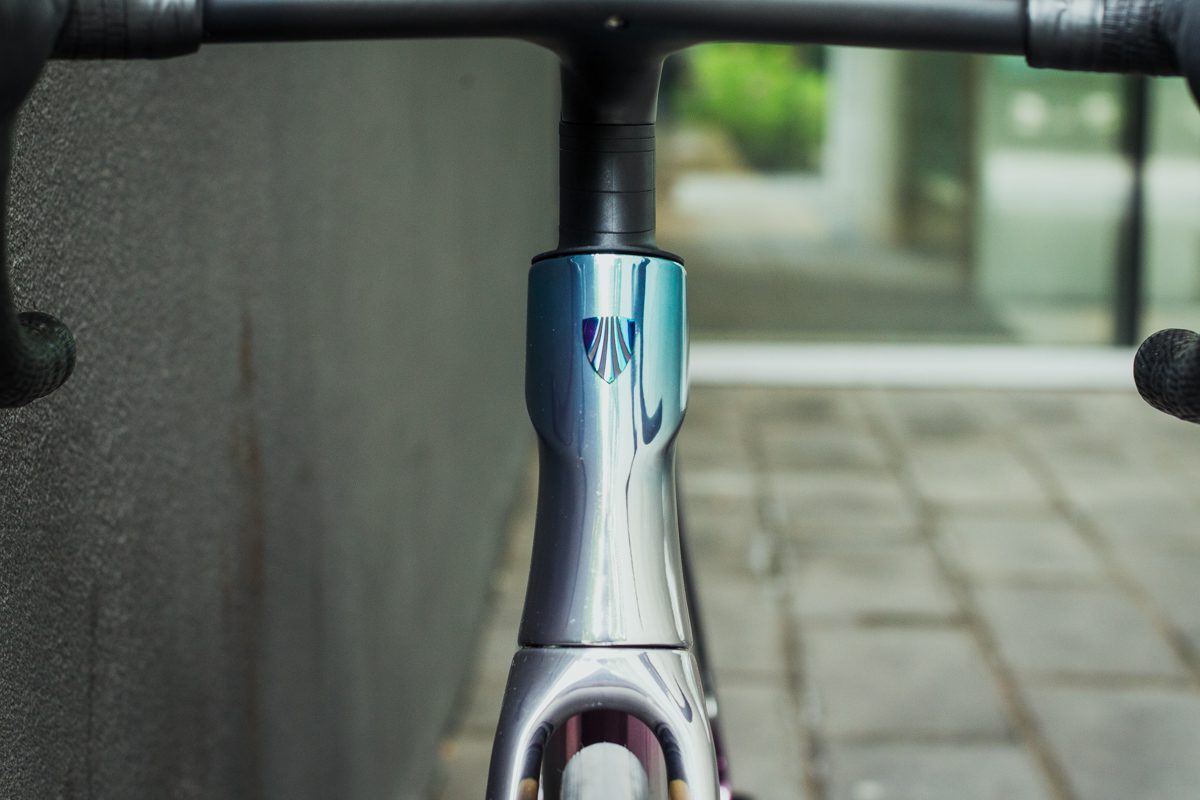
How Trek came to this new way of thinking about aerodynamics
Somewhat ironically, it was the aerodynamic research that went into the old Émonda that led to the bike’s end. The climber’s bike that was last updated in 2020 had been aero-fied a bit. That Émonda was Davis’s first bike project at Trek.
“Before that Émonda, we had been pretty much just looking at steady CFD, which ignores how the air changes with time,” Davis said. “That’s really important on a bike. We weren’t doing it in the past, not because we were neglectful or anything, we just didn’t have as much computing power as we do now. So we looked at unsteady aerodynamics on the Émonda and optimized the Kamtail as well as we could for that unsteady situation.”
The Kamtail is the truncated airfoil shape that has been a feature of the Madone’s design for more than 10 years. While you see aero shapes on the new Madone, the Kamtail doesn’t have the same large role as it once did.
“What the Émonda revealed to us is that the Kamtail shape is going to be great when you have steady flow. But once we get climbing conditions where you’re moving slower, we found the Kamtail lacking. That work,” Davis added, “directly kicked off research that ultimately went into this Madone and created the full system foil shapes.”
The full system foil is the term Trek uses to describe its aero approach on the Madone Gen 8. Instead of making each tube as aero as it can be, bike makers looked at the bike as whole, as if wheels, fork, frame and even bottles add up to one airfoil. With that approach, Davis, Loy and others have some flexibility in the design. For example, the fork, seat mast and upper seat tube use streamlined shapes because they face fast moving air. The lower part of the down tube, however, is pretty blunt.
“Generally, the lower you are on the bike, the less important aero is,” Davis said. “The reason for the boxy, blunt leading edge for the lower down tube is that it has the wheel in front of it. It’s in the wake of the wheel. It has the bottles behind it. So you can view that boxy shape as just one chunk of a larger airfoil shape that you’re cutting through in that lower down-tube section. Likewise, for the lower seat tube, that’s also very boxy. Because it’s behind the bottle, it barely sees the airflow at all. Those are also pretty important sections for structural efficiency, so there’s kind of a synergy there, if you will: where aero is not important, structural efficiency is pretty important.”
Ultimately, the new Madone has been designed to cut air best at lower yaw angles. At higher yaw angles, however, it’s no slouch thanks to the work the team did with unsteady aerodynamics.
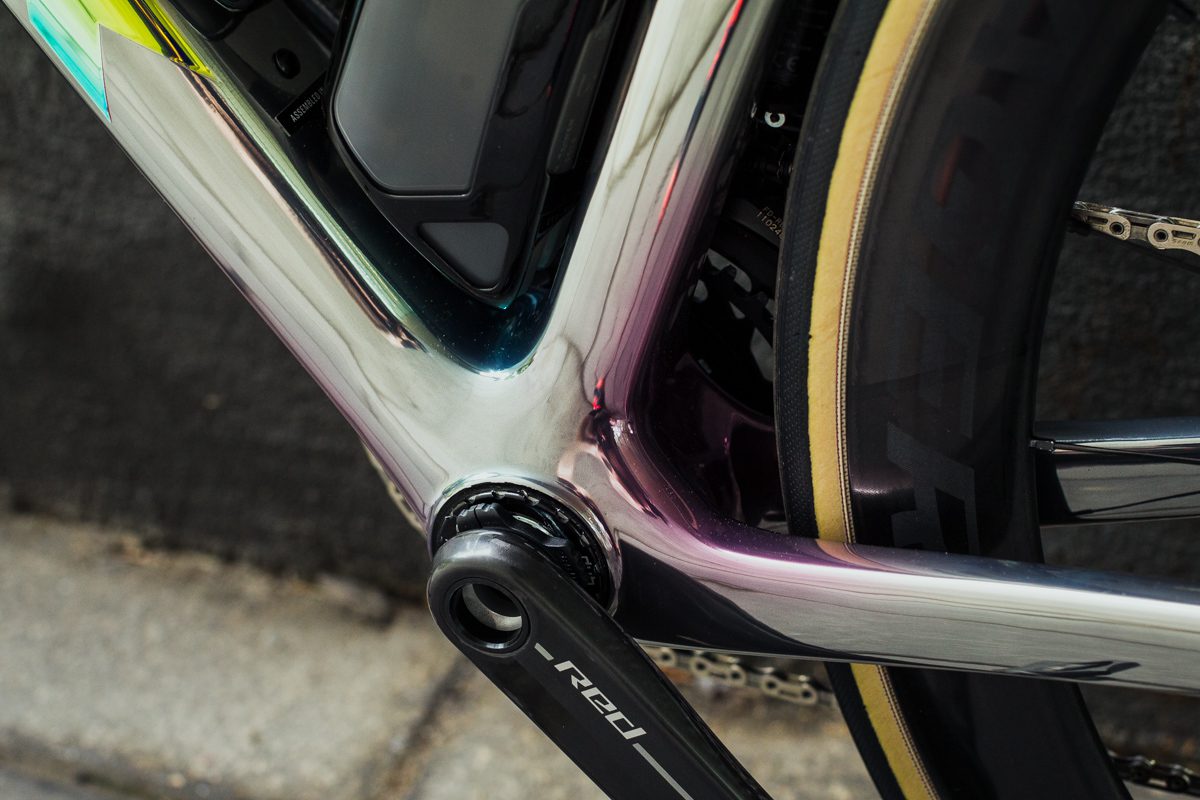
There’s another big bike marker that seems to be thinking like Trek
If you recall the launch of the Specialized Tarmac in 2023, you’ll remember that many of the tubes on that frame got a bit less airfoil-y and a bit rounder. It’s striking that two of the biggest bike manufacturers have come to similar conclusions about aerodynamics in their frames. Trek does keep an eye on its competitors but couldn’t really comment on the Tarmac. I got an honest answer on the matter. Simply, both companies test aerodynamics differently. Trek came to its own conclusions about when and how to merge its two platforms.
Your legs are nozzles, or, more about IsoFlow
The IsoFlow technology of the Gen 7 Madone does return on the latest version of the bike. The feature has some changes. It has more vertical compliance to better damp road vibrations. It also has more precise shaping to improve aerodynamics because the whole area around the IsoFlow gap, including the seat mast and upper seat tube, is, well, a windy place because of your legs.

“Between the rider’s legs, the flow accelerates as the legs act as a nozzle,” Davis said. “The torso is also acting like a nozzle in a perpendicular plane as the air gets ‘scooped’ by your chest and is pushed down to the same area between your legs. The local drag force on tube shapes increases with air velocity squared. Because of this, it is extra important to have streamlined shapes in areas of fast moving flow, which is why we have the seat tube, seat post and IsoFlow using aero shapes.”
Behind the rider things, the air gets twisted, but the IsoFlow can help a bit. “The key flow feature of a cyclist pedalling on a bike are two vortices that trail off the hips and lower back of the rider and propagate downstream,” Davis said. He also describes those vortices as mini tornadoes. “They’re responsible for a lot of drag. They create a low energy area with slow moving flow behind the rider. One of the goals of reducing drag in airflow is to try to keep energy as equal as possible. We want to add energy to low-energy areas. This is the aerodynamic reasoning behind IsoFlow. We want to create a channel for the fast moving air between the legs to reach the low energy area behind the rider. We’re of course limited by UCI rules and what’s practical on a bike, so we can only make a relatively small feature to do this, but it’s much preferable to having a tube there creating drag where we want it least.”
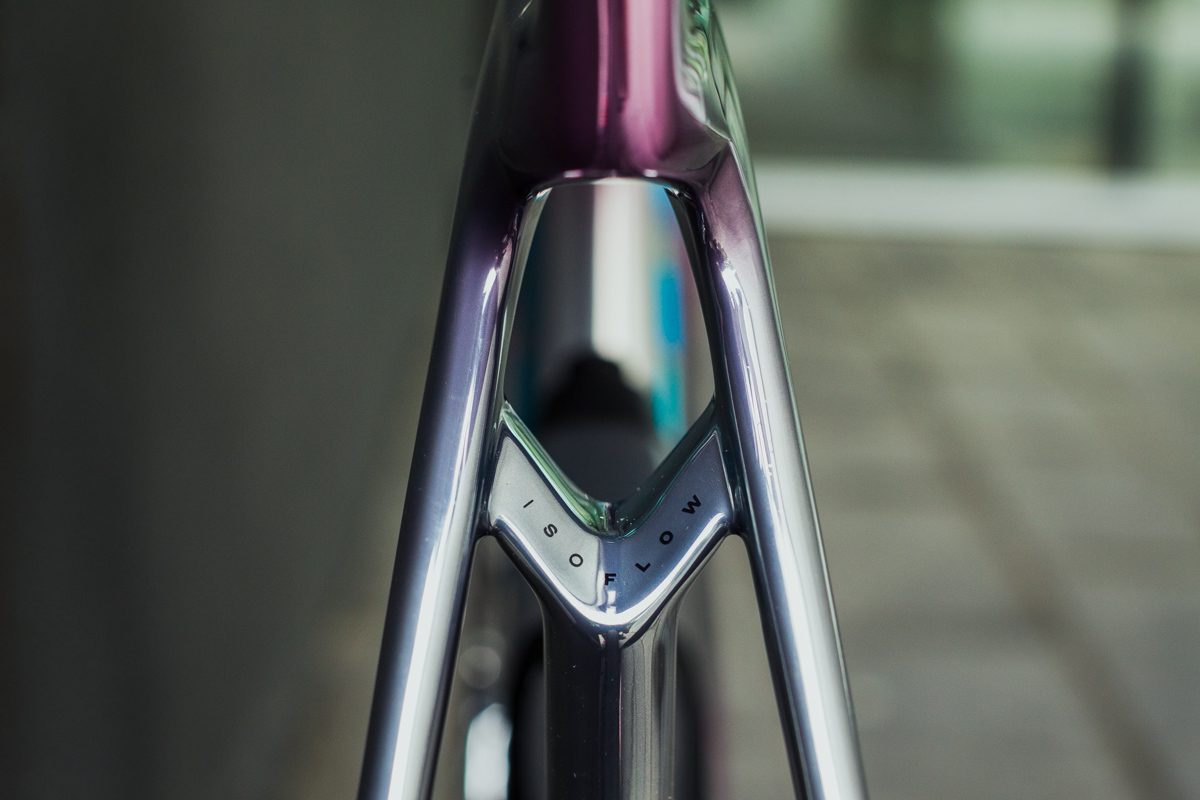
New carbon fibre in the Trek Madone SLR Gen 8
The new Trek Madone SLR Gen 8 frame uses a new carbon fibre called 900 OCLV Carbon. It’s 20 per cent stronger than the 800 Series OCLV Carbon, which was formerly Trek’s top composite. It’s the strength of the 900 OCLV that helped to cut weight in the frame. A new manufacturing process also helps. The company is able to create smoother tubes, both outside and inside. By minimizing any excess material, the overall weight goes down. The Gen 8 Madone in size medium large is 320 g lighter than a size 56 Gen 7 frame. (I know. I said I’ll tell you more about the different size designations. I will. Just not yet.)
Since it seems like there’s a new carbon fibre with the launch of each new top-end frame, I was thinking that surely we must be at the limit of what can be done with that material. Jordan Roessingh, director of road bikes, assured me that there is still room to improve materials and processes. I bet it won’t be long before we see 1000 OCVL.
RSL Aero bottles and cages of the Trek Madone Gen 8
The RSL Aero bottles and cages were designed to work with the new Madone. They are part of the full system foil. Trek said that they also tested the bottles and cages on other bikes, and not just aero bikes either. The RSL bottles and cages made for some aero gains on the other bikes, too.
The cages—which require low-profile bolts with rounded heads to attach them to the frame—can accommodate traditional cylindrical water bottles.

Two models of Trek Madone Gen 8: SLR and SL
The Madone SLR is the top-end frame made with the 900 OCLV Carbon. The second-tier frame, SL, is made with 500 OCLV. The SLR comes with the new bottles and cages. For the SL, you’ll need to buy them separately. The SLR has a one-piece bar/stem. SL has a separate handlebar and stem. SLR can only run electronic groupsets. If you don’t want servomotors changing your gears, the SL frame is for you.
Trek Aero RSL Road integrated bar/stem
Like the Gen 7 Madone SLR, the Gen comes with an integrated bar/stem. The new Trek Aero RSL Road handlebars are lighter than their predecessors. The tops of the bar are a bit taller, which helps to lower their weight and make them more comfortable to hold. Also, there’s an improvement to overall airflow because the tops of the handlebar actually condition the air so that it hits your legs at slower speeds.
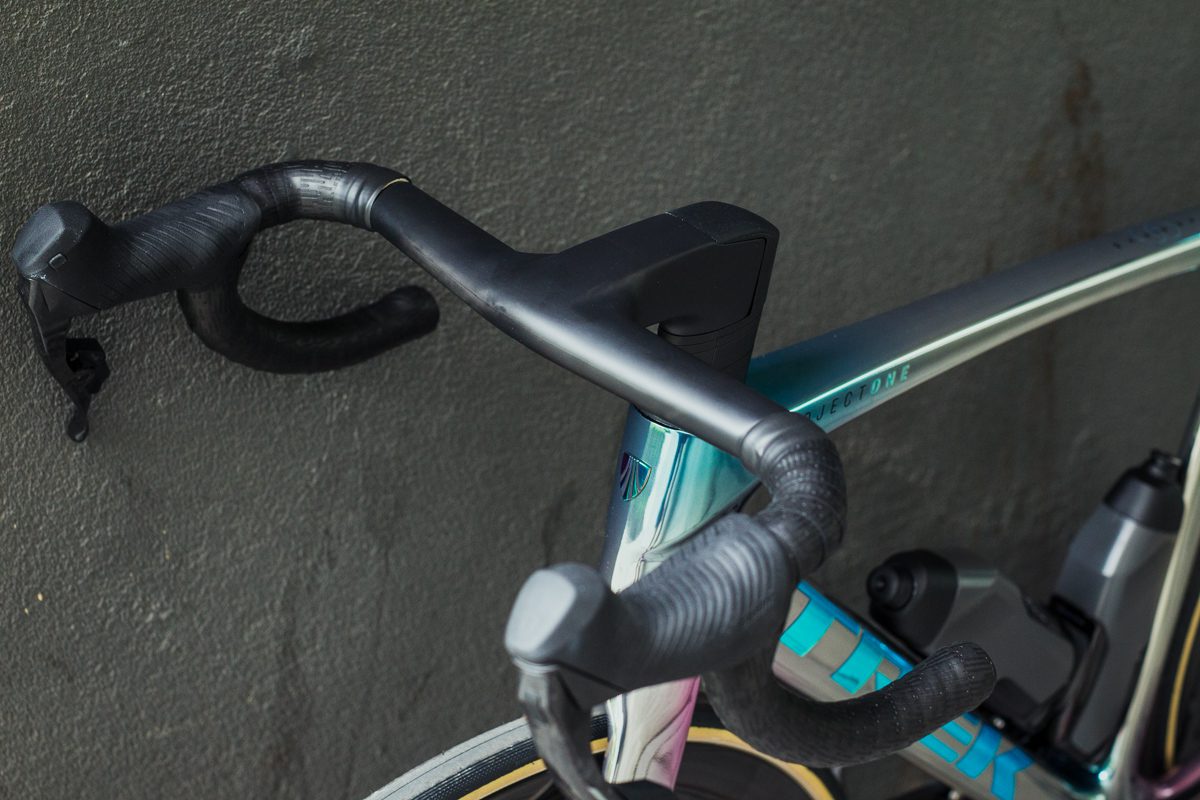
As with the previous generation’s bars, these feature a 3 cm difference between the hood-to-hood measurement and the drop-to-drop measurement. The bars on a size medium large frame have a 39-cm hood-to-hood distance and a 42-cm drop-to-drop distance. That gives you better aerodynamics up top and excellent control down below.
New sizing for the Trek Madone Gen 8
Traditionally, Trek uses nominal seat-post lengths to indicate size. The old Madone came in sizes 47 to 62 for a total of eight frames. There are six frames of the new Madone from XS to XL. Trek says it can fit the same range riders with these six. The geometry is slightly different than before. It’s no longer called H1.5. The new Road Race geometry only has a few millimetres difference from H1.5.
The smaller three sizes—XS, S and M—actually have slightly different tube shapes than the larger three: M/L, L and XL. The changes allow the frames to scale better. If Trek simply “shrunk” the large tubes, the smaller frames wouldn’t be a light as they could be. With the Trek Madone Gen 8 , shorter riders get frames that are better tuned for them.
All frames have clearance for 32-mm tires.
Canadian prices for Trek Madone SLR and SL Gen 8 models
First ride impressions of the trek madone slr 9 axs with p1 icon interstellar.
My test bike is the Trek Madone SLR 9 AXS with P1 Icon Interstellar. Let me unpack what that means. It’s made with the top-end 900 OCLV Carbon and is built with the new SRAM Red drivetrain: a 10-33 tooth cassette and 48/35-tooth crankset with power meter. It rolls on Bontrager Aeolus RSL 51 wheels with new 28c Bontrager Aeolus RSL tires. My scale says the complete package weighs 7.62 kg. I included the new cages and water bottles (empty) because they are such a part of the system.
For years, when I’ve test Trek bikes, I’ve opted for size 54. With the Gen 8 Madone, I went with medium large, which is equivalent of size 56. Size 54/medium fits fine, but it puts me in a slightly compact position. Also, I always seem to be close to maxing out the longest available seatposts to get the proper saddle height on a 54/medium. With the medium large, I can dial my saddle height of 75 to 76 cm no problem. The fit is good: quite aggressive. In the drops, I’m comfortable. At the hoods, well, I was surprised. This is the first bike I’ve ridden with the latest SRAM Red groupset. Its lever hoods extend outward from the bars noticeably. I can fit all four fingers between the bar and inside of a lever easily. On the Madone, at the hoods, I do feel a bit more stretched out than usual, but I’ve still been comfortable on long rides. If ever there was a bike for getting lower and more aero, this is it.

A note about the paint: the far-out Icon Interstellar is a premium coat that comes from Trek’s Project One customization program. It adds $4,500 to the price of the bike. The same spec of Madone, SLR 9 AXS, comes in four other colours that keep the price to $18,150.
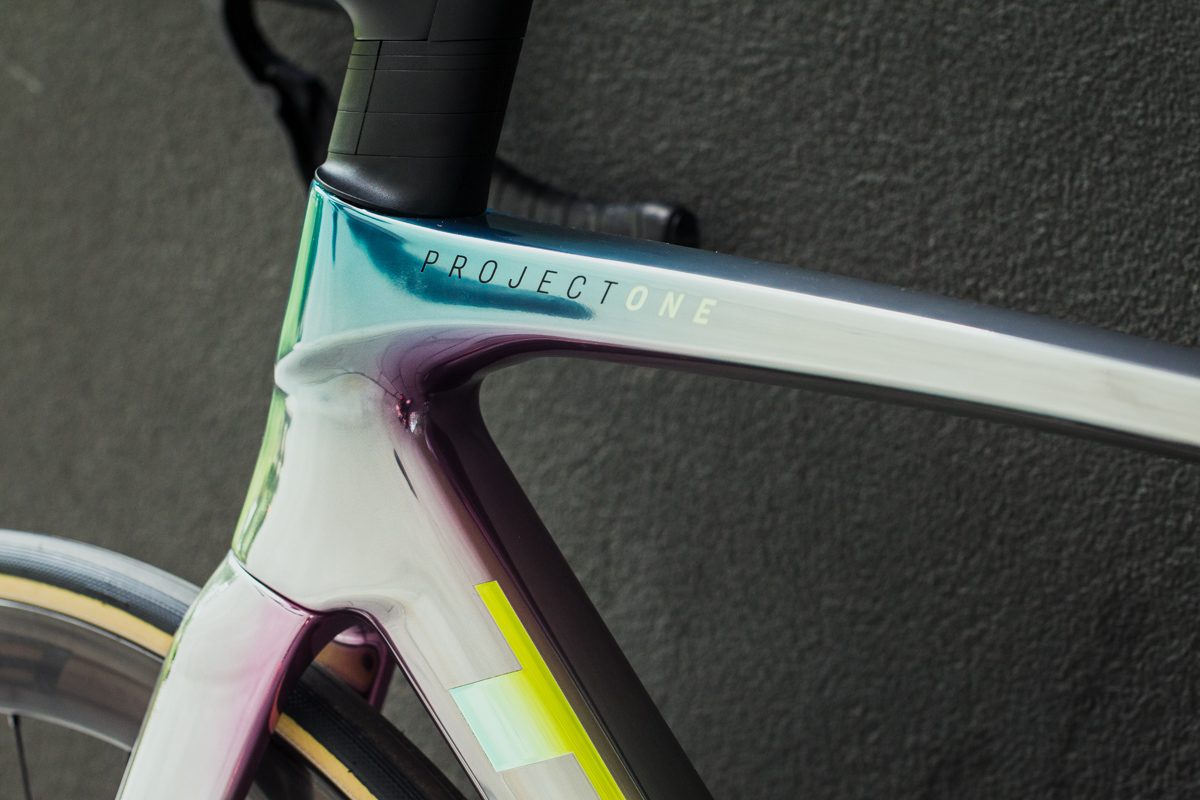
The Bontrager Aeolus RSL 51 wheels are strikingly smooth rolling and well-behaved when wind comes at them at various angles. The new Aeolus RSL tires feel great. As for the frame, it’s plenty stiff, making it lively and reactive. Since it’s light, it felt nimble on climbs. It truly is the Émonda’s heir. On the flats, it cruises so well. The IsoFlow does a top job of managing road vibrations.
I’m told that some pros on Lidl-Trek used to have a hard time picking between the Émonda and the Madone for their races. Not a bad problem to have, eh? Now, it’s one they don’t have to wrestle with. As for regular riders trying to decide between an aero bike and a lightweight bike—well, the Gen 8 Madone solves that conundrum.
As a rider who enjoys climbs, I always gravitate toward lightweight bikes, ones that speak to my skillset. I will miss the Émonda and what it represented. But the new Madone, this feathery wind-cheater, is just the bike I need for all my road rides.

- Email address: *
- Email This field is for validation purposes and should be left unchanged.
- Vuelta a España stage 20 Live - The final day in the mountains
As light as the Emonda and fast as the Gen 7 Madone, this is the Emonda-killing Trek Madone Gen 8
The new Trek Madone replaces both Trek’s lightweight Emonda and its aero Madone Gen 7
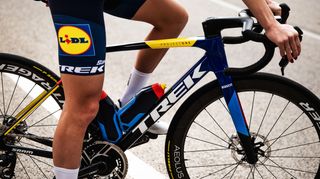
Trek has officially launched its brand new version of the Madone. Which will be the 8th generation of the bike. Trek claims it’s as aero as the Gen 7 Madone but now as lightweight as the Emonda. The new Madone will replace both bikes, so Trek joins the growing number of bike brands to abandon separate aero and lightweight offerings.
Ever since the new bike was first spotted under the pros at the start of 2024, its skinnier looks compared to the Gen 7 Madone generated intense speculation about whether it was a new Madone or a replacement for the Emonda .
Whilst the Gen 7 Madone was only launched two years ago, the lightweight Emonda is now four years old, so the bets were on for a new Emonda.
Actually, the new Gen 8 Madone replaces both the Gen 7 Madone and the Emonda in one lightweight aero package. Trek says that the new Madone sheds 320g from the Gen 7 Madone frameset, which in turn was already 300g lighter than its own Gen 6 predecessor.
It claims a 796g weight for a painted size ML Madone SLR frame and 350g for the fork, without added hardware such as the new UDH rear derailleur hanger. That puts the claimed full bike weight of a top-spec Madone SLR 9 AXS bike at exactly 7kg.
The lightweight makeover means that the Gen 8 Madone is now as light as the Emonda. At the same time, Trek says that it’s aero optimised the frameset where that’s most important, but thinned out the tube profiles from the Gen 7 bike where the aero gains are less, to allow it to shed the weight.
We headed to Spain for the new Madone's launch and you can read our first ride review here.
Get The Leadout Newsletter
The latest race content, interviews, features, reviews and expert buying guides, direct to your inbox!
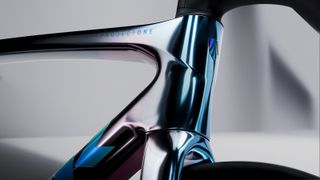
The aero tube profiles have had an upgrade too. Trek says that its new Full System Foil shapes have gone beyond Kammtail, offering better aerodynamics over a wider range of yaw angles thanks to a more rounded trailing edge in place of the sharper, squared-off edges of a Kammtail profile.
Wind tunnel testing suggested that the old Gen 7 Madone was faster than the Emonda on gradients up to 3 per cent when weight took over from aero as the dominant factor. The new Gen 8 frame is said to be faster than the Emonda on climbs up to 12 per cent, the steepest gradient tested.
As aero as the Gen 7 Madone

Trek says that the new bike is as fast as the Gen 7 Madone and 77 seconds faster per hour at 200 watts compared to the Emonda. The design optimises airflow for the bike-plus-rider while the ride position remains the same as on the Gen 7 bike.
Madone SLR models will also feature an updated Aero RSL integrated handlebar and stem. This bar features hoods that are 3cm narrower than the drops to help riders stay aero. It’s thicker in cross-section at the tops than the Gen 7 bike’s bars and more comfortable to hold, though it is still compatible with the old bike’s RCS headset design.
The new design raises the top of the bar/stem by 4mm, but Trek offers an aftermarket RCS Race Low bearing top cover if you want to revert to the Gen 7’s 4mm lower bar top height. There’s also a new Blendr accessory mount that’s lighter and can more easily be removed.
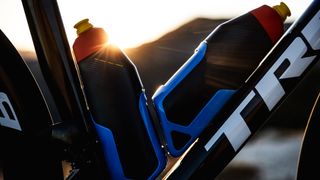
There are also new, aero-profiled 595ml water bottles and cages, although you can also fit round bottles into the cages.
Trek says that the RSL Aero bottles and cages save 3.7 watts at 45kph over standard round bottles and make the bike faster than riding without bottles. They can also be bought aftermarket if your bike needs an aero upgrade .
It’s a similar approach to that used by Cannondale on the latest SuperSix Evo , with that brand claiming that its bottles improve the SuperSix Evo’s aerodynamics.
Lower weight, more comfort
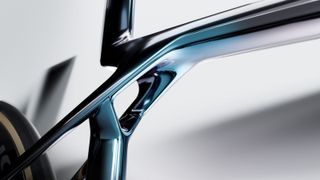
The top tier SLR-grade Madone is constructed using Trek’s latest 900 OCLV carbon, which it claims is up to 20 per cent stronger than the 800 OCLV carbon used in the Gen 7 Madone. A new moulding process and single-piece fabrication of the fork also allow Trek to save additional weight.
When Trek launched the Gen 7 Madone, a lot of the weight saving on that model came from the replacement of the Gen 6 bike ’s adjustable IsoSpeed seatpost with a lighter non-adjustable IsoFlow system.
Trek said at the time that it made the Gen 7 seat mast as stiff as the Gen 6 bike on its stiffest setting.
With the new Gen 8 Madone, it’s increased the vertical compliance though, which it says is now up to 80 per cent greater than on the Gen 7 bike and 24 per cent greater than the Emonda. The new design is also lighter than the Gen 7 Isoflow.
Trek has amended its tube shapes across the size range so that the frame stiffness is more similar between sizes. A by-product is that XS and S size frames are now lighter, while it says that the frame’s aesthetics are now more proportionate across the size range.
The new Madone can fit 32mm tyres, the same as the Gen 7 model.
New sizing
With the new Gen 8 Madone Trek has rationalised the size range, with the new bike now offered in six sizes from XS to XL, as against the Gen 7’s eight sizes. Despite offering fewer sizes, Trek says that there’s less overlap between frame sizes , so that the Gen 8 Madone can actually fit a wider spread of rider heights.
The new size M replaces the old sizes 52 and 54, while the new size XL replaces the 62, but includes a taller seat mast. As with the Gen 7 bike, the seatpost wedge can be reversed to increase the range of saddle height adjustment.
The geometry across the range is similar to the Gen 7 Madone, although the frame stack is slightly higher. Rather than calling the geometry H1.5, as with the Gen 7 Madone, it’s now renamed Road Race Geo.
Madone Gen 8 specs and prices

Trek will sell the new Madone in two frame grades, SL and SLR. Both are offered at launch in four specs, with SRAM and Shimano options, as well as a frameset-only option.
The top-spec SLR bikes use the latest 900 Series OCLV carbon, the one-piece bar/stem and RSL Aero bottles and cages and are electronic groupset only. You can choose your own colours in Trek's Project One configurator as well as off-the-shelf colours.
The SL bikes are made using 500 Series OCLV carbon and have a separate bar and stem. They’re not available for Project One customisation and are only pre-built. You don’t get bottles or cages, but the frame is compatible with mechanical groupsets.
US prices for the Gen 8 Trek Madone range from $3,499.99 for the SL 5 up to $13,499.99 for the Madone SLR 9 AXS. That’s a $200 price hike from the top-spec Gen 7 bike, although that’s probably due to to the new Sram Red AXS groupset.
In the UK, that translates to an entry-level price of £3,250 with the top spec priced at £12,500. That's actually a £2,050 reduction from the UK list price of the Gen 7 Madone SLR 9 AXS bike – maybe brands are getting the message on pro-level Tour de France bike prices .
The Euro price spread is €3,499 to €13,999 and in Australia, prices range from AU$4,499.99 to AU$19,999.99 for the SLR 9 AXS.

Thank you for reading 5 articles in the past 30 days*
Join now for unlimited access
Enjoy your first month for just £1 / $1 / €1
*Read any 5 articles for free in each 30-day period, this automatically resets
After your trial you will be billed £4.99 $7.99 €5.99 per month, cancel anytime. Or sign up for one year for just £49 $79 €59
Try your first month for just £1 / $1 / €1
Paul has been on two wheels since he was in his teens and he's spent much of the time since writing about bikes and the associated tech. He's a road cyclist at heart but his adventurous curiosity means Paul has been riding gravel since well before it was cool, adapting his cyclo-cross bike to ride all-day off-road epics and putting road kit to the ultimate test along the way. Paul has contributed to Cyclingnews' tech coverage for a few years, helping to maintain the freshness of our buying guides and deals content, as well as writing a number of our voucher code pages.
Spotted: Primož Roglič looking for marginal gains at the Vuelta a España
Bont Vaypor road bike shoes review: Feathery and stiff, with some much needed improvements for comfort
Tour of Britain: Paul Magnier sprints to third stage win on stage 5
Most Popular
Powered by Outside
Trek Madone long-term review: Hyper-aero, surprisingly comfy
- Share on Facebook
- Share on Reddit
Don't miss a moment of the 2024 Tour de France! Get recaps, insights, and exclusive takes with Velo's daily newsletter. >","name":"in-content-cta","type":"link"}}'>Sign up today! .
The Madone is the oldest model name in the current Trek road lineup, with the first dating back to 2003. That nameplate has worn several hats in that time, but it’s always represented the best that road bike Trek had to offer. The latest generation is no different, offering cutting-edge aerodynamics, an incredible level of integration, and a level of comfort that is unmatched by its competitors.
But what’s it like to live with a Madone over the long haul? CyclingTips US technical editor James Huang sought to answer just that, spending nearly two full years of quality time on a workhorse Madone 9.5 model. The honeymoon ended long ago, and there have been some rocky moments since then. But for the most part, it’s been a pretty solid relationship.
Aero performance without compromise?
The science of bicycle aerodynamics has greatly matured in recent years, and it seems like every major industry player has cracked the code on how best to reduce drag. While it could easily be argued that aero road bikes from different brands are looking increasingly derivative, it could just as easily be argued that it’s because there just aren’t many ways known to do it well without sacrificing other performance metrics, such as chassis rigidity and weight, and staying within the stringent UCI technical guidelines for frame design.
As a result, the never-ending fight to save watts is increasingly a matter of splitting hairs, but even independent third-party tests have confirmed that Trek’s latest Madone is one of the absolute best in this regard. It’s fast when pointed straight into still air, but also posts enviably low drag numbers at a wide range of wind angles, meaning that it also maintains that aerodynamic edge in more realistic outdoor conditions.
Trek was one of the earliest proponents of the flat-backed, Kamm-tail tube profiles that are now so common; its original Speed Concept time trial/triathlon bike debuted the concept almost 10 years ago, at the 2009 Tour de France. It’s not surprising that Trek has continued to refine the idea, incorporating the philosophy fully in this latest Madone. While the down tube, seat tube, head tube, seatstays, and fork blades all look conventionally deep in profile, a closer look reveals that they all have clipped tails, with the theory being that the truncated shapes maintain the aerodynamic efficiency of full airfoil sections, but with the weight and stiffness advantages that come from the rounder cross-sections.

Details matter as always, and Trek has complemented the frame’s basic shape with similarly well thought-out ancillary components. The front and rear rim brake calipers are nicely integrated into the surrounding structures, and Trek has gone the extra step of partnering with TRP to create dedicated units specifically for the Madone. They blend in so well, in fact, that were they painted to match, they’d almost be invisible at first glance.
Up front is a proprietary one-piece carbon fiber cockpit; the steerer clamp is matched with profiled headset spacers for a cohesive surface contour. Save for very brief appearances at both derailleurs and the rear brake, cable routing is fully internal from tip to tail, running inside the flattened bar tops, through the bulbous molded carbon-fiber stem, and down the sides of the unique square-profile steerer tube before making their way inside the frame. On the down tube, just aft of the head tube, is a small hatch with either a holder for a Shimano Di2 junction box or a barrel adjuster for a cable-actuated front derailleur. It’s very slick.

Overall, the layout is strikingly clean, and it makes other aero bikes with exposed cabling look comparatively unfinished and cluttered.
Other examples of integration include proprietary bolt-on accessory mounts for computers and front and rear lights, a pocket in the non-driveside chainstay for a wireless speed and cadence sensor, and Trek’s now-commonplace BB90 press-fit bottom bracket shell , whereby the crankset bearings are pressed into seats that are molded directly into the shell; no separate cups are required. A chain keeper is mounted to the base of the seat tube, too.
Such deep-section tubing would normally produce an unyieldingly stiff ride quality, but it’s here where the Madone shines brightest.

Trek has incorporated its ingenious IsoSpeed “decoupler” into the Madone, which places a pivoting axle at the seat cluster to promote movement on rougher roads. Even adding a pivot axle and a pair of cartridge bearings isn’t going to make a deep-section seat tube flex much under load, however, so Trek has instead developed a rather brilliant tube-within-a-tube design. That aero-profile extended seatmast necks down at the seat cluster to a much smaller, round-profile seat tube that is hidden inside the seat tube. In this way, the main frame can still be shaped to cheat the wind, but the ride quality is akin to a more traditionally shaped frame.
As on the previous three generations of Trek’s flagship road racer, this latest Madone features a clever semi-integrated seatmast design that requires no cutting. Although it looks cool (and omits many of the hassles of full-length integrated seatmasts), it’s also what makes the IsoSpeed concept possible since more traditional designs with overlapping frame-plus-seatpost layouts would make that area too stiff.

It makes little sense to report a traditional frame-only weight here since there is so much integration on the Madone and so many proprietary parts that must be included for it to function. Instead, it’d be more telling to describe the “module,” including the frame, fork, headset, headset cover, seatmast head, cable hardware, front and rear brake calipers, and bottom bracket. Actual weight for that configuration is 2.27kg (5.00lb).
A different approach toward bike reviews
It’s commonplace for us here at CyclingTips to test bikes for several weeks — or sometimes, several months — before sharing our impressions. The current Madone iteration had already been around for a couple of seasons by the time I took delivery of my review sample, and since I was unlikely to add much to the existing conversation, I decided to take a different approach. Savvy readers may notice that the Madone model pictured here is thoroughly out of date, but that’s because I’ve been evaluating it for the past two years .
Piling on miles quickly is obviously one way to get to know a bike, but there’s no substitute for simply living with the thing over an extended period of time: winter, spring, summer, fall, repeat.

For this unique ultra-extended test, I went with a workhorse Madone 9.5 model, built around Trek’s second-tier 600 Series carbon frame and its standard H2 semi-upright geometry. The bike arrived with Shimano’s now-previous-generation Dura-Ace mechanical groupset, Bontrager aluminum/carbon aero clincher wheels, and Bontrager finishing kit, with a total weight of 7.26kg (16.00lb, without pedals). Nearly every component was traded in and out over those two years, but that’s just as well; I was mainly trying to get thoroughly acquainted with the frameset.
And let’s just say that after two laps around the sun, I got to know the thing quite well.
For more information on current Madone models, visit Trek .
A sleek shape, a comfy ride, and lots of integration
Having already spent several months on a flagship model prior to starting this review, I was already familiar with most of the Madone’s salient performance traits, and am happy to report that most of them carry forth on this more affordable version.
Aerodynamic efficiency is always a dubious thing to evaluate from the saddle, but the Madone indeed feels fast on the road, especially when fitted with matching aero wheels. The bike accelerates just like non-aero bikes of similar weight and stiffness from a standstill, but it’s when you’re moving at higher speeds that you notice how much easier it is to do so. Scoff at the concept of aero gains all you wish, but the effect is real — and tangible, in this case.

More striking is the bike’s surprisingly comfortable ride. Most carbon fiber aero road bikes do a decent job of filtering out high-frequency road buzz, but kick back hard on bigger impacts. However, the Madone’s pivoting seatmast even manages to quell those handily. Whereas you’d normally brace for impact when approaching ugly-looking bumps on more traditional aero road bikes, you quickly learn on the Madone that you can simply stay seated and pedal through.
IsoSpeed is now featured on Trek’s Madone, Domane, and Domane SLR road platforms, and it’s perhaps worth noting how the ride quality differs between the three. Whereas the original Domane — with its rear-only IsoSpeed design — offered a pillowy ride out back, the fully rigid front end was comparatively harsh, and the feel was markedly unbalanced as a result. Trek corrected this on the Domane SLR with its new Front IsoSpeed device and newly adjustable rear IsoSpeed design, and the ride quality is decidedly more cohesive as a result.
Like the original Domane, the Madone features IsoSpeed only at the rear end, but it doesn’t suffer from the same mismatched feel. Whereas the first-generation Domane (and current second-tier ones) are plush out back, but very firm up front, the Madone’s stock IsoSpeed tuning is firmer to begin with, and feels more balanced overall. It strikes a pleasant balance between bump isolation, road feel, and efficiency with no noticeable saddle movement during normal pedaling. A plush endurance machine the Madone is most certainly not, but it’s still a striking improvement over the vast majority of aero bikes on the road.

If you want an even smoother ride, bear in mind that Trek officially approves the Madone for use with tires up to 28mm-wide (and rims up to 30mm-wide). Two years ago, Trek equipped the Madone 9.5 with 23mm-wide tires on 17.5mm-wide rims; today, the Madone 9.5 comes with 25c tires, which actually measure closer to 27mm when mounted to 19.5mm-wide rims. Especially in that configuration, the Madone is far more comfortable to ride than you’d expect based on appearances alone.
Such clearance would be meaningless without brakes that can handle the extra width, but the Madone’s proprietary calipers are up to the task. Integrated set screws individually adjust each arm’s position and spring tension, and handy quick-release levers are incorporated into the design as well for fast wheel changes. The direct-mount, center-pull design is also impressively rigid and yields excellent lever feel.
I found the calipers easy to control, but overall power is a bit lacking as compared to standard Shimano direct-mount calipers. Most of this difference was eventually sourced back to the stock TRP pads, however, which seemed overly hard and lacking in initial bite. Switching to SwissStop’s purple BXP compound helped tremendously, as did installing a set of HED Jet 6 Black aluminum/carbon clinchers with their aggressively textured sidewalls.

As I’ve come to expect from the Madone family, handling was unflappably capable. Years of refinement have produced a geometry that simply goes where you want it to, when you want it to, with no drama or objection, and with minimal input required of the rider at either the bars or hips. It’s not overly twitchy or stable, but rather as middle-of-the-road as could be for a high-end, everyday road racer; basically the embodiment of neutral handling.
While some might classify that sort of quiet competence as boring, I’d say it’s the perfect scenario for day-to-day riding.
Some will find the fit to be much more polarizing, however.

All of Trek’s aero road bikes wear the same “Madone” label, but there are essentially two different bikes on tap here. Not long ago, Trek offered many of its Madone models in two fit variants: the aggressive H1 version with its pro-friendly long-and-low rider positioning, and the masses-friendly H2 fit, with its taller head tube and slightly shorter top tube. These days, however, the only way to get the H1 fit is to go with a bare Madone 9 Race Shop Limited frameset and build it up from there; every complete Madone is now offered solely in the H2 version.
For my preferred 52cm size, the difference in reach is only 3mm: 379mm vs. 382mm, which basically just takes into account the head tube extension and still offers plenty of room to stretch out. The difference in stack, however, is a much more substantial 552mm vs. 523mm, for a whopping 29mm gain. For the sake of comparison, it’s not far off from what Specialized does with its Tarmac vs. the Roubaix families of road bikes.
Whether that’s a good or bad thing will depend on your personal setup, but Trek has obviously opted to favor the majority of the bell curve here. Truth be told, I was perfectly happy height-wise on the H2 setup just by removing all of the headset spacers. But that said, riders interested in the Madone who want or need a more aggressive position will either need to remove all the headset spacers or start from scratch.

Compounding the fit issue is the aero carbon fiber integrated cockpit. The effective stock stem length on my 52cm sample size was a stubby 90mm, and I definitely needed to go longer; other sizes are equipped with similarly short cockpits as well. Trek supplied me with a longer cockpit per my request, but the internally routed cabling doesn’t make the change remotely quick or easy.
I’ve noticed several Trek Factory Racing team riders opting for more conventional stems and bars for various reasons. However, I would encourage most Madone buyers to invest the time to get the properly sized one-piece cockpit installed because it’s very good once you get the right size. The flattened tops have more rounded edges than many other designs I’ve used, so they’re surprisingly comfortable to hold on long climbs (although I would recommend against leaving them bare as Trek supplies from the factory). And while I would have preferred a bit more wrist clearance when sprinting, the variable-radius drops offer a wide range of comfy hand positions. The monocoque design is also impressively stiff without being overly so, and as long as you’re running one of the supported brands, the slick Blendr bolt-on computer and light/camera mounts make for an ultra-clean setup.
I anticipated all of these fit issues right from the start, but what I didn’t anticipate was the difference in stiffness between the H1 and H2 frames.

Trek builds the top-end, H1-fit Team Issue frames with its premier 700-Series carbon fiber blend; the H2-fit versions get the lesser 600-Series mix instead (and are also made in Asia, not Wisconsin). The modest increase in weight isn’t a big deal, but the softer feel is harder to ignore.
I’ve never found Madones of any generation to be unusually rigid, but I’ve usually been happy to accept that given their balanced ride qualities. The 600-Series frame squirts forward with pedaling pressure well enough, but front triangle torsional rigidity is particularly lacking as compared to the stouter-feeling 700-Series Madone. The chassis feels a little soft when climbing or sprinting out of the saddle, and is especially distracting when hitting bumps in mid-corner, where the sudden out-of-plane twisting can knock you off-line and disrupt your rhythm through a series of turns. No matter how much time I spent on the Madone 9.5, that sudden wiggle was something I never grew accustomed to, and it ultimately sapped my confidence on fast downhills.
After the honeymoon period
It’s relatively easy to gauge a bike’s overall personality after just a handful of rides, but long-term issues often only rear their ugly heads over time.
Trek does its best to make the internal routing setup more liveable, including cleverly split headset spacers that allow for bar height alterations without having to re-run all of the cabling, and built-in adjustments on the brake calipers that can accommodate a reasonably wide range of cable tensions. As with many internally routed bikes, there’s also a big port at the underside of the bottom bracket to help guide everything through. Indeed, just changing inner cables is only mildly anger-inducing.

It’s usually better to replace both the cables and housing at the same time, however, and there’s no point in sugarcoating the process — it’s a royal pain in the ass. Trek thankfully provides guidelines and tutorials for the process, including detailed housing lengths, but there’s still a lot of fishing and disassembly involved. Whereas a reasonably experienced home mechanic could do a complete cable and housing replacement on an externally routed bike in the time it takes to watch a single episode of Game of Thrones (new bar tape included), it’s best to set aside a half day or so here.
Repeated rides in wet weather revealed a few more chinks in the armor.
Cable exit points are reasonably well sealed, but the slot for the semi-integrated seatmast topper is basically open to the elements. Water spraying off of the rear wheel easily gets in, but at least can drain out through the holes in the bottom of the bottom bracket shell. That said, any associated dirt or mud isn’t likely to flow out as well (and yes, I mostly stuck to asphalt for this one).

That’s a good thing in terms of the bottom bracket bearings, which on some frames can corrode from within. There’s an internal plastic sleeve that does a decent job of shielding the Japanese NSK cartridges from that sort of water exposure, but they’re not wholly immune to weather. And from the outside, the supplemental bearing shields — don’t you dare call them “seals” — do little to protect the bearings from road spray. And unlike a more conventional design that uses separate press-in or threaded cups, the molded carbon-fiber structure doesn’t provide as much flexibility for updating those seal designs.
It’s predominantly dry here in Colorado, so this Madone didn’t see nearly as much foul weather as it would have under someone who would ride it day-in and day-out in a wetter climate such as the U.K. Perhaps as a result, my bike stayed pleasantly creak-free during its stay in the Rocky Mountains. But nevertheless, periodic inspections of my bottom bracket bearings revealed a surprising amount of grime behind those plastic shields, and if dust and dirt can weasel their way in there, so can water.
As it turns out, it doesn’t take much online sleuthing to find heaps of Madone owners reporting premature bearing wear. Sure, the cartridges are relatively inexpensive and easy to replace if you have the correct tools, but even that reveals a more critical downside to the BB90 design.

BB90 is extremely efficient from an engineering standpoint since it eliminates every redundant part from the assembly. But since the bearing seats are molded directly into the carbon fiber structure, it’s the frame itself that gradually wears with every bearing removal and installation. Eventually, the bearing seat dimensions will change to the point where a bearing no longer fits tightly, which leads to creaking and even faster bearing wear. Trek’s solutions include oversized bottom bracket bearings for a tighter fit, as well as a factory repair of the bearing seats to restore their original dimensions.
Trek has been using BB90 (and its BB95 analogue) on a huge portion of its higher-end bikes for over a decade now, and these problems aren’t exactly ubiquitous. But when they do arise, neither of those “solutions” are particularly palatable for those affected. Without question, the design is extremely elegant and does save weight, but as with most press-fit bottom bracket systems, I’m left to question whether the performance gains made on paper are worth the real-world costs.
Where the Madone goes from here
I once welcomed with (relatively) open arms the engineering advantages that the BB90 press-fit bottom bracket shell design promised. That was back in 2007, when it first debuted. But the long-term ramifications after a decade of accumulated owner data are impossible to ignore. It’s time for this design to either go away, or at least get a major update in the form of more durable (metal?) bearing seats and/or compatibility with modern oversized cranksets. The new T47 threaded fitment seems like it could be an excellent alternative, and the wide-format version of that would retain much of the current Madone’s existing frame design, too.
I’d also like to see Trek re-introduce the once-plentiful range of H1 and H2 fit options. Trek clearly doesn’t feel it has the demand to support offering H1 and H2 variants of the Madone as it did before — and indeed, the road market has softened to the point where it probably isn’t economically viable — but that doesn’t mean that I don’t miss having the choice. For me, it seems that an H2-fit Madone built with the stiffer 700-Series carbon blend would have been ideal, but alas, such a combination doesn’t exist. At the very least, Trek needs to bolster the front end of the 600-Series frames to lessen the performance gap.
And will we see a disc-brake version soon? That seems inevitable, but it’s anyone’s guess when that might happen.

Popular on Velo
Gear-obsessed editors choose every product we review. We may earn commission if you buy from a link. How we test gear.
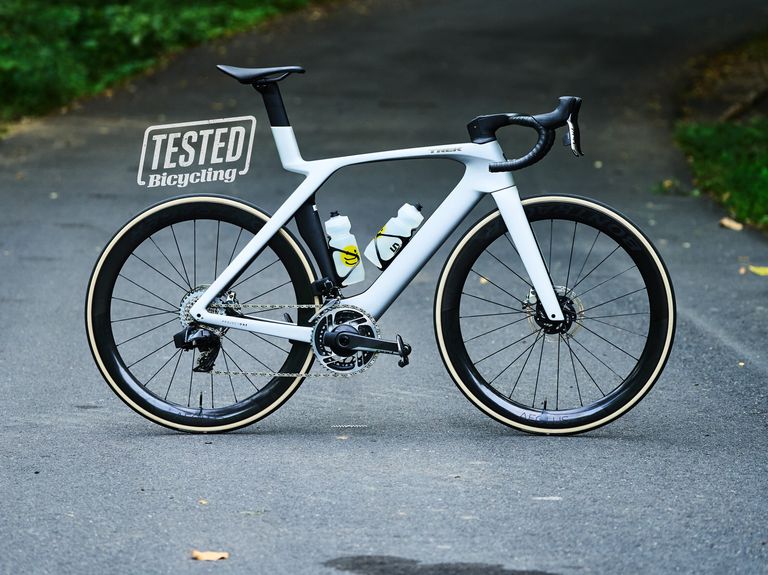
Trek’s Seventh Generation Madone Blends Radical Design and Performance
Trek's new Madone is made to go fast and win races.
Takeaway: A pure-bred road race bike designed to win at the WorldTour level. With its latest Madone, Trek ditches the IsoSpeed decoupler for the new lighter weight, more aerodynamic, and visually radical IsoFlow seatmast.
- Drops weight and gains efficiency.
- Proven geometry remains unchanged from the gen-6 model.
- Flared bars for reduced drag.
- Three SRAM and three Shimano build kit offerings.
Trek Madone SLR 9 eTap Gen 7
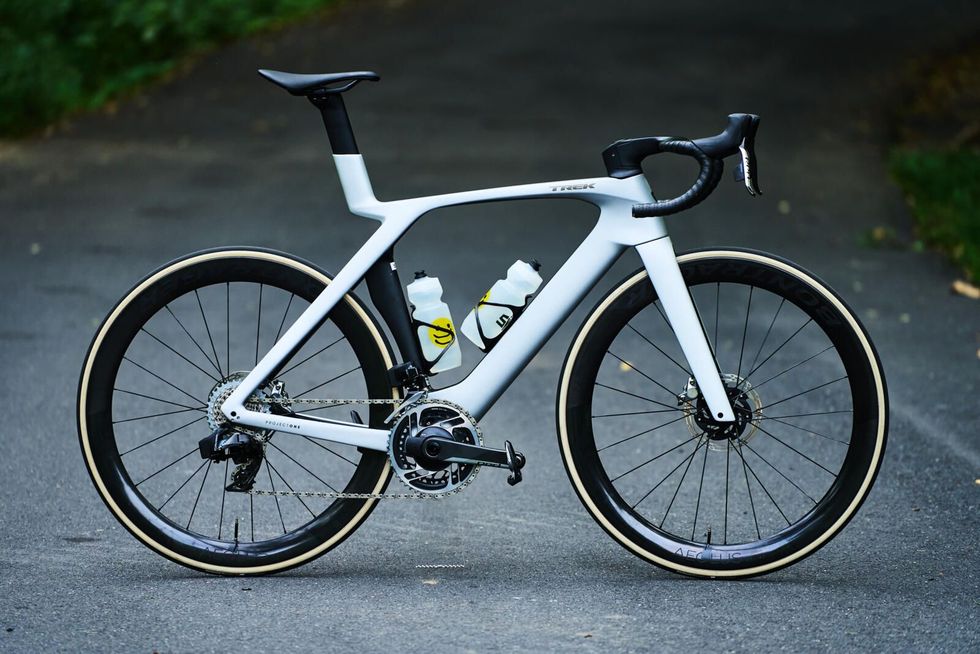
Trek’s Madone is an iconic bike. First launched in 2003, the Madone has evolved massively over the past two decades. The platform’s most significant technological leap came about in 2014 when Trek debuted the Emonda, its dedicated lightweight bike. The Emonda freed the Madone from having to strictly be a light bike, allowing aerodynamics to become its primary focus.
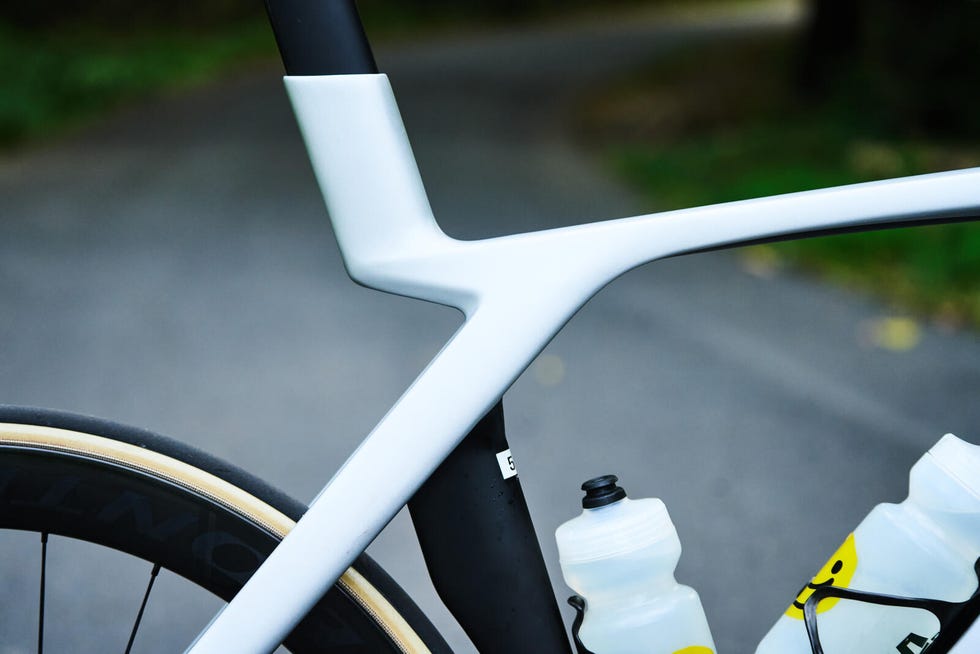
To deal with the notoriously stiff and uncomfortable ride of early aero bikes, Trek’s engineers incorporated an IsoSpeed decoupler, similar to the one used on the brand’s Domane endurance bike. With IsoSpeed, the bike’s seat tube moved independently from the top tube and seat stays, allowing it to absorb road chatter and small bumps. The resulting sixth-generation Madone was incredibly fast against the wind while also receiving praise for its ride quality. But the downside was the added weight.
With the new seventh-generation Madone, Trek set an ambitious goal of reducing weight without sacrificing the comfort and aerodynamic properties of the old bike. The most obvious place to shed grams was the IsoSpeed system, now replaced by the visually striking IsoFlow.
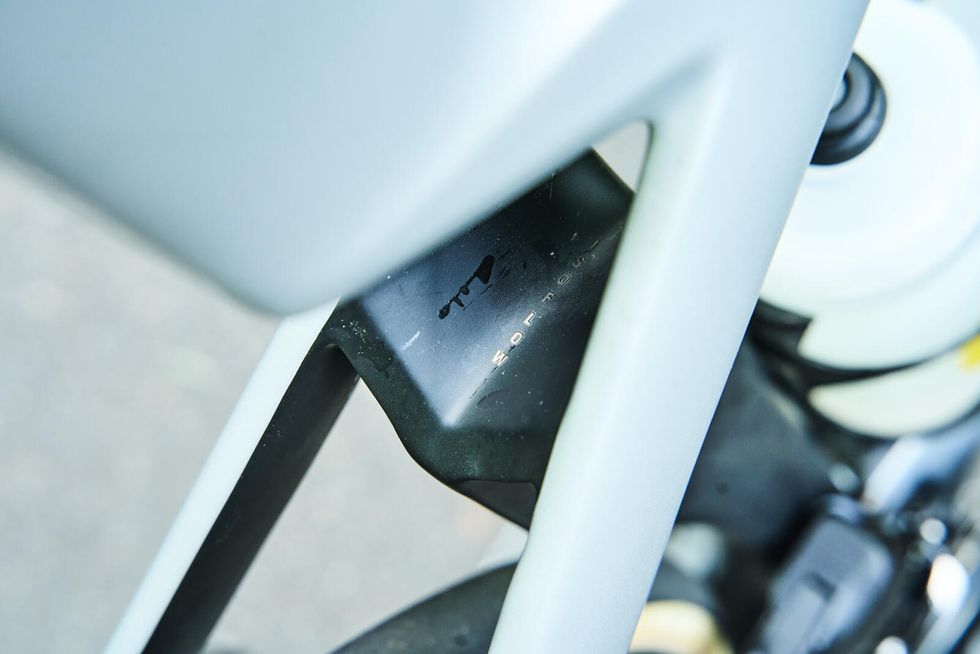
According to Trek, function drove IsoFlow’s development. Aided by computational fluid dynamics (CFD), Trek sought to overhaul the entire aerodynamic package of the Madone. The result was a new generation of Trek’s Kammtail tube shapes, including a smoother head tube, a down tube better optimized for use with and without bottles, a taller bottom bracket area, and the radically designed seat tube.
The new Madone is bold and will not be mistaken for any other bike. But it definitely won’t please riders who prefer a more traditional aesthetic. Trek deserves props for pushing the design language of a bicycle forward. Though its looks won't please everyone, I’m happy to see something other than a cookie-cutter, dropped-stays, aero-ish, all-around-er that seems so popular amongst bike designers.
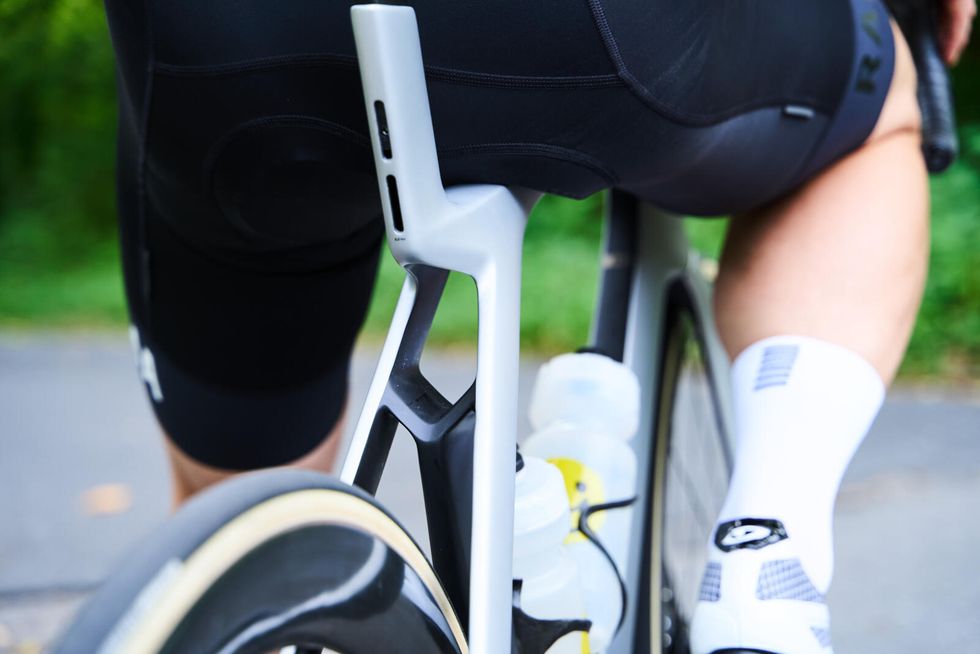
The new seat mast set-up is well-designed, offering easy and consistent height adjustment. But the best detail was in the seat clamp, which allowed for fore and aft adjustment independent of saddle tilt. It’s a small detail that makes setting up the bike much easier, as it allows for minor saddle angle tweaks while leaving it clamped in place.
These changes account for roughly half of the aerodynamic improvements of the new bike. Trek claims that the new Madone saves riders 19 watts of pedaling energy at 28 mph, but just half of that savings (9.3 watts) is from improvements to the frame. The remaining watt savings come from changes to the rider position due to the new flared handlebar design. The Madone SLR handlebar measures a traditional width in the drops, but the bar's flare positions the hoods inward by 30mm. This narrower hood location puts the rider in a more aerodynamic position when riding, thus saving watts.
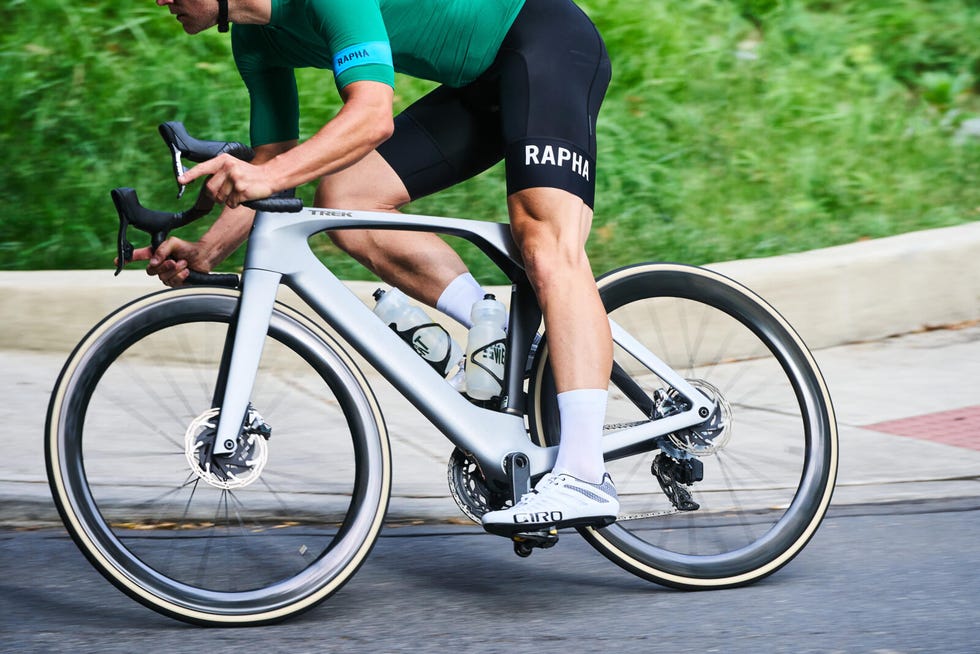
Thankfully for riders that are particular about their contact points, Trek made the new bike compatible with standard 1-⅛” stems so riders can set up their cockpit however they like. However, changing to this would give up a large chunk of the Madone’s claimed aero benefits unless riders choose a narrower-than-normal bar width.
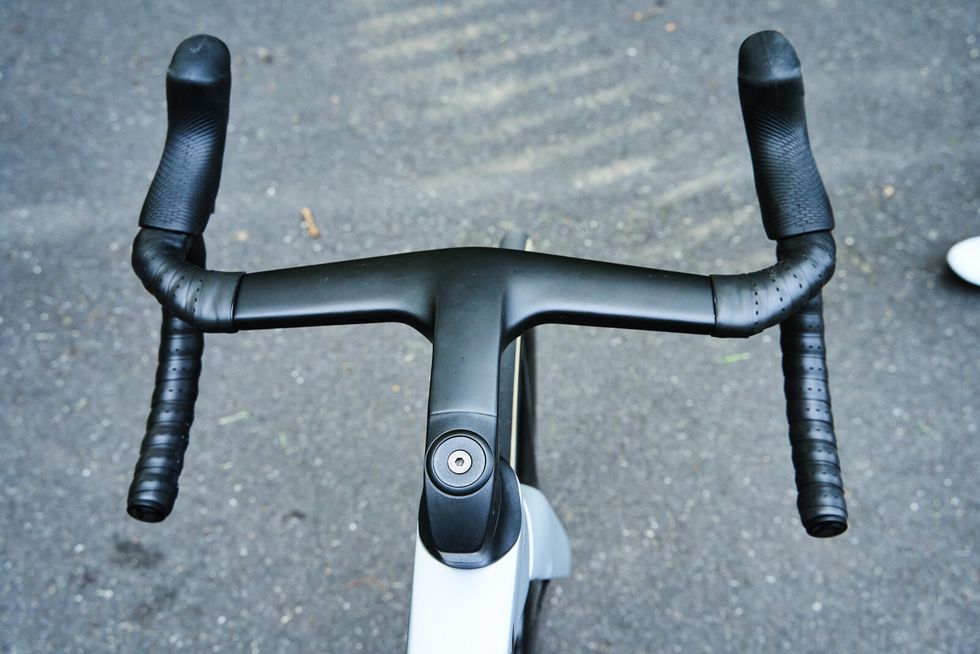
More importantly for pro riders and weight weenies alike, the new frameset is now two-thirds of a pound lighter than its predecessor. Our 56cm test bike came in at 16.2 pounds which is pretty svelt for an aero bike with 51cm deep clincher wheels and disc brakes. A big part of the weight saving comes from the new IsoFlow design. The cantilevered design of the seat tube and IsoFlow allows for engineered flex in the new Madone. This design is how Trek maintains the Madone’s celebrated ride quality.
Trek stuck to its H1.5 geometry as used on the previous generation Madone. It conceived this as a meeting point between Trek’s old racing-focused H1 geometry and its more relaxed H2 angles. The wheelbase on our 56cm bike was only 983mm, nearly a centimeter shorter than the Specialized Tarmac SL7 and Giant’s TCR, and 13 mm shorter than Canyons Ultimate. Combined with a relatively steep 73.5-degree head tube angle and a 58mm trail figure, you get a bike that will dive into corners as hard as you’re willing to push it.
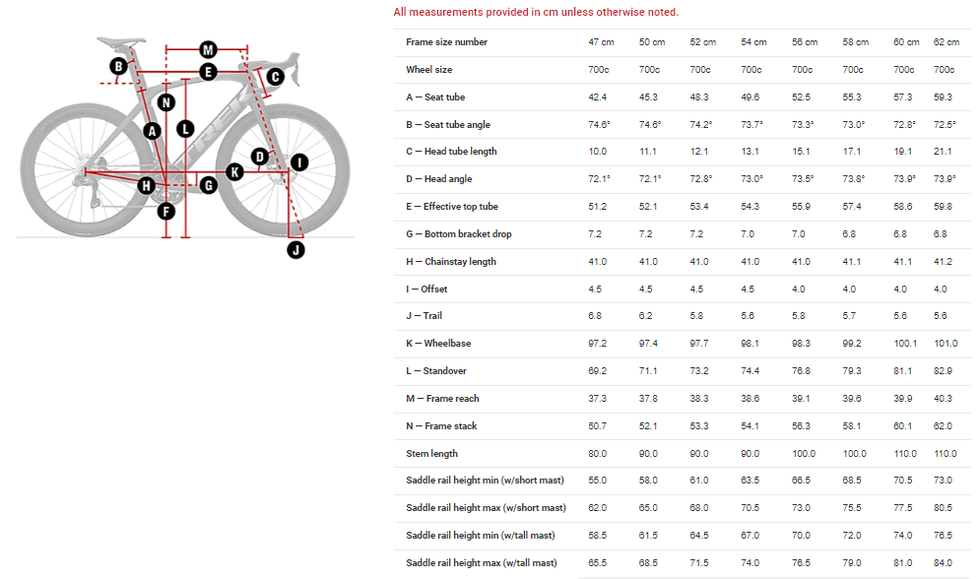
Pricing and Build Options
There is no getting around the fact that as the top-of-the-line road racing bike from Trek, the Madone is not cheap. The move to electronic-only groups on all builds of the Madone does the price no favors as well. While equivalent new models of the Madone only get $200 more expensive for 2023. The entry-level build for the 2023 Madone SLR 6 (with Shimano 105 Di2) comes in at $8,000. That is a $1,100 increase over the 2021 Madone SLR 6 equipped with mechanical-shifting Shimano Ultegra. Top-of-the-range Dura-Ace and Red eTap builds retail for $12,750 and $13,200, respectively.
Trek offers the new Madone in six builds, three with SRAM (Red, Force, and Rival eTap) and three with Shimano (Dura-Ace, Ultegra, and 105 Di2). All of the Madone builds ship with the new integrated cockpit; Dura-Ace and Red-equipped Madones ship with Bontrager Aeolus RSL 51 wheels, while all other builds get the slightly heavier Aeolus Pro 51.
Ride Impressions
The new Madone has an exceptionally smooth ride, lacking the characteristically dead and harsh feel of past aero bikes. But the mellow ride is not without an edge. The Madone does an exceptional job of balancing all-day comfort with the agility and aggression needed to be a top-tier race bike. Under sharp accelerations, especially at speeds under 25 mph, the Madone felt impressively stiff. But accelerations from the high 20s into 30+mph territory felt a bit more muted, which is not inherently a bad trait. A twitchy bike is not helpful when you’re going that fast.
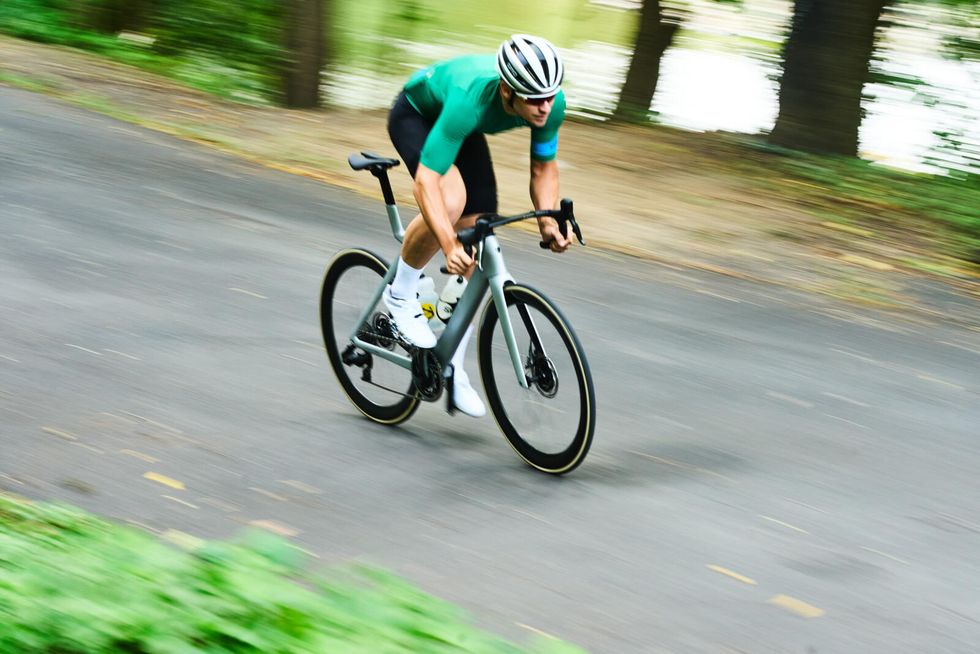
Once the Madone is up to speed, it just wants to stay there. I was impressed with how quickly and easily the bike would get rolling up to 20-22 miles per hour. Combined with the gentle ride quality, it felt like the new Madone would constantly surprise me with how fast I was going. The sensation of speed on this bike is almost sneaky, you get used to what 25mph feels like on a road bike, but on the Madone, the same pace feels calmer and less frantic, at least in a straight line. Throw the Madone into a corner, and it instantly feels sharp and aggressive.
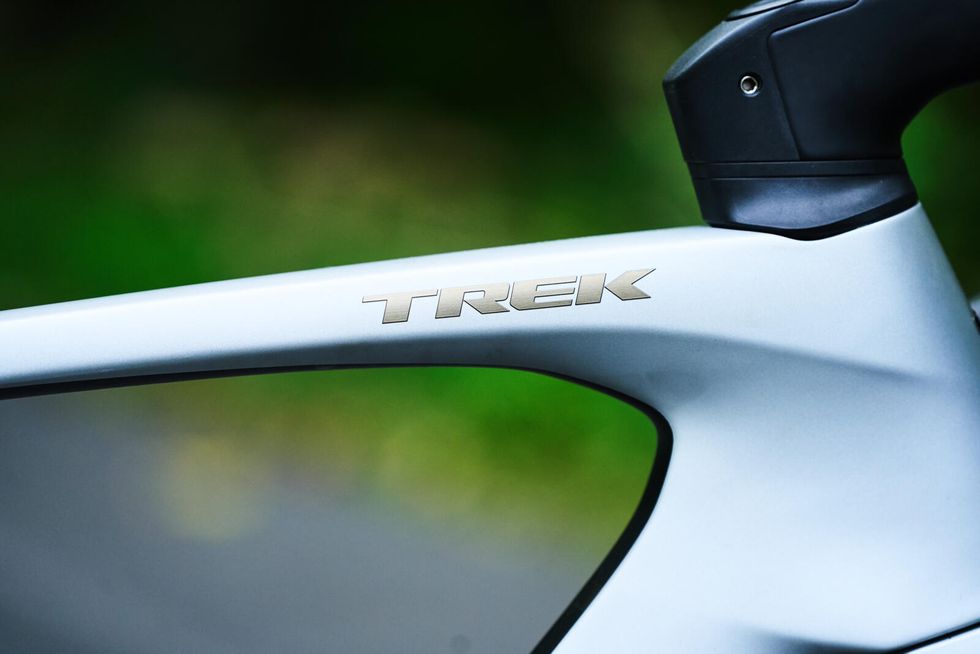
As a racer, I very much enjoyed the Madone’s willingness to corner aggressively, but it did expose one of the bike's faults. The 25mm tires shipped on our test biker are simply too narrow. Trek claims that the Madone can fit tires up to 28mm, but this feels short-sighted. Wheel brands such as Reserve, Enve, and Zipp now design around a 28mm tire as the default width. There is plenty of space in the frame for wider tires, so Trek is likely very conservative in its stock tire choice and maximum tire width recommendation.

Even riding the stock 25mm tires with pressures as low as 65 psi front and 75 psi rear, the narrow rubber still felt like it was missing grip, with the back end stepping out multiple times when exiting a corner. It was also discouraging that a road bike selling for over thirteen thousand dollars does not ship with tubeless compatible tires or the proper bits to easily set up the Bontrager Aeolus RSL 51 wheels as tubeless.
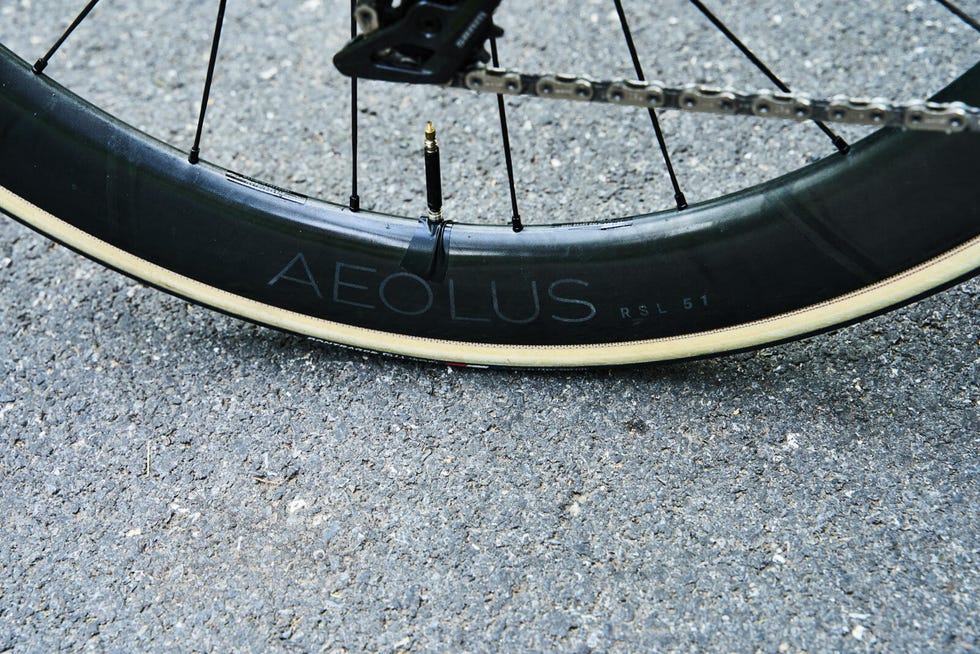
Another thing missing from the bike was a computer mount. Usually, it is not something I would expect a brand to include, but the bars require a Trek-specific part. Given the complete bike’s price tag and Trek’s integrated cockpit, it should come with a computer mount. I sourced a Blendr mount from my local Trek store, but it was not without its issues (it rattled loose during a training crit and fell off). It is possible to entirely avoid this proprietary part by using a standard 1-⅛” stem and handlebar but making this swap would involve cutting hydraulic houses and would not be cheap.
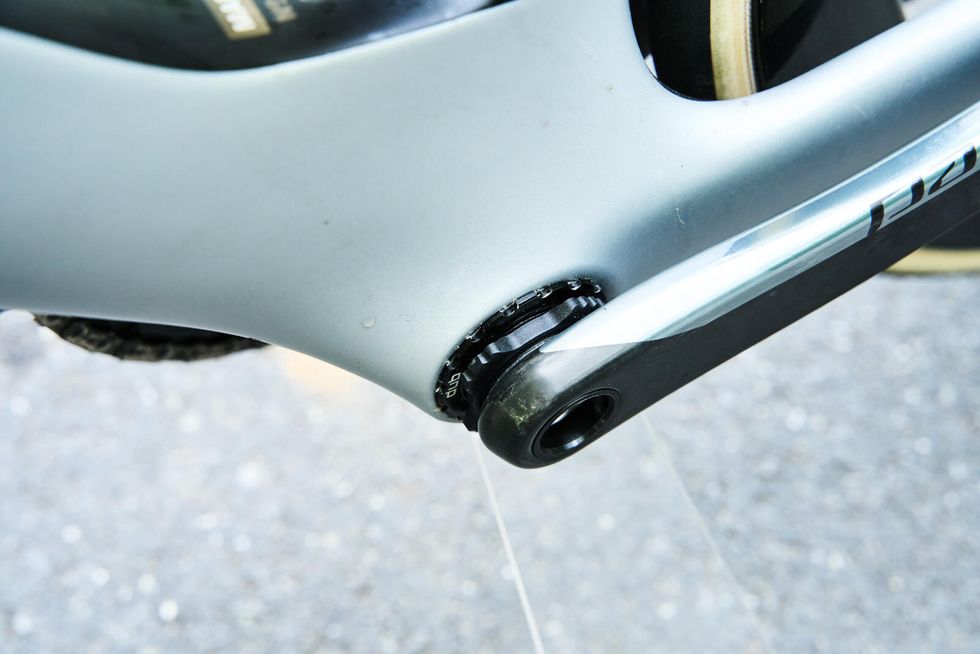
I was also pleased to see Trek continue using the T47 bottom bracket standard on this bike. A threaded bottom bracket shell is a win for mechanics everywhere. However, the latest Madone is now only compatible with electronic shifting. We can argue whether it's bike brands like Trek (releasing electronic-only high-end bikes) or component brands like SRAM and Shimano (no longer developing high-performance mechanical road groupsets) or if consumers are just voting with their dollars. But the result is that we are witnessing the death of mechanical shifting from high-end racing bikes. And that's a little bit sad.
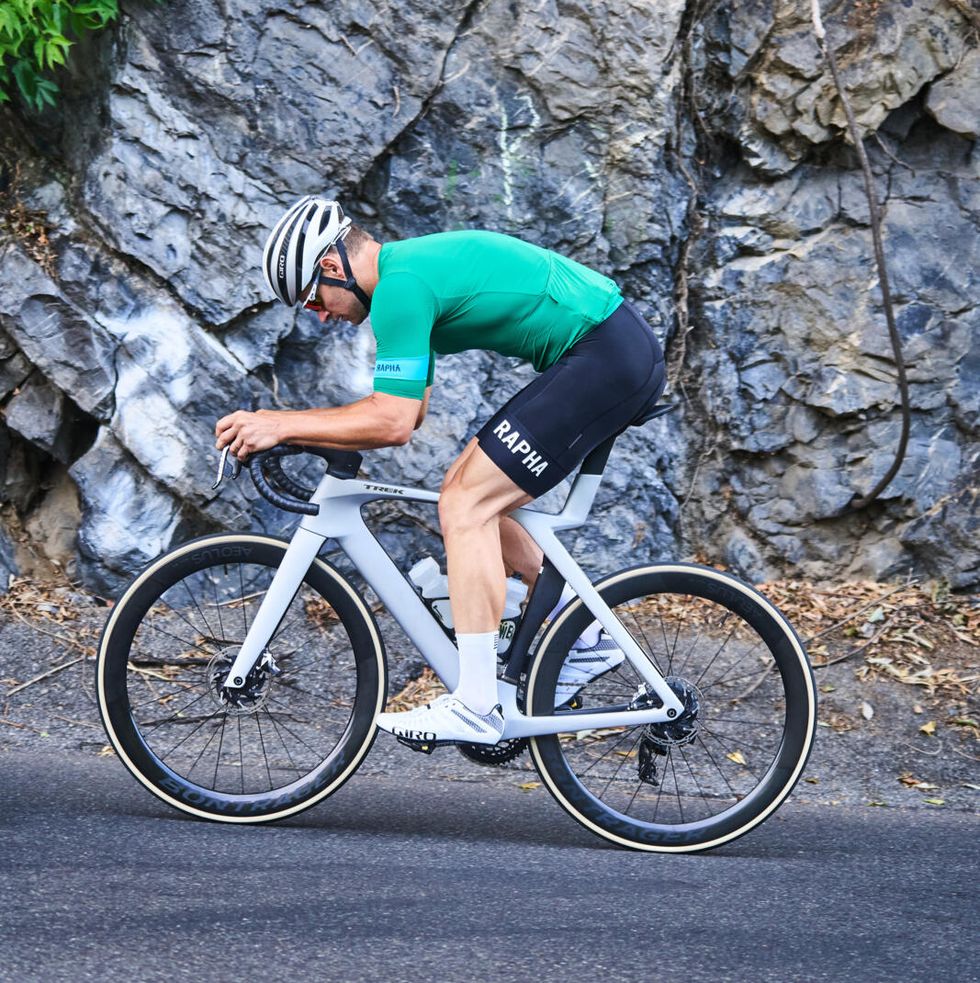
Ultimately this Madone, like the versions that have come before, was conceived and designed to meet the needs of World Tour professionals. Everything about the bike, from how it rides, to how much it costs, reflects that niche design requirement. Aside from a small pool of professional racers, very few people will likely make the most of this bike’s capabilities. It’s analogous to the way most drivers will not benefit from driving a Formula One car. It’s a pure-bred race bike designed to win at the highest level. If that’s what you’re looking to do—or you just want to own a bike with that ability—then the Madone should be on your shortlist.
Test Editor Dan Chabanov got his start in cycling as a New York City bike messenger but quickly found his way into road and cyclocross racing, competing in professional cyclocross races from 2009 to 2019 and winning a Master’s National Championship title in 2018. Prior to joining Bicycling in 2021, Dan worked as part of the race organization for the Red Hook Crit, as a coach with EnduranceWERX, as well as a freelance writer and photographer.


Member Exclusive

How to Get Better Sleep Like the Pros

Your Guide to Staying Safe on Strava

How to Fix an Anterior Pelvic Tilt
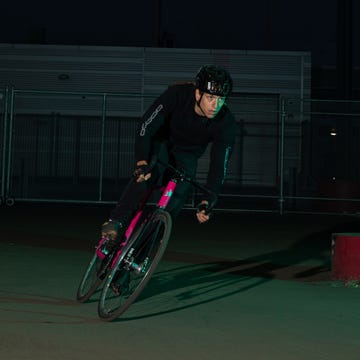
How to Be a Rider—With Li King

Glute Bridge Exercises for a Stronger Pedal Stroke

What You Need to Know About Crankarm Length

The Best Postride Cycling Stretches

Everything You Need to Know About Rouvy

The Benefits of Infrared Saunas for Cyclists

What to Know About VO2 Max as You Age

Everything to Know About Clean Protein Powder

Century Ride Tips for Success
- off.road.cc
- Dealclincher
- Fantasy Cycling
Support road.cc
Like this site? Help us to make it better.
- Sportive and endurance bikes
- Gravel and adventure bikes
- Urban and hybrid bikes
- Touring bikes
- Cyclocross bikes
- Electric bikes
- Folding bikes
- Fixed & singlespeed bikes
- Children's bikes
- Time trial bikes
- Accessories - misc
- Computer mounts
- Bike bags & cases
- Bottle cages
- Child seats
- Lights - front
- Lights - rear
- Lights - sets
- Pumps & CO2 inflators
- Puncture kits
- Reflectives
- Smart watches
- Stands and racks
- Arm & leg warmers
- Base layers
- Gloves - full finger
- Gloves - mitts
- Jerseys - casual
- Jerseys - long sleeve
- Jerseys - short sleeve
- Shorts & 3/4s
- Tights & longs
- Bar tape & grips
- Bottom brackets
- Brake & gear cables
- Brake & STI levers
- Brake pads & spares
- Cassettes & freewheels
- Chainsets & chainrings
- Derailleurs - front
- Derailleurs - rear
- Gear levers & shifters
- Handlebars & extensions
- Inner tubes
- Quick releases & skewers
- Energy & recovery bars
- Energy & recovery drinks
- Energy & recovery gels
- Heart rate monitors
- Hydration products
- Hydration systems
- Indoor trainers
- Power measurement
- Skincare & embrocation
- Training - misc
- Cleaning products
- Lubrication
- Tools - multitools
- Tools - Portable
- Tools - workshop
- Books, Maps & DVDs
- Camping and outdoor equipment
- Gifts & misc

It's hard to explain the system without using the overused phrase 'vertical compliance', but that's what's on offer here: extra vertical compliance.
Here's a video that explains it from when Trek launched the Domane, the bike that first featured the IsoSpeed decoupler.
So, does the IsoSpeed decoupler work?
In short, yes. The longer version is: yeeeees.
Many aero bikes are, let's face it, fairly uncomfortable. It's hard to persuade their deep-profiled tubes to flex at all in pursuit of comfort. Trek's IsoSpeed system is a clever solution.
If you're familiar with riding a full suspension mountain bike, it's nothing at all like that. Not in the same county. But the IsoSpeed system does smooth over the lumps and bumps to a n appreciable degree. The effect is subtle, but it is noticeable. If you get the chance, take a Madone 9 Series on a test ride and you'll feel it for yourself.
As with most other bikes, you can fit headset spacers to fine-tune the height of the stem, although they're a clam shell design specific to the Madone 9 Series. You can fit larger tyres to add more comfort, too; the bike will take a 28mm width.
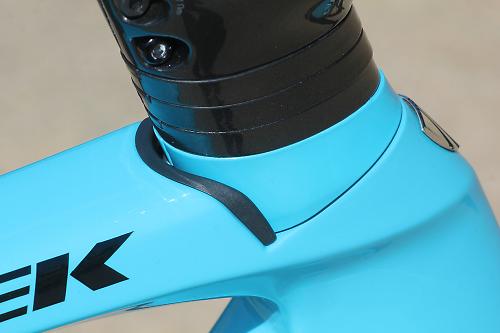
Aerodynamics
The Madone 9 Series' other major features are aimed at aerodynamic efficiency. Trek says that this is the fastest aero bike out there. We're upfront about the fact that we can't test aerodynamics, but we can explain what Trek has brought to the party here.
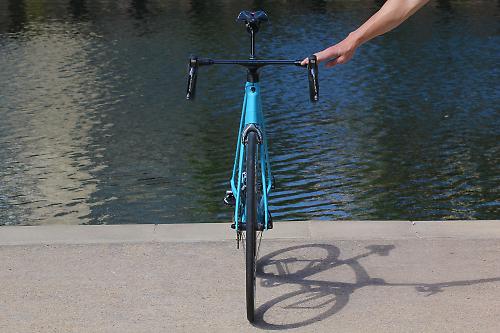
Frame tubes, fork legs and the seatmast are made to Kammtail profiles (Trek calls its profiles Kammtail Virtual Foil, or KVF). In other words, Trek has designed them to slip through the air with as little drag as possible, then chopped the back of those profiles off square to retain most of the aero performance while saving weight, avoiding handling issues in crosswinds, and remaining within the UCI's bike design rules.
One of the most eye-catching features is the front end where the direct-mount centre-pull brake is integrated into the fork. The cable is fully internal, routed down the front of the proprietary steerer tube and through the head tube.

The brakes are from Trek's in-house Bontrager brand and they're designed specifically for this bike. The top of the front calliper is hidden within the head tube. There's not enough space in there for the calliper to move when the fork is turned so Trek has developed what it calls 'Vector Wings' – small flaps that flip up to allow the movement.
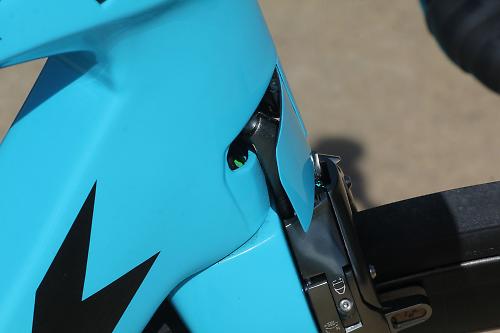
Those Vector Wings look quite fragile but I didn't manage to catch them on anything during testing, still less damage them. They are replaceable if you do destroy them in a stack.
The idea of all this front end integration is to ensure continuous airflow towards the down tube.
The top section of the Madone XXX integrated bar/stem is KVF-shaped too, and it's surprisingly comfortable. It fills your palm so there's very little pressure when you rest your hands up there, and the rearward edge is blunt enough that it doesn't dig into the space between your thumb and index finger.

Trek reckons that the new bar saves 34g of drag (the average over 0-20 degrees of yaw) compared with the current Bontrager XXX Aero bar (normalised to 30mph).
The water bottles have been sited to minimise drag, with the one on the seat tube positioned as low as possible, and Trek says that even the 3S chain keeper (the little device that stops the chain coming off the inner chainring) has been designed with aerodynamics in mind.
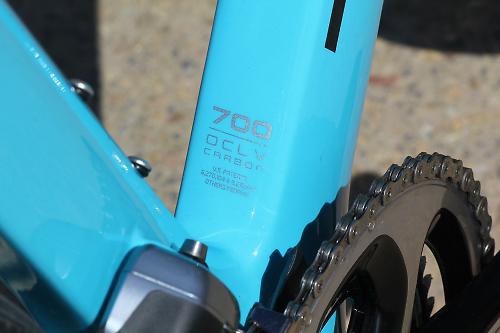
The new Madone also features a neat little design on the down tube that Trek calls the 'Control Center'. This allows you to make gear adjustments. It houses the front derailleur adjustment dial on bikes with mechanical setups, and it's where the Di2 battery and junction box live on bikes, like our test model, with electronic gears (it is not compatible with Campagnolo EPS). You get access to the trim button through a window in the top. A one-tab release exposes the charging port.
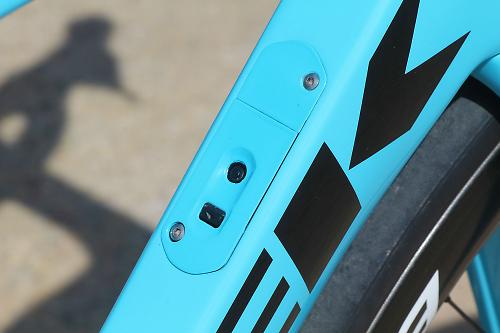
It's about time more brands started hiding that Di2 junction box, and Trek has come up with a great solution while keeping it highly accessible. Full marks!
The rear brake is in a traditional position on the seatstays (higher end models of the last Madone design had a chainstay-mounted brake, but Trek has re-sited it for convenience), and like the front brake it's a centre-pull design, the cable passing through the top tube with a stop at the seat tube.
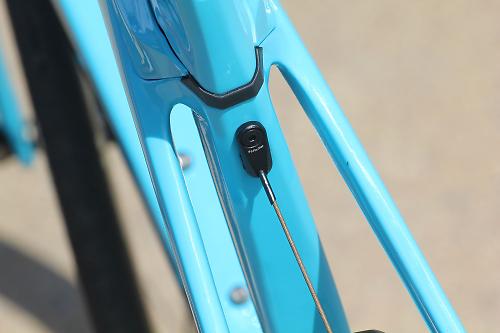
So, that's a whole lot of aero tech! And this is a very condensed version, believe it or not. As I mentioned, Trek says that all this adds up to make the Madone 9 Series the most efficient aero road bike out there. Other brands make similar claims for their own bikes, of course. I'd suggest you read Trek's white paper for the full in-depth explanation before you spend your cash.
I spoke a lot about the Madone 9 Series' comfort up top, but that's by no means its only skill. This bike is freaky in that it manages to combine soft seating with a super-fast feel.
You do pay a slight weight penalty for the IsoSpeed system. Putting one tube within another tube and adding a pivot has to add a little weight – there's no such thing as a free lunch – but Trek still claims that a 56cm Madone in an H1 geometry comes in at 950g. Our complete 58cm bike weighs 7.0kg (15.4lb) on the button. Okay, that's not as superlight as some other high-end race bikes out there – Trek's own Emonda is lighter, for example – but it's still pretty light, and aerodynamic efficiency beats a light weight in most situations.
The Madone feels quick and responsive as soon as you climb aboard and fire your legs into action. Our bike – not a standard model but a similar build to the 9.9 (see below) – shoots up to speed quickly and maintains that speed beautifully.

Climbing feels great on this bike. It's punchy on the short, sharp climbs, zippy when you get out of the saddle, and it feels good when you sit down for a long slog with your hands resting on the top of the Madone XXX integrated bar/stem (see above).
Descending is a real buzz. That's partly because the IsoSpeed system helps skim over any bumps and holes in the road, and partly because the bike as a whole is great for pinning it through the tight stuff and high-speed changes of line.
I wouldn't say that the centre-pull Bontrager brakes are right up there with Shimano Dura-Ace in terms of all-out power, but modulation is good so you're not making much of a compromise here.
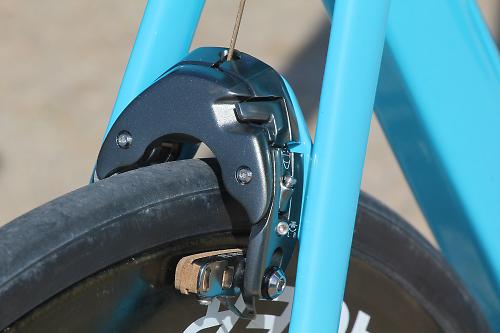
When it comes to sprinting, the frame feels taut and efficient but that handlebar isn't the stiffest ever. I've found this before with bars that have ultra-squashed top sections. When you're out of the saddle and your hands are on the drops, you can get a bouncing sensation up front as that slim carbon-fibre profile flexes slightly. It's purely down to the bar rather than anything to do with the frame or fork, and I only had this happen when I was giving it my best Greipel moves. Don't get me wrong, it's not the most flexy bar I've ever encountered, but it's not the stiffest either.
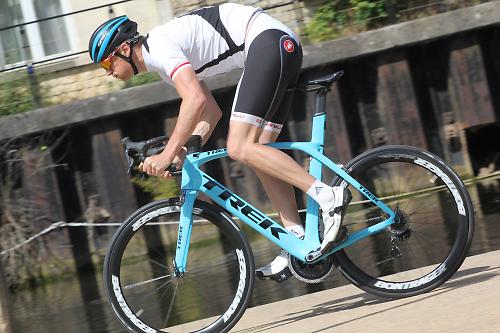
Overall, though, the Madone behaves superbly, the best feature being that its high level of comfort keeps you feeling fresher and up for the fight that much longer.
How easy is it to change a brake cable on a Madone 9 Series bike? It's a more complicated job than on a standard bike because both run almost completely internally from the lever to the calliper.
There are no barrel adjusters for the brakes either – you have to use a diddy Allen key to wind each brake pad closer to the rim, so that's something best done at home rather than out on the road.
Taking the bike apart for travel is a bit more complicated than usual too, although Trek gives you full instructions on how to do it painlessly.
For those reasons, living with a Madone 9 Series bike might be a touch more difficult than usual, but it's nothing you can't handle.
One other potential downside, depending on your point of view, is that many replacement parts you buy will have to come from Bontrager. The brakes are proprietary, for example, and so is the fork, the handlebar and the seatmast. You won't be able to shop around and look for deals from other brands.
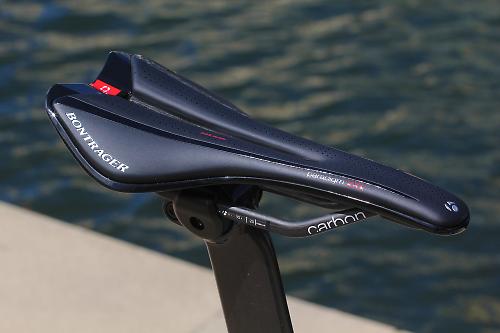
Our Madone is built to Trek's low and stretched H1 geometry, although most of the range (see below) come in Trek's H2 fit – slightly less low and stretched but still race-focused.
To put some figures on that, a 56cm Madone 9 Series in an H1 fit has an effective top tube of 56cm and a head tube of 14cm. The same bike in an H2 fit has the same length top tube but a 17cm head tube. The main difference between them is in the stack height (the vertical distance between the bottom bracket and the top of the head tube): 54.9cm versus 57.7cm.

The Bontrager 9 Series bikes are hi-tech and they come with hi-tech price tags.
The most accessible Trek Madone 9 Series bike is the 9.2, equipped with a Shimano Ultegra mechanical groupset and Bontrager's new Paradigm Elite wheels. It's £4,500.
The 9.5 with a Shimano Dura-Ace mechanical groupset and Bontrager Aura wheels is £6,000 and the Madone 9.9 (available in standard and women's versions) with a Shimano Dura-Ace Di2 groupset and Bontrager Aeolus 5 D3 wheels is £9,000.
All of these bikes come with H2 fit frames.
The Madone Race Shop Limited model, with a frame made from a higher grade of carbon fibre and built to an H1 geometry, Shimano Dura-Ace Di2 and Bontrager Aeolus 5 D3 wheels, is £9,750.
An H2 frameset is £3,350 while a Race Shop Limited H1 frameset (with that higher grade of carbon fibre) is £4,100.
The bike we have here is essentially the Madone Race Shop Limited model, but Trek painted it in road.cc colours for our review. If you happened to want this colour (or any other colour/finish), you'd need to go through Trek's Project One programme that allows you to customise both the spec and the finish.
As cyclists we get used to having hyperbole thrown our way by bike brands releasing what are actually pretty ordinary bikes, but the Madone 9 Series backs up Trek's claims with a fabulous performance out on the road. This is a bike that's genuinely very different from the norm – and not just different for the sake of being different. The technology on display here contributes to a bike that's very fast and very comfortable.
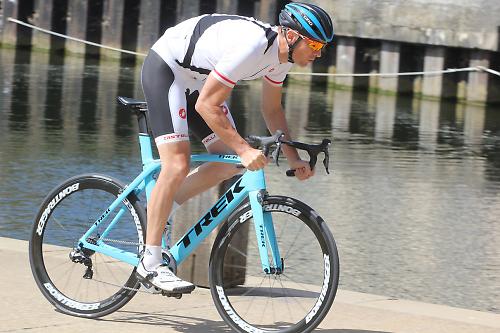
If I had a bottomless pot of cash available to buy a high-end race bike (if only!), this is where I'd be spending my money right now. If you do have the money and can live with the fact that maintenance in some areas is more complicated than usual, the Madone 9 Series deserves a place somewhere near the top of your wish list.
Stunningly good bike that offers a fabulous mix of speed and comfort, although, as usual, the top-end tech comes at a price
road.cc test report
Make and model: Trek Madone 9 Series Project One
Size tested: 58cm, custom finish
About the bike
State the frame and fork material and method of construction. List the components used to build up the bike.
Frame 700 Series OCLV Carbon, KVF (Kammtail Virtual Foil) tube shape, Madone IsoSpeed, Micro-adjust seat mast, E2, BB90, invisible cable routing, Control Centre, precision water bottle placement, Aero 3S chain keeper, DuoTrap S compatible
Fork Madone KVF full carbon, carbon E2 asymmetric steerer, carbon dropouts, integrated brake and stem
Sizes 50, 52, 54, 56, 58, 60, 62cm
Frame fit H1
Wheels Bontrager Aeolus 5 TLR
Tyres Bontrager R4 Hard-Case Lite, 220tpi, aramid bead, 700x25
Shifters Shimano Dura-Ace Di2, 11-speed
Front derailleur Shimano Dura-Ace Di2, braze-on
Rear derailleur Shimano Dura-Ace Di2
Crank Shimano Dura-Ace, 53/39 (double)
Cassette Shimano Dura-Ace, 11-28, 11-speed
Chain Shimano Dura-Ace
Saddle Bontrager Paradigm XXX, carbon rails
Seatpost Madone micro-adjust carbon seatmast cap, 25mm offset
Handlebar Madone XXX Integrated Bar/Stem, KVF profile, Invisible cable routing, OCLV carbon, VR-CF
Stem Madone XXX Integrated bar/stem, OCLV Carbon, 7-degree, aero top cap pocket, w/Blendr computer & light mounts
Headset Madone integrated, stainless cartridge bearings, sealed, 1-3/8in top, 1.5in bottom
Brakeset Madone aero, integrated, direct mount
Bar tape Bontrager Supertack tape
Tell us what the bike is for, and who it's aimed at. What do the manufacturers say about it? How does that compare to your own feelings about the bike?
It's a full-on race bike. Trek divides its road line into three: Emonda for those wanting light weight, Domane for those wanting comfort, Madone for those wanting aerodynamics.
Trek says: "Madone is the ultimate fusion of power, aerodynamics, ride quality and integration. There are no two ways about it: the first true super-bike is a marvel of road bike engineering.
"Every detail of Madone is engineered for unprecedented futuristic performance, ride quality and efficiency, putting every single watt you earn toward demolishing your competition."
Frame and fork
Tell us about the build quality and finish of the frame and fork?
Excellent quality.
Tell us about the materials used in the frame and fork?
Our frame and fork are made from 700 Series OCLV carbon fibre. In truth, the 600 used for most of the other 9 Series bikes is very similar in terms of properties and weight.
Tell us about the geometry of the frame and fork?
Ours came in Trek's low and stretched H1 fit. 9 Series Madones are also available in a slightly more relaxed H2 fit (see review for details).
How was the bike in terms of height and reach? How did it compare to other bikes of the same stated size?
The H1 fit is fairly low. If your back doesn't like an aggressive position, go for the H2.
Riding the bike
Was the bike comfortable to ride? Tell us how you felt about the ride quality.
Very comfortable. That's one of the bike's key characteristics.
Did the bike feel stiff in the right places? Did any part of the bike feel too stiff or too flexible?
It felt stiff around the bottom bracket and the head tube. The only place I noticed a lack of stiffness was in the handlebar when I was sprinting; there was a small amount of bouncing there when riding hard out of the saddle with my hands on the drops.
How did the bike transfer power? Did it feel efficient?
Yes, it felt efficient around the bottom bracket and through the centre of the bike.
Was there any toe-clip overlap with the front wheel? If so, was it a problem?
A small amount. Not a problem.
How would you describe the steering? Was it lively, neutral or unresponsive? Neutral to lively.
Tell us some more about the handling. How did the bike feel overall? Did it do particular things well or badly?
I enjoyed descending on this bike thanks to the IsoSpeed decoupler and good manoeuvrability.
Which components had the most effect (good or bad) on the bike's comfort? would you recommend any changes?
The main feature that leads to the bike's comfort is the frame's IsoSpeed decoupler.
Which components had the most effect (good or bad) on the bike's stiffness? would you recommend any changes?
I thought the handlebar could have been stiffer, but it's proprietary. I'd only want to change it if I was a sprinter.
Which components had the most effect (good or bad) on the bike's efficiency? would you recommend any changes?
The wheel stiffness is good and the same goes for the chainset.
I thought the handlebar could have done with being stiffer for sprinting.
The drivetrain
Wheels and tyres, your summary.
Did you enjoy riding the bike? Yes
Would you consider buying the bike? If I had the money, no doubt about it.
Would you recommend the bike to a friend? Yes
Use this box to explain your score
This exceptional bike boasts some novel tech that really moves the ride forward. So many bikes are simply variations on a theme, but Trek has brought genuinely new tech first to the Domane and now to the Madone. This bike is a clear 9 for performance.
Unfortunately, all that tech adds to the price and it'll take a while to trickle down to more affordable levels.
Overall rating: 9 /10
About the tester
Age: 43 Height: 190cm Weight: 75kg
I usually ride: My best bike is:
I've been riding for: Over 20 years I ride: Most days I would class myself as: Expert
I regularly do the following types of riding: commuting, club rides, sportives, general fitness riding
Help us to fund our site
We’ve noticed you’re using an ad blocker. If you like road.cc, but you don’t like ads, please consider subscribing to the site to support us directly. As a subscriber you can read road.cc ad-free, from as little as £1.99.
If you don’t want to subscribe, please turn your ad blocker off. The revenue from adverts helps to fund our site.
Help us to bring you the best cycling content
If you’ve enjoyed this article, then please consider subscribing to road.cc from as little as £1.99. Our mission is to bring you all the news that’s relevant to you as a cyclist, independent reviews, impartial buying advice and more. Your subscription will help us to do more.
Mat has been in cycling media since 1996, on titles including BikeRadar, Total Bike, Total Mountain Bike, What Mountain Bike and Mountain Biking UK, and he has been editor of 220 Triathlon and Cycling Plus. Mat has been road.cc technical editor for over a decade, testing bikes, fettling the latest kit, and trying out the most up-to-the-minute clothing. He has won his category in Ironman UK 70.3 and finished on the podium in both marathons he has run. Mat is a Cambridge graduate who did a post-grad in magazine journalism, and he is a winner of the Cycling Media Award for Specialist Online Writer. Now over 50, he's riding road and gravel bikes most days for fun and fitness rather than training for competitions.
Add new comment
23 comments.

Hi all , I am flying to Italy and need a box for my 9 SRS anyone help , I can't remove aero bars or front brake brgds Ade
- Log in or register to post comments
Hey, can I ask you the saddle height on this 58 cm frame ? Can't figure out how a 58cm would look like with my 78,8cm saddle height (i hesitate between 56 and 58 on a H1 frame)
This is best porn I've seen in a while.
I just wish it came at a smidgeon of the price.
Any mechanics out there tell me whether they could get Campag EPS to "work" on this frame?
Not keen on the colour.
I think it's a lovely looking bike, and hats off to Trek for trying to do something genuinely interesting. In the flesh it's a striking looking ride. Possibly a tad overengineered, but I look forward to the one they'll release in a couple of years that's going to be simpler and cheaper.
So, is the Domane going to go then? Or will I just be sold to sportivistes??
People keep refering to new tech, but those brakes are essentially a rework of Campag Delta. Not really trying to dis Trek, but there's a whole lot of marketing going on here...
stealth wrote: So, is the Domane going to go then? Or will I just be sold to sportivistes?? People keep refering to new tech, but those brakes are essentially a rework of Campag Delta. Not really trying to dis Trek, but there's a whole lot of marketing going on here...
Don't worry! Domane is definitely not going anywhere. The Madone is a very different platform to suit a different rider type. Although it has the IsoSpeed, it's not as compliant as the Domane.
We now have three different bikes to match the needs of different riders. Some want to maximise comfort without sacrificing performance. That's Domane. Some want to be as aero as possible (and still comfortable), that's Madone. And for those who prioritise weight, that's Emonda.
TrekBikesUK wrote: stealth wrote: So, is the Domane going to go then? Or will I just be sold to sportivistes?? People keep refering to new tech, but those brakes are essentially a rework of Campag Delta. Not really trying to dis Trek, but there's a whole lot of marketing going on here...
Don't worry! Domane is definitely not going anywhere.
slightly off topic, but are there (imminent) plans to add the Domaine Series 6 disc to the Project One custom builder or release it as a frameset?
I have a domane and can confirm that the Isospeed decoupler really works.
I have only the original 2.0 version with steel frame, but it's the most comfortable bike I've ever ridden - better than my specialized Roubaix Expert which cost well over twice as much.
Not been of fan of trek road bikes for a while - but this is nice!
Lovely colour, horrendous looks.
The iso speed seat post on this is hideously over engineered...3 posts going on there.. Ergo post by LOOK does it better for over a decade....
And no matter what instructions they give you for travel it will be a prick to take apart and reassemble... high end TT bike users have found that and the manufacturers are starting to address it..
and whilst running a new inner cable will be straight forward, replacing the outers will be a shocker... for the home wrench just time consuming, for those using shops bloody expensive...
I'm fine with all of this, top end tech takes more effort and money to run.. but lets not pretend its not the case...
shadwell wrote: The iso speed seat post on this is hideously over engineered...3 posts going on there.. Ergo post by LOOK does it better for over a decade.... And no matter what instructions they give you for travel it will be a prick to take apart and reassemble... high end TT bike users have found that and the manufacturers are starting to address it.. and whilst running a new inner cable will be straight forward, replacing the outers will be a shocker... for the home wrench just time consuming, for those using shops bloody expensive... I'm fine with all of this, top end tech takes more effort and money to run.. but lets not pretend its not the case...
Only two posts. The seat mast is connected to the the same tube that runs down the inside of the aero tube. This inner post is the IsoSpeed.
Travel is not nearly as difficult as with a bike like the Speed Concept. Providing that the bike is assembled properly, there will be enough inner cable and housing to allow the bars to be removed from the stack, and turned sideways.
Experience mechanics can build a complete Madone in around an hour to an hour and a half, once they've followed the manual on the first ones they build, so changing cables isn't as difficult as it might seem.
Ultimately, this bike isn't more or less difficult to build that most others. It's just different, and thus requires mechanics to read the manual and follow it to the letter a few times, and once they've done that it will be pretty seamless to build.
Also, even with the IsoSpeed tube, the complete bike weight of those being used by Trek Factory Racing is 6.9kg.
I really like it, though I think it looks better in the darker shades.
And I don't you can compare any of the major brands top end offerings price-wise with Canyon (or any other direct sales brand).
I think this is a really interesting bike, and particularly like all the integration. They've produced a number of original, distinctive features that do differentiate it. I'm sure some of these features filter down eventually, but I think £3,350 for a frameset is about what we'd all expect. Isn't it?
I've got a 5 series madone and just love the way it rides, particularly going downhill.
I admire the degree of innovation and I am slowly falling in love with the Madone although being a Specialized Venge rider. What could have been the motivation behind going through all the pain and designing such a new brake combo, especially when considering that disc brakes are about to make it to the peloton? Can anybody tell?
It's not even got a back light!
So I just have to comment here to win one, right?
Just sold a Domane (brilliant bike) and started racing this year so looking for a top spec race frame for 2016. I'm Treks target market-sold on the isospeed. Am I buying a Madone.....NOPE!
That price is RIDICULOUS. £4300 for the frame the pro's race.
Canyon Ultimate SLX for me (a frame the pro's race) £1600.
The Aeroad may be a better comparison (more aero) but is only £500 more and that includes the aero bar/stem.
Ginsterdrz wrote: That price is RIDICULOUS. £4300 for the frame the pro's race.
You can get a 9 Series Madone in Project One, with full Ultegra and aero wheels for around £5300. That can go lower still if you use RXL wheels instead of Aura wheels. Project One will go live for the Madone on Thursday, so you can play around with configurations yourself.
Just out of curiousity, what do you think would be a reasonable price for something that has so much new tech on it?
TrekBikesUK wrote: Just out of curiousity, what do you think would be a reasonable price for something that has so much new tech on it?
new tech is surely part and parcel of improving /updating bike models; some years see a bigger change than others, sometimes incremental, sometimes more substantial. While Trek has reduced prices on many 2016 bikes, I'm surprised to see such a price hike on the new top Madone compared to the previous top end 7.9 frameset which is currently listed at £3000 on your website.
Latest Comments
I've not been over that one...yet! Sounds like another great day! Keep on keepin' on.
Racists or anti-Islamism or lack of empathy? You seem a little confused.
Can't see it happening; certainly not under this government with it's commitment to active travel and green policies. An increase in cycling is key...
I've heard back - basically the same email as reported here....
I went the other way and threw 3 transfers at it. Got the winner but other 2 were wasted.
I have owned a pair of Fulcrum 3s. They won't let you down and are a good choice.
I have a Marin Nicasio 2 that I bought to use as a commute bike along "smooth" gravel paths, some dodgy roads and some great roads. Running 32mm...
Well that me laugh, a lot.......!...
Yes, but why spoil a good pun?
That's a great tip. I also have a set of the Ortleib packing cubes which are specifically made for these panniers and they work fantastically for...
Related Reviews

Merida Scultura 4000 2024
Fun, fast and comfortable race bike at an affordable price
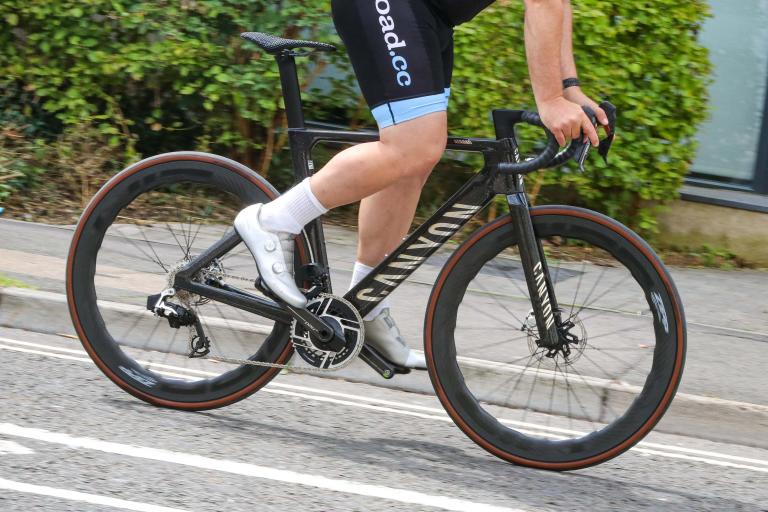
Canyon Aeroad CFR AXS 2024
Stunning performance right across the board from this versatile aero machine
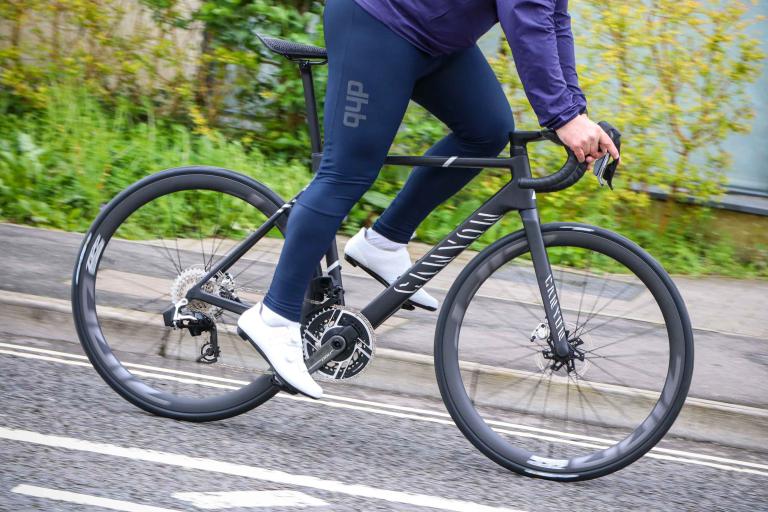
Canyon Ultimate CFR AXS 2024
Stunning performance thanks to excellent stiffness, a very low weight and a sublime ride quality

Enigma Eikon Frame 2024
Excellent in terms of the ride, and the handmade build quality is stunning
Trek Madone SLR 7 Gen 7 review - very fast and very expensive
The latest Madone may have a hole through the seat tube but we couldn't find any in its performance
- Sign up to our newsletter Newsletter

The Trek Madone is an absolute speed weapon. The deep-section tubes with the radical-looking cutout help, as does the newly designed handlebar, which is narrow and provides good wrist support for the ‘aero-hoods’ position. And then there are the 51mm deep Bontrager Aeolus Pro wheels. The handling is incredibly fast, responding to the smallest shift in weight and the tiniest tweaks of the bars, and ride quality is so impressive that it’s almost possible to overlook things like the narrow tires and ungenerous clearance - but you can’t ignore the price. If you have the budget and want a WorldTour-level race machine with exceptional handling and ride feel, this is the bike.
Super smooth ride
Light for an aero bike
Striking aesthetics
Limited adjustability
No power meter
You can trust Cycling Weekly. Our team of experts put in hard miles testing cycling tech and will always share honest, unbiased advice to help you choose. Find out more about how we test.
- Construction
Value and conclusion
For this latest Gen 7 version of the Madone, Trek’s aero bike, the US brand removed the IsoSpeed Decoupler of the previous Gen 6 model and left, in its place, a big hole.
OK, it’s not the crude, reductionist approach it sounds like.
The old bike’s micro-adjustable suspension system at the top tube/seat tube juncture added weight and was mostly redundant since Trek discovered most riders would ‘set and forget’.
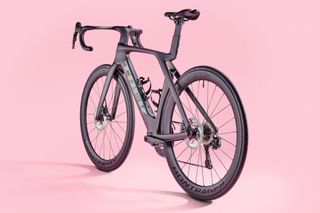
And by radically reengineering the frame Trek claims to have saved 300g, and says the new bike is almost 20 watts faster than its predecessor, which equates to 60 seconds per hour when ridden at 45kph. It looks radical, too - always a good thing for a new bike.
In our 2023 Race Bike of the Year grouptest we awarded the Madone 'best aero bike' against competition that included the Cervélo S5, the Canyon Aeroad and the Giant Propel.
However, over $9K / £10K for an Ultegra bike has to be unchartered territory - so how does it compare overall to the best road bikes ?
Trek Madone 7 Gen 7: construction

Let’s peer a bit more closely into that hole or, to give it its real name, IsoFlow. The aerodynamic explanation for it is: “It’s a way to direct some high energy flow into a low energy region of the bike.” What that means is that the seat tube area creates a disproportionate amount of drag and the hole helps to dissipate this by adding what Trek calls a “jet of fast moving air.”
It turns out that only half of the claimed watt saving comes from the IsoFlow hole. Trek has entered the integrated cockpit wars (along with Colnago, Canyon, Cervélo et al) with a completely new and very slick-looking design but it’s neither adjustable nor V-shaped: according to Trek it saves watts by changing rider position rather than via the aerodynamic properties of the cockpit itself.
A standard 42cm bar becomes 39cm at the hoods and 42cm at the drops and there’s a backsweep so that a flat-forearms aero position on the hoods becomes very aero indeed.
There are 14 different combinations available and, since the backsweep gives the bar a shorter reach, it’s important to get the right one - if you’re like those of us who rode this bike, you’ll need a longer stem. You can change this at point of purchase at no extra cost, Trek told us, or the 1 1/8in steerer is compatible with a non-integrated stem and bar (though the frame is electronic groupset only).
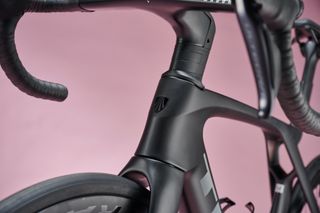
The same goes for the seatmast. The cutout in the seat tube leaves less room for a long seatpost and less adjustability (around 6cm minimum to maximum) so if you are long-legged but prefer a smaller frame you may need the tall version that comes with the size 56 upwards (as I ideally would have done). There are also two offsets available.
Our size 54 with a standard short mast could only manage a maximum saddle height of 74cm and the reach felt very short with the 90mm stem cockpit it comes with.
The latest geometry is called H1.5 (halfway between the old H1 race and H2 endurance). The reduced reach combined with the shorter reach of the swept-back bar works very well for that super aero hoods position, but it does feel surprisingly short. The kamm-tailed rear of the stem is much closer to your knees than you’d expect.
The new SLR bikes are all made from Trek’s 800 OCLV carbon - from the 105-equipped SLR 6 up to the flagship SLR 9 - and are impressively light, especially compared with other aero bikes such as the Cervelo S5. Trek says this is its lightest ever disc Madone.
There’s clearance for 28mm tires max, which is tight by modern standards. This model comes with Bontrager Aeolus Pro 51 tubeless-ready wheels, set up with Bontrager R3 Hard-Case Lite 25mm tires and inner tubes - again, surprisingly narrow.
Despite the fact that the fit wasn’t optimal - I could have done with the size up - the ride quality of the Madone is absolutely incredible. That’s the first thing that strikes you, or rather doesn’t strike you.
Aero bikes used to supply a harsher ride simply because deep, bladed tubing doesn’t flex like round tubing. This was undoubtedly the reason why Trek bolted the IsoSpeed decoupler onto the Madone two iterations ago. So you might expect that with its suspension system gone, the latest bike might have gone backwards in comfort. Not a bit of it.
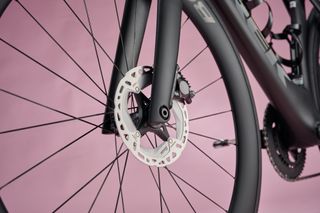
It feels like a coiled carbon spring - full of potential energy and floating over bad road surfaces seemingly without any effect on its speed. And this is on 25mm tires that aren’t even the best (at this price they really ought to be).
The handling is also exactly right. The shortish 90mm stem section of the cockpit could have made it a little twitchy, but thanks to the sweeping shape I found my weight sufficiently over the front wheel in the hoods position, and steering was fast but balanced on descents and tight corners.
So it passes ‘comfortable’ and ‘fast’ with flying colors (actually Deep Smoke for this one).
At 7.5kg it’s light for an aero bike - or any disc brake bike - and it leaps up hills as if it weighs even less. I was so impressed with its performance that I kept forgetting Trek also has the Emonda climbing bike. The next Emonda has its work cut out (pun intended).
Finally, stability in crosswinds. There’s one particular gateway on my test loop where any bike not designed for big yaw angles will be gusted and the Trek was indeed blown sideways slightly - but not alarmingly considering the deep wheels and frame tubes.
This bike is incredibly good but it’s also incredibly expensive. It’s a full $1,000 / £1,000 more than the equivalent outgoing Gen 6 Madone SLR 7, and you’d have to look hard to find a more expensive Ultegra Di2-equipped bike from the other mainstream brands.
The Canyon Aeroad CFR with Dura-Ace costs $8,999 / £8,799, while the Cervelo S5 with SRAM Force AXS costs $9,000 / £9,200. The Giant Propel Advanced SL1 also with SRAM Force costs $8,000 / £8,999.
You might also reasonably expect a power meter at this price - those three bikes all come with them - but it’s just the regular Ultegra crankset here.
So the price is stratospheric but compared with the current aero bikes I’ve ridden so far including the Colnago V4RS , Canyon Aeroad SLX , Cervelo S5, Tarmac SL7 and Pinarello Dogma F, the ride quality is superior.
- Frame: 800 Series OCLV carbon
- Fork: KVF carbon, tapered steerer
- Groupset: Shimano Ultegra Di2
- Wheels : Bontrager Aeolus Pro 51
- Tires : Bontrager R3 Hard-Case Lite 25mm
- Cockpit: Madone integrated
- Seatpost : Madone aero internal
- Saddle: Bontrager Aeolus Elite
- Weight: 7.5kg
- Contact: www.trekbikes.com
Thank you for reading 20 articles this month* Join now for unlimited access
Enjoy your first month for just £1 / $1 / €1
*Read 5 free articles per month without a subscription
Join now for unlimited access
Try first month for just £1 / $1 / €1
Get The Leadout Newsletter
The latest race content, interviews, features, reviews and expert buying guides, direct to your inbox!
Simon Smythe is a hugely experienced cycling tech writer, who has been writing for Cycling Weekly since 2003. Until recently he was our senior tech writer. In his cycling career Simon has mostly focused on time trialling with a national medal, a few open wins and his club's 30-mile record in his palmares. These days he spends most of his time testing road bikes, or on a tandem doing the school run with his younger son.
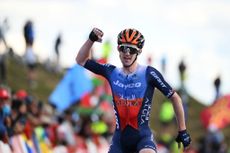
Irishman takes second stage win of this edition amid swirling clouds atop Picón Blanco as Primož Roglič defends red jersey
By Flo Clifford Published 7 September 24

Young Frenchman powers to third stage win as three-man breakaway caught at the death

Four Brits currently make up the top four in the general classification going into the race's final weekend
By Tom Thewlis Published 6 September 24
Useful links
- Tour de France
- Giro d'Italia
- Vuelta a España
buyers-guides
- Best road bikes
- Best gravel bikes
- Best smart turbo trainers
- Best cycling computers
- Editor's Choice
- Bike Reviews
- Component Reviews
- Clothing Reviews
- Contact Future's experts
- Terms and conditions
- Privacy policy
- Cookies policy
- Advertise with us
Cycling Weekly is part of Future plc, an international media group and leading digital publisher. Visit our corporate site . © Future Publishing Limited Quay House, The Ambury, Bath BA1 1UA. All rights reserved. England and Wales company registration number 2008885.
Welcome to Escape Collective. Please select your language.
Please note that this is an automated translation and it will not be perfect. All articles have been written in English and if anything appears to not make sense, please double check in English.
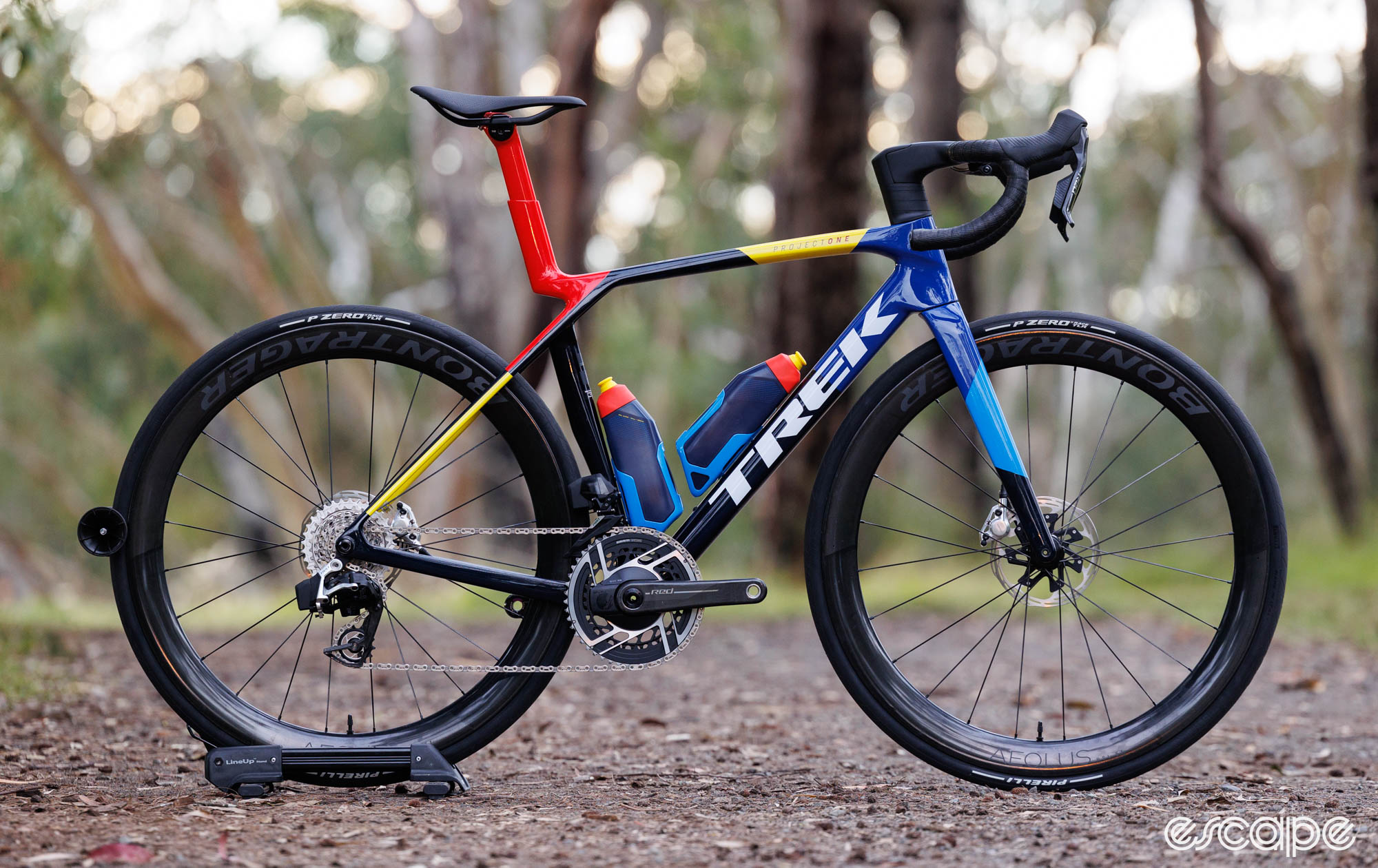
Goodbye Emonda: Trek goes all-in with the new Madone Gen 8
Trek returns to having one model of road race bike. Here are our early impressions of the 2025 Madone SLR.

Trek has just joined the growing number of brands that now only offer a single race-focussed model. With the Emonda disappearing from the range, it’s a full-circle moment for the American bike company.
Trek launched the Madone in 2003, and for a time, it was a mostly round-tubed race bike focused on weight. Over the years, we saw the Madone take a path of aerodynamics, and by the mid-2010s, it had gained enough weight for Trek to introduce a new weight-focused model – the Emonda.
The choice between the aero Madone and lightweight Emonda has remained until today. Want both aero and light? Well, Trek didn’t really have a good answer for that. And that leads us to the new Trek Madone Gen 8, a bike that aims to match the Emonda in weight and the Madone in aero.
In this article, I’ll cover what’s new, where the claimed gains are, what has seemingly been lost in the model consolidation, and some initial hands-on impressions. Consider this a detailed first look rather than a full review. Ronan Mc Laughlin will hopefully fill in the gaps at a later date.
The short of it: Trek’s latest generation Madone and now all-rounder road race bike. It replaces the pre-existing Madone SL and SLR, along with the Emonda carbon range. Good stuff: Improved ride quality, unapologetically a race bike, unique looks, easily adjustable stem height with efforts taken to simplify headset compatibility, Madone SL now lighter than previous SLR, and now equipped with appropriate tyre widths. Bad stuff: Still not the lightest option nor the most aero bike Trek could make, Trek’s own aero bottles are an integral part of the bike’s aero performance, headset still lacks sealing.
Lighter. Smoother. Less aero?
According to Trek, the new Madone is just as light as the previous Emonda, just as aero as the out-going Madone Gen 7 , and more comfortable than both. There are truths to such claims, but as I’ll get to, they’re also not telling of the full picture.
While the new Madone Gen 8 looks like the Madone before it, the company claims to have started from a blank page including considering traditional and non-traditional designs, dropped seatstays, traditional seatstays, and some pre-existing Trek concepts. In the end, the Madone’s familiar form factor and unmistakable IsoFlow seat tube won over in efforts to improve seated comfort while keeping a check on weight and aerodynamics.
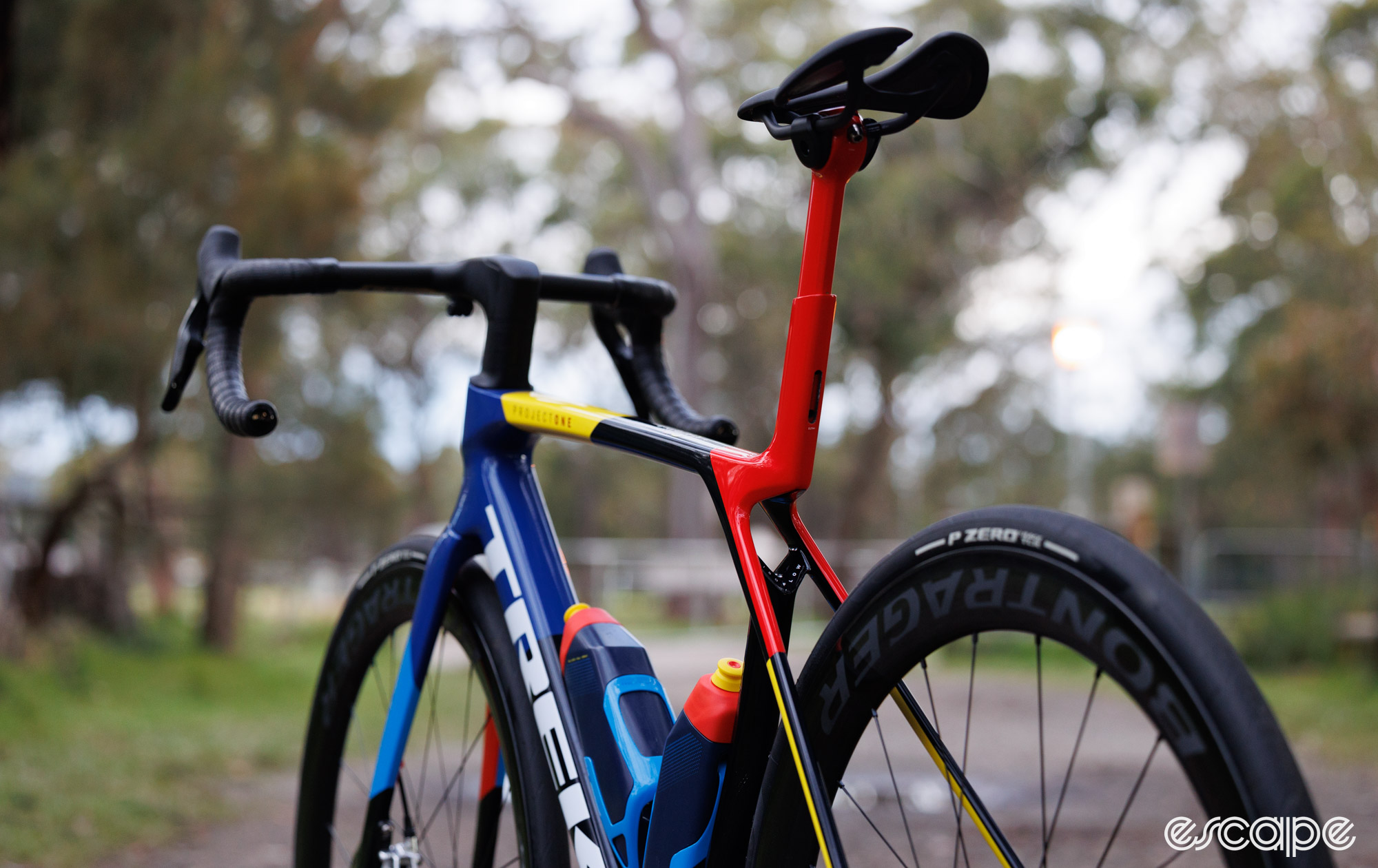
From afar it may look a whole lot like the Madone Gen 7, but a close look reveals a number of key tubes that have now been optimised for weight reduction over absolute aerodynamics. For example, the down tube is more rounded than before, while the seat tube doesn’t follow the contour of the rear wheel in the same way or have nearly as much depth to it. It’s a similar story up front with the now-shallower fork blades. That distinctive IsoFlow seat tube hole is refined in shape, now smaller, and said to be lighter, more aero, and more flexible.
Of course, Trek claims that its new Madone SLR Gen 8 is just as fast as its predecessor and runs rings around the Emonda (which was not known to be a slippery bike). Gone is Trek’s previous commitment to the Kammtail Virtual Foil (aka, truncated airfoil shapes) which largely existed for the UCI’s now-discontinued 3:1 length/wide tube cross-section rule. Now, the company is coining the phrase “Full System Foil,” where a cross-section taken of the whole bike reveals a deep airfoil shape that includes the new aerodynamic bottles.
To be frank, Trek’s claim that the new Madone is faster is not an apples-to-apples comparison. The figures used include the new aero bottles in the measurement of the new bike, but round bottles are used in the figures for the older version. At straighter yaw angles and as a complete bike package (including those bottles) the new Madone Gen 8 is said to be faster by a small margin. Even still, the previous Madone remains the faster pick at high yaw angles beyond 10º, and it’s likely the difference would extend further if those speedy bottles were fitted to the older model.
If you compare an apple to an apple, you’ll see the results flip in favour of the Gen 7 version, with Trek claiming a 1.6 W delta (at 35 km/h) in a straight line when comparing both generations of Madone set up with round bottles.
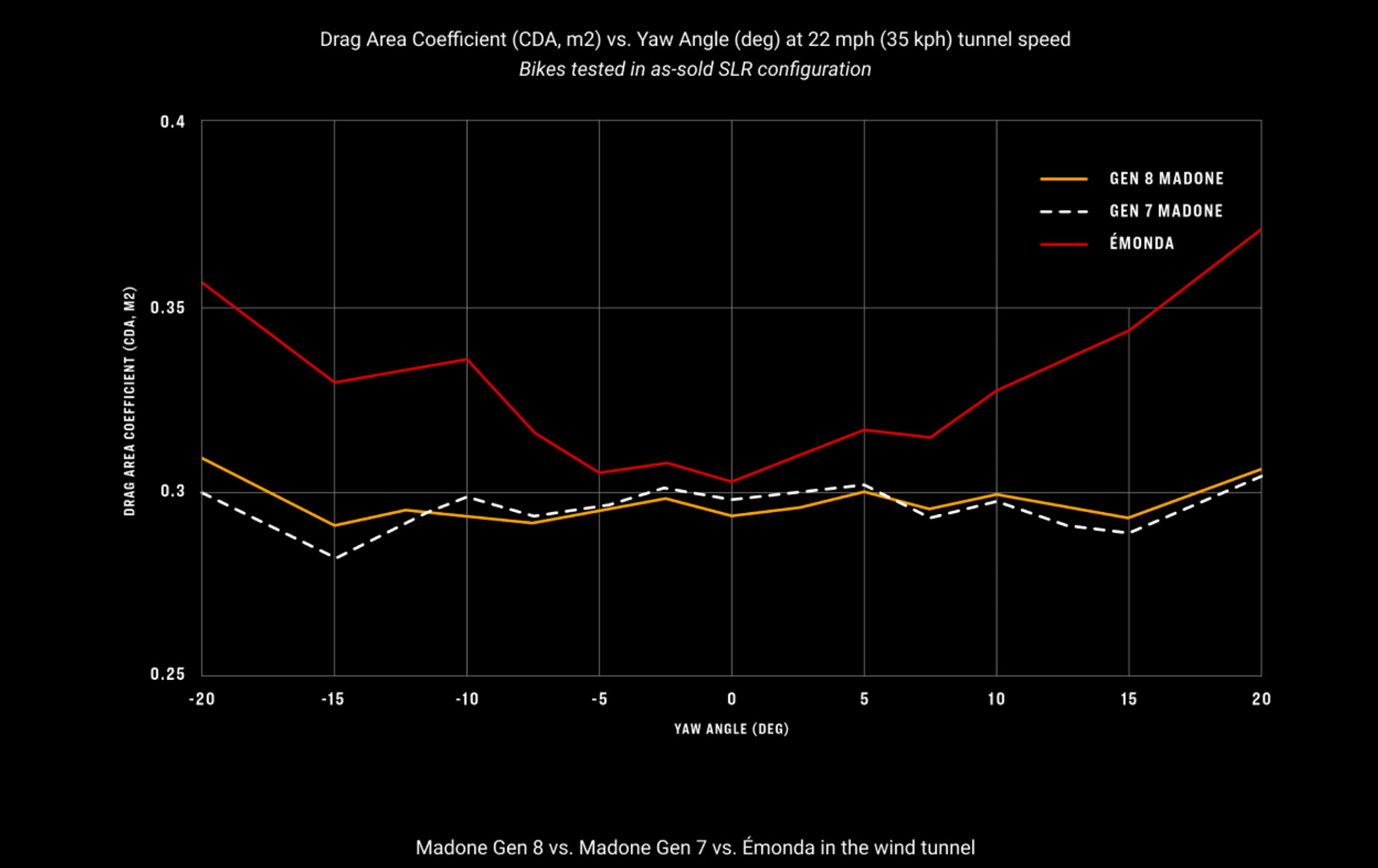
I’m not wanting to republish the company’s white paper on the topic, but a number of the claims surround the idea of testing the whole bike as a system, not just with the aero bottles, but also with a rider onboard, too. For instance, the new handlebar features a taller and blunter profile which, according to Trek, would measure slower if tested in isolation. However, with a rider in place, Trek claims the less-aero shape helps to reduce the drag on a rider’s moving legs, and therefore comes out as a net gain.
There are countless “it depends” moments when discussing aerodynamics in cycling, and it’s trivial to argue over fractions of a watt if efficiencies are made elsewhere. Still, it seems likely that Trek has left some potential aerodynamic gains on the table in pursuit of reducing weight and improving the ride quality.
The new flagship Madone SLR Gen 8 frame carries a claimed weight of 796 grams (M/L, lightest paint, no hardware), with the matching fork at 350 g. There’s also the more-affordable Madone SL, with a claimed frame weight at 1,054 g, and a fork at 363 g. Compare these figures to the Madone SLR Gen 7 with a claimed frame and fork weight of 1,050 g and 418 g respectively. Or the company’s Emonda SLR with a claimed frame weight of 760 g and a fork at 381 g.
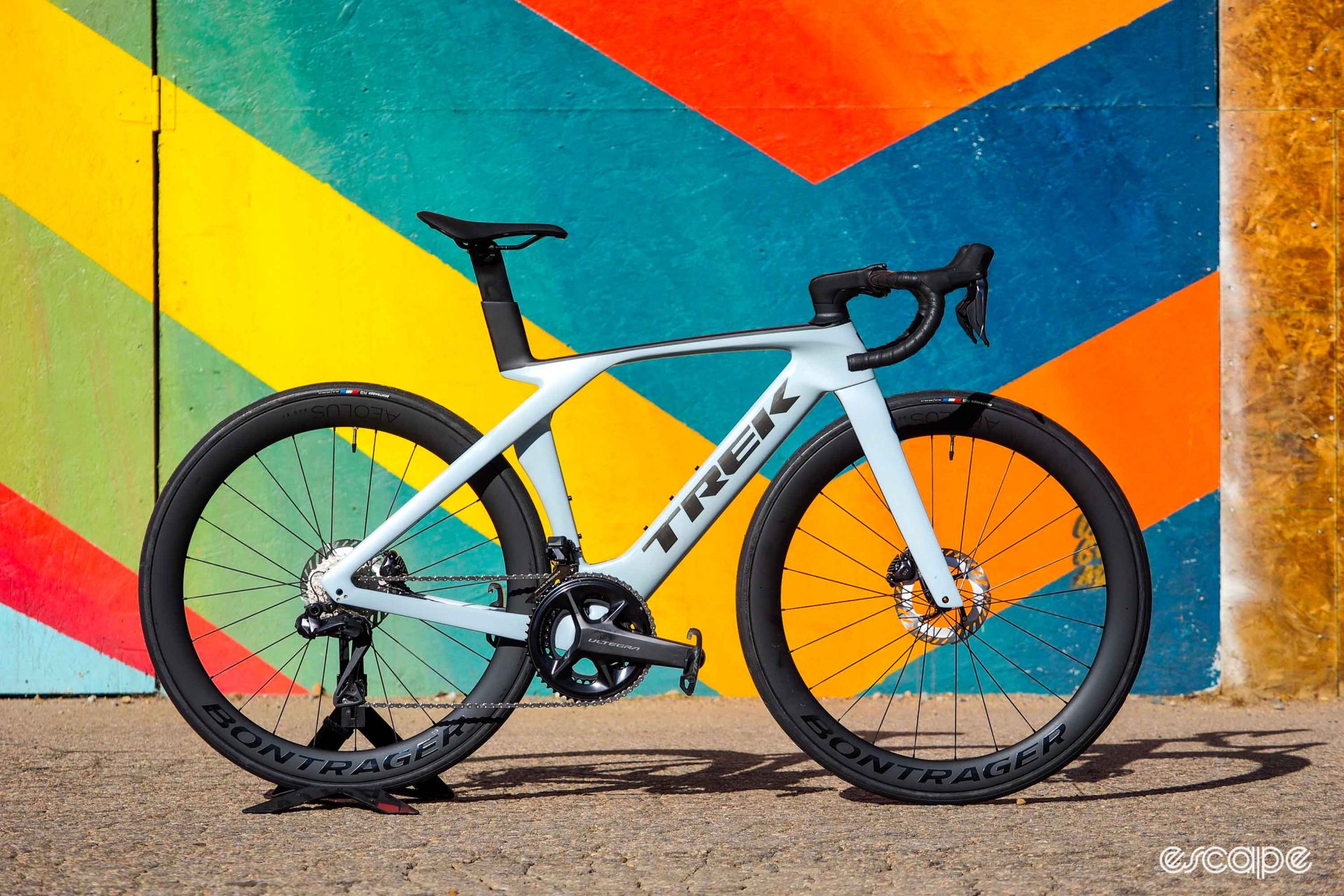
Add in the now 25-30 g lighter RSL Aero one-piece handlebar of the Madone SLR, and the company claims its full bikes are on par with where the Emonda previously sat. That all said, the bikes still aren’t at risk of breaking the UCI’s 6.8 kg rule, with Trek’s lightest Madone SLR 9 build sitting at 7 kg before the addition of cages, computer mount, or pedals. Meanwhile, my Madone SLR 9 Project One sample in a medium size and with the Lidl-Trek paint scheme tipped the scales at 7.13 kg with tubeless tyre sealant, Trek’s new aero carbon cages, and computer mount, but no pedals. Add pedals and you’re approximately half a kilogram (a pound) away from breaking the UCI’s weight limit.
Certainly, the use of a few shallower and more traditional tube shapes helps with some of the weight reduction achieved, but most of the savings are made in ways the eyes can’t see. With the new Madone Gen 8, Trek has introduced a new flagship 900-Series OCLV carbon lay-up for its SLR models, effectively a stiffer and stronger material that allows for less of it to be used (hence, weight saved). At the same time, Trek has made a few changes to how its frames and forks are manufactured. The frames are now constructed with 3D silicon moulds that exactly match the internal frame shaping with the goal of providing improved and better-controlled material compaction. The forks are now being moulded as a single piece instead of the previous approach of bonding multiple pieces into one. The result is less unnecessary material overlap, and some significant weight gains just in the fork alone.
Trek made further improvements by moving to two distinct sizes of tube shapes, one for the three smaller frame sizes and another for the larger three. While not a new concept, such size-specific frame design does mean the smaller sizes are better optimised for smaller riders, and vice versa.
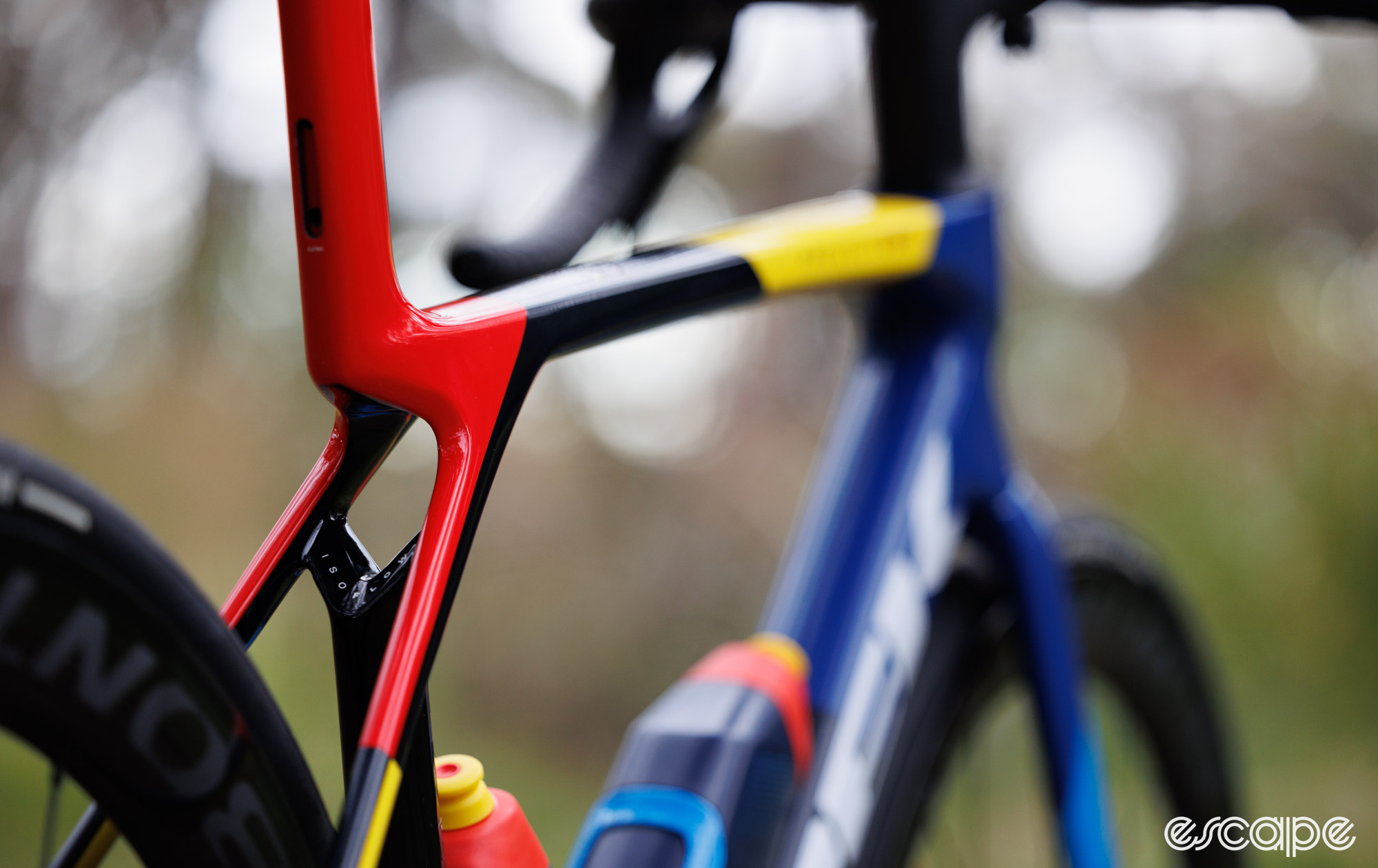
Finally, we come to the improved vertical flex in the IsoFlow seat tube. Trek claims the new Gen-8 Madone is 80% more compliant than its predecessor and 24% more compliant than the Emonda. Those numbers are big, but keep in mind that neither the Gen 7 Madone nor the existing Emonda were known for their sofa-like ride qualities.
Further aiding comfort is the fact Trek brought the new Madone into the current age of tyre widths. Even in 2023, Trek was equipping its Gen 7 Madone with a dated 25 mm tyre width. Now the new Madone comes stock with 28s (measuring an actual 29.5 mm at 68 psi), and there’s officially room to fit 32 mm tyres (based on Trek’s generous 6 mm of surrounding clearance allowance).
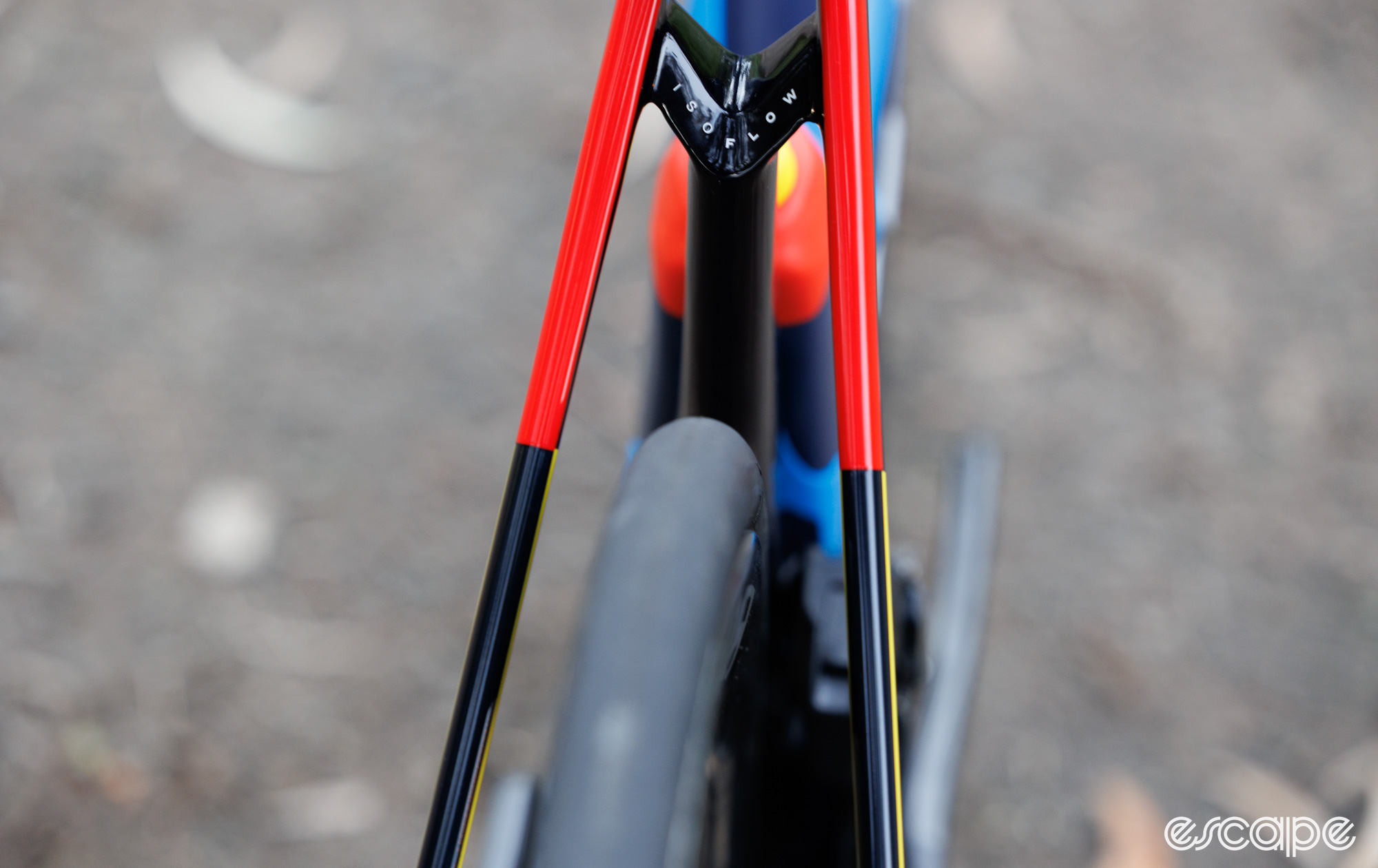
New sizing
It wasn’t so long ago that Trek offered its race bikes in a choice of two fits, with H1 (pro race) and H2 (consumer) providing a choice in stack and reach figures. Eventually, Trek consolidated those into H1.5, with fit figures taking an approximate average of the two prior choices. Now, Trek has rebranded H1.5 to “Road Race” geometry. While the numbers are closely comparable to the previous H1.5, there are some significant differences to note.
Firstly, Trek is changing from its long-standing numerical sizing to alpha-type sizing (think T-shirt sizing). The size chart is now a close match to that of Giant Bicycles, with a 54 cm equating to a medium, a 56 cm being a Medium-Large, and a 58 cm being a Large.
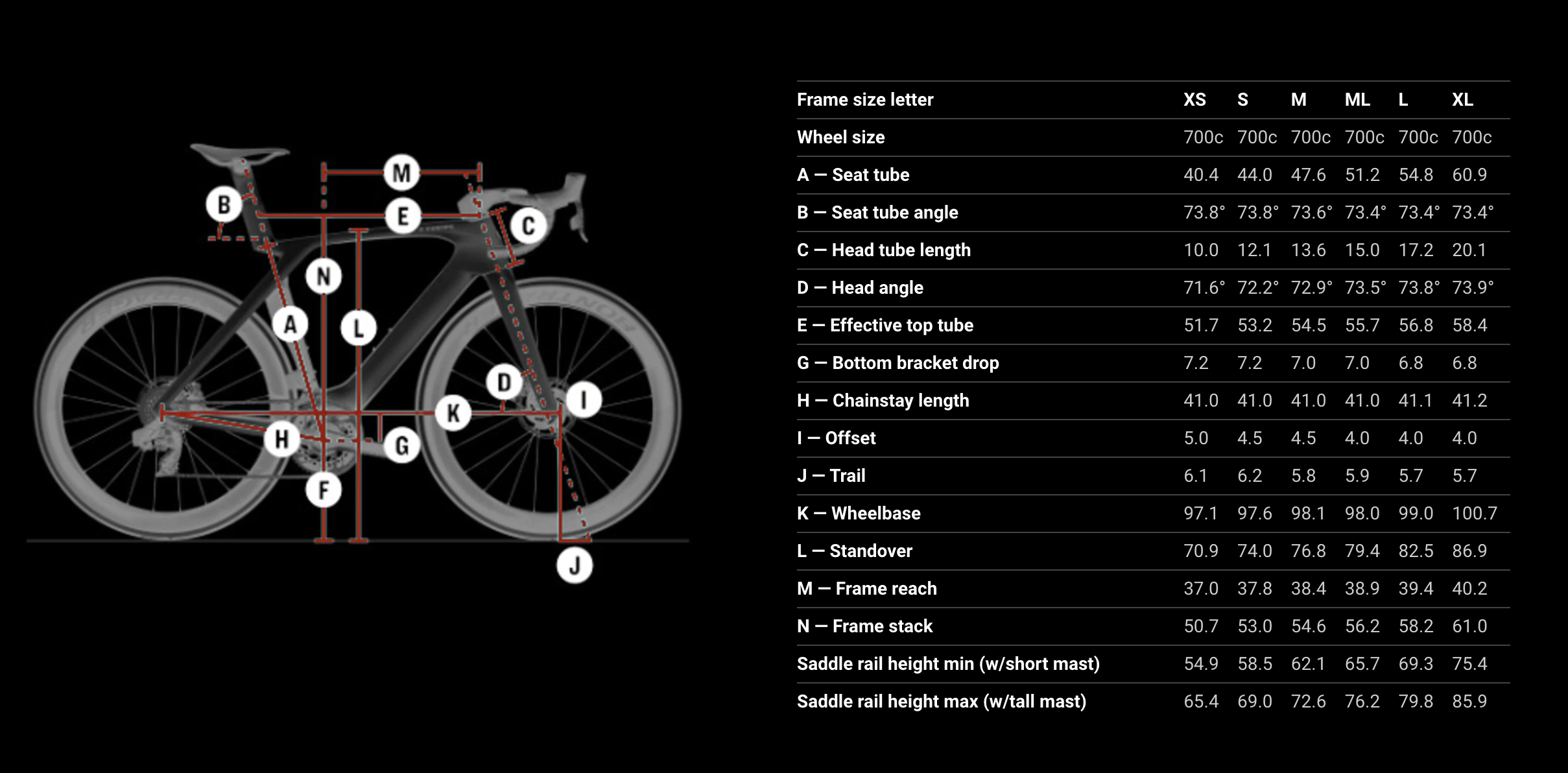
If consolidating two race models into one wasn’t enough, Trek has also reduced its size range from eight options to six. One reduction comes by merging the previous 52 and 54 cm sizes into a single Medium choice. This may sound problematic, but those two previous sizes sat surprisingly close to each other with just a 3 mm difference in frame reach and 8 mm in stack. I personally had long thought I was between the 52 and 54 cm sizing, wishing for the reach of the 52 cm and the stack of the 54 cm, and seemingly, my wish has now come true.
The second reduction comes from Trek ditching its biggest 62 cm frame size option and merging it with the 60 cm to create the new Extra Large size. According to the company, this new biggest option has an even higher maximum saddle height than the discontinued 62 cm option while giving up just 10 mm in stack height (compared to the 62 cm size). I’ll never be tall enough to be upset by this, but it does feel like brands are increasingly ignoring the giants of this world.
Beyond these changes the fit numbers are close to where they previously sat. That said, the revised one-piece RSL Aero handlebar equipped on the SLR models adds an effective 4 mm to the stack due to its thicker shaping. Don’t want that extra height? Trek will offer a special “wow, you must be pro” (not its actual name) low-bearing top cover as an aftermarket option.
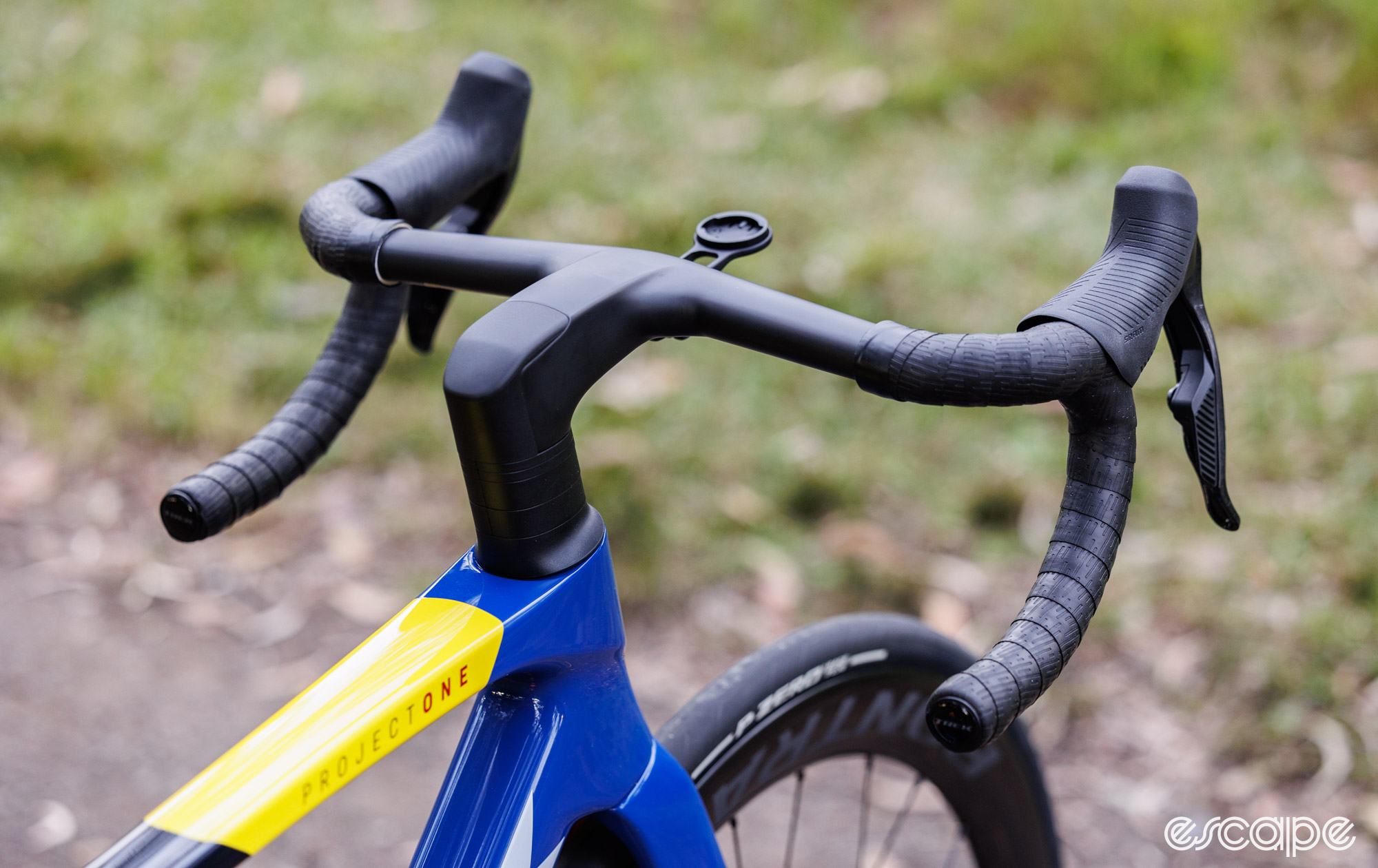
While lighter and easier to grasp with a thicker profile, that new one-piece RSL Aero handlebar otherwise features the same flared drops and dimensions as the version before it. That means these bikes are coming stock with an appropriately narrow-width handlebar at the controls, with options measuring as narrow as 35 cm at the hoods. Even the widest 44 cm handlebar (measured at the drops) measures a respectable 41 cm at the hoods. Trek will produce its RSL Aero handlebar/stem in an impressive 21 different length and width configurations, including stem lengths ranging from 70 to 130 mm.
Tech notes
Historically Trek has not done a stellar job of keeping consistent parts across generations of bikes. I can think of one Madone generation that used a unique headset bearing that has never been used since, while many other models have introduced proprietary headset top caps and seatpost-related things, to the chagrin of mechanics. Now Trek is making up for it with some big promises around ushering in a new generation of parts standardisation and interchangeability.
Perhaps at the forefront of that is the introduction of the Universal Derailleur Hanger (UDH) to its road race bike – maybe a first for the WorldTour. Trek had already introduced the UDH to its entry-level Domane AL road bike , and it’s now clear this will be the derailleur hanger of choice moving forward for its entire road, gravel, and mountain bike ranges.
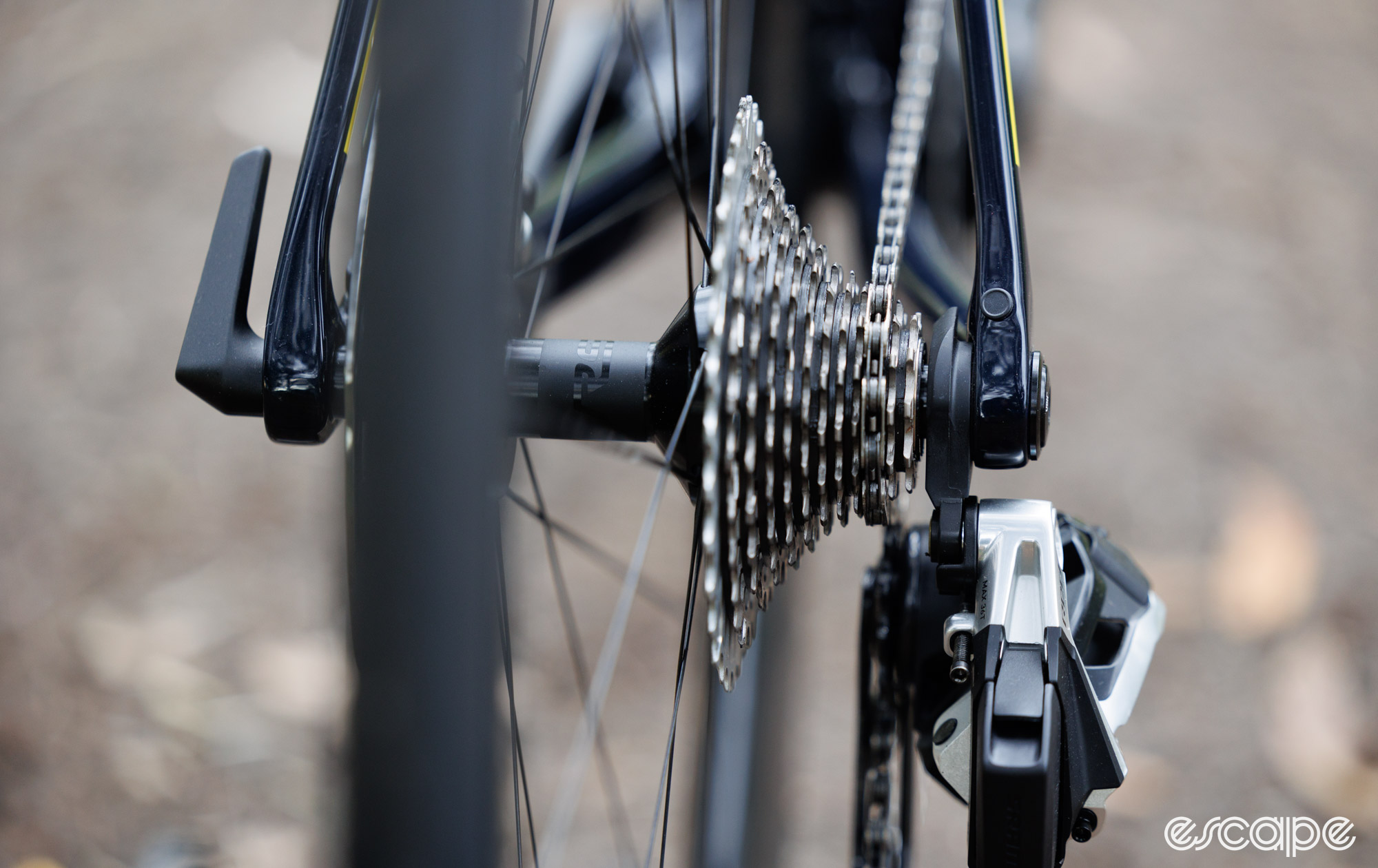
Keeping with the drivetrain, Trek is sticking with its 85.5 mm-width T47 Internal threaded bottom bracket, and there is no shortage of options to fit that today. The Madone SLR is compatible with electronic gearing only, while the lower-cost Madone SL can be fitted with mechanical shifting. Both versions feature a removable front derailleur tab should you wish for a clean 1x gearing setup. Assuming a 43.5 mm-chainline crank is fitted, the new Madone can handle up to 43/56T gearing in a 2x gearing configuration, or a 54T chaining in a 1x.
In a slight departure from the norm, the new Madone is designed to take either a 180 or 160 mm front disc rotor (not 140 mm!), while the rear can handle a 140 or 160 mm disc. There are new thru-axles, too. The Madone SLR gets some fancy chamfered versions that sit inward of the frame dropout, while the Madone SL will have more typical bolt-up axles. Both versions come stock with a removable handle that also provides a few useful hex-key sizes.
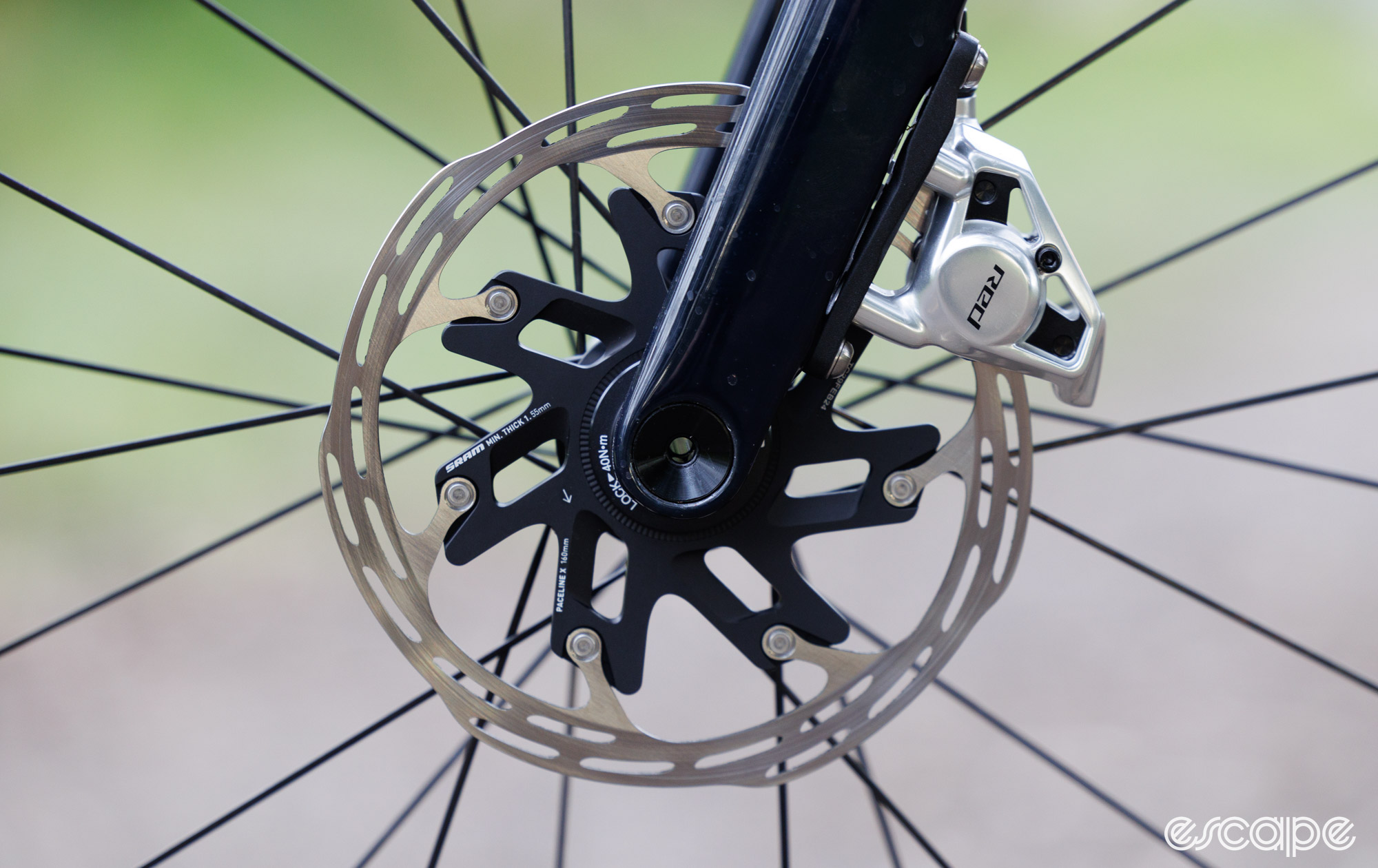
The non-traditional seatpost design of course means a few proprietary features. XS-Medium sizes come with a short-length seatpost (150 mm) in a zero setback configuration, while the bigger sizes come with a longer-length seatpost (190 mm) in a zero setback. Of course aftermarket options for swapping lengths or going to a 20 mm setback option will be made available (in black).
All posts are held in place with a unique wedge system that securely locks the post via a single 4 mm hex bolt (tightened to 5.2 Nm). The securing hex bolt is accessible through the rear slot in the frame, and the wedge can be flipped depending on your required saddle height. That said, I did experience an unusual rattle in my test bike that I traced down to this wedge. Some grease hushed it, but I was somewhat surprised that such a multi-part chunk of aluminium would feature in such a weight-focussed machine.

That seatpost design also means users of Shimano Di2 need a different location for the battery. Here, the Madone offers a proprietary battery holder that bolts into the base of the down tube. It’s only accessible with the bottom bracket removed.
More goals of standardisation within Trek’s range come with the new RCS Headset system. There are three top cap and matched spacer variants applicable to the new Madone, all sharing the same 1.5″ bearing and composite cable-guiding split ring beneath:
- RCS Race: Matches the new RSL Aero bar/stem (included with Madone SLR Gen 8)
- RCS Pro: Matches the current RCS Pro Blendr stem (included with Madone SL Gen 8)
- RCS Universal: For use with traditional round stems (regular 1 1/8-in. steerer clamp)
Complete bikes will ship with a generous stack of spacers below the stem; 40 mm to be exact. This is the maximum allowed by Trek, and I’d argue that those who need the full height should already be considering a model of bike with a more appropriate frame stack figure (such as Trek’s Domane).
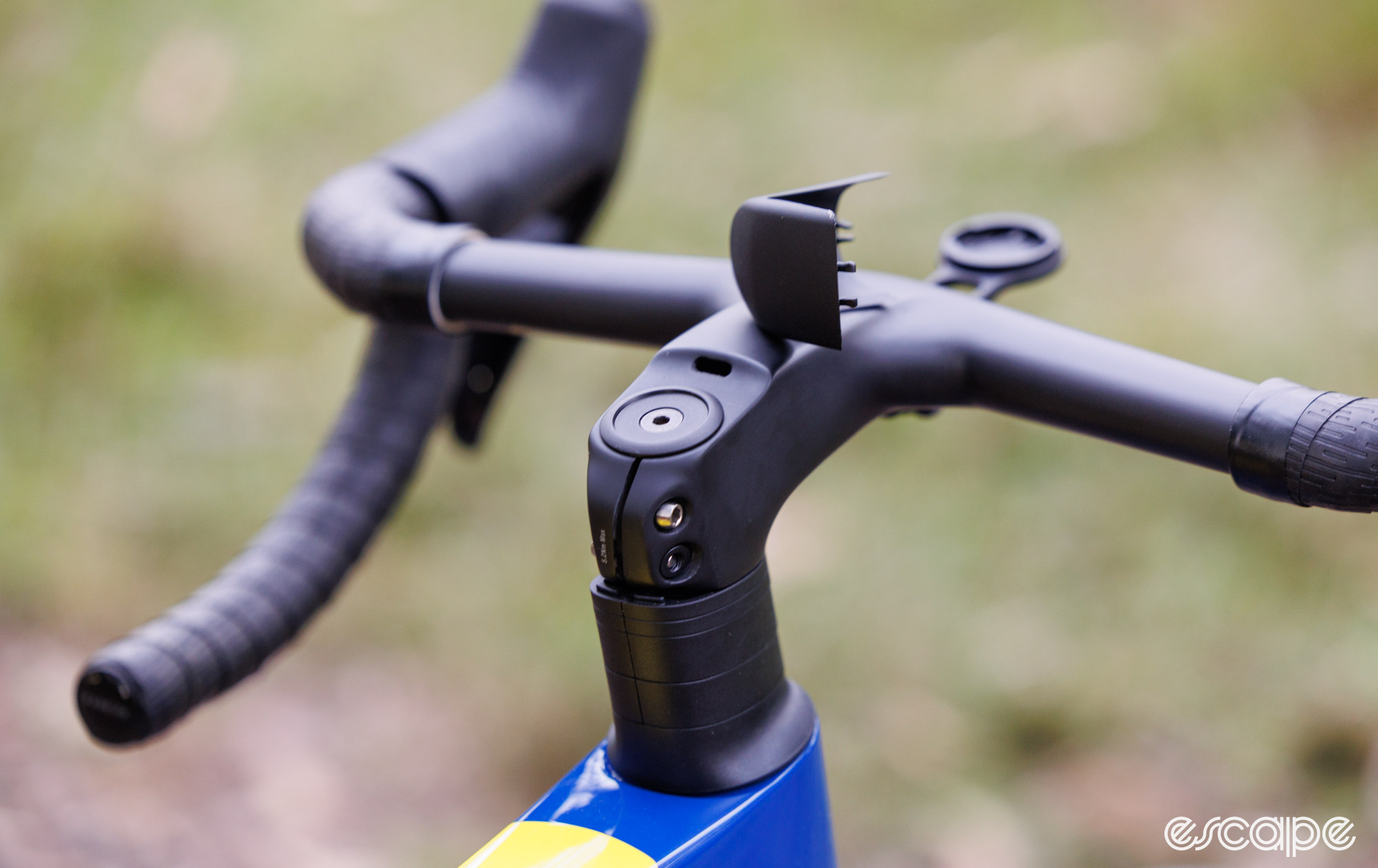
Another detail many will appreciate is that Trek supplies an alternative top cap for the stem which allows the use of regular round headset spacers to be placed on top. As a result, you can freely adjust the height of the stem without having to undo brake hoses or cut the steerer (at least until you’re ready to). This seems like a simple feature, but it’s worrying how many integrated stem designs fail to offer such convenience.
There’s also a new computer mount to match the new RSL Aero handlebar on the SLR bikes. Provided with the Madone SLR, the new lightened but non-adjustable mount includes pucks for Garmin and Wahoo computers. It also combines with a provided universal mount for lights, which is easily removed via a single hex bolt.
Aero you can squeeze

Trek’s new RSL Aero bottles and corresponding cages form a key part of Trek’s claim that the new bike is just as speedy as the old. Trek states these new bottles help smooth the airflow between the down tube and seat tube. A pair of them saves a claimed 3.7 W at 45 km/h (or 1.8W at 35km/h) compared to a pair of 600 ml round bottles in Trek Bat cages, and they’re claimed to be faster than using no bottles at all.
The new bottles are UCI-legal and the aero gains are enough that Trek states its men’s and women’s teams will be racing with them. Clearly, the cages and bottles were designed with the new Madone in mind, but the Wisconsin company states they also improved the aerodynamics of every other bike they tried them on, too.
Given the bottle’s importance to the bike’s performance, the bottle’s performance matters greatly. The bottles are offered in a single 595 ml (20 oz) capacity, are BPA-free, and are dishwasher-safe. The pull-top bite valve is not removable or replaceable. I found the bite valve a little tough to open, and the water flow to be acceptable but not rapid. An empty Aero bottle weighs a not-so-light 97 g. Thankfully, the matching carbon cages are a respectable 39 g each.
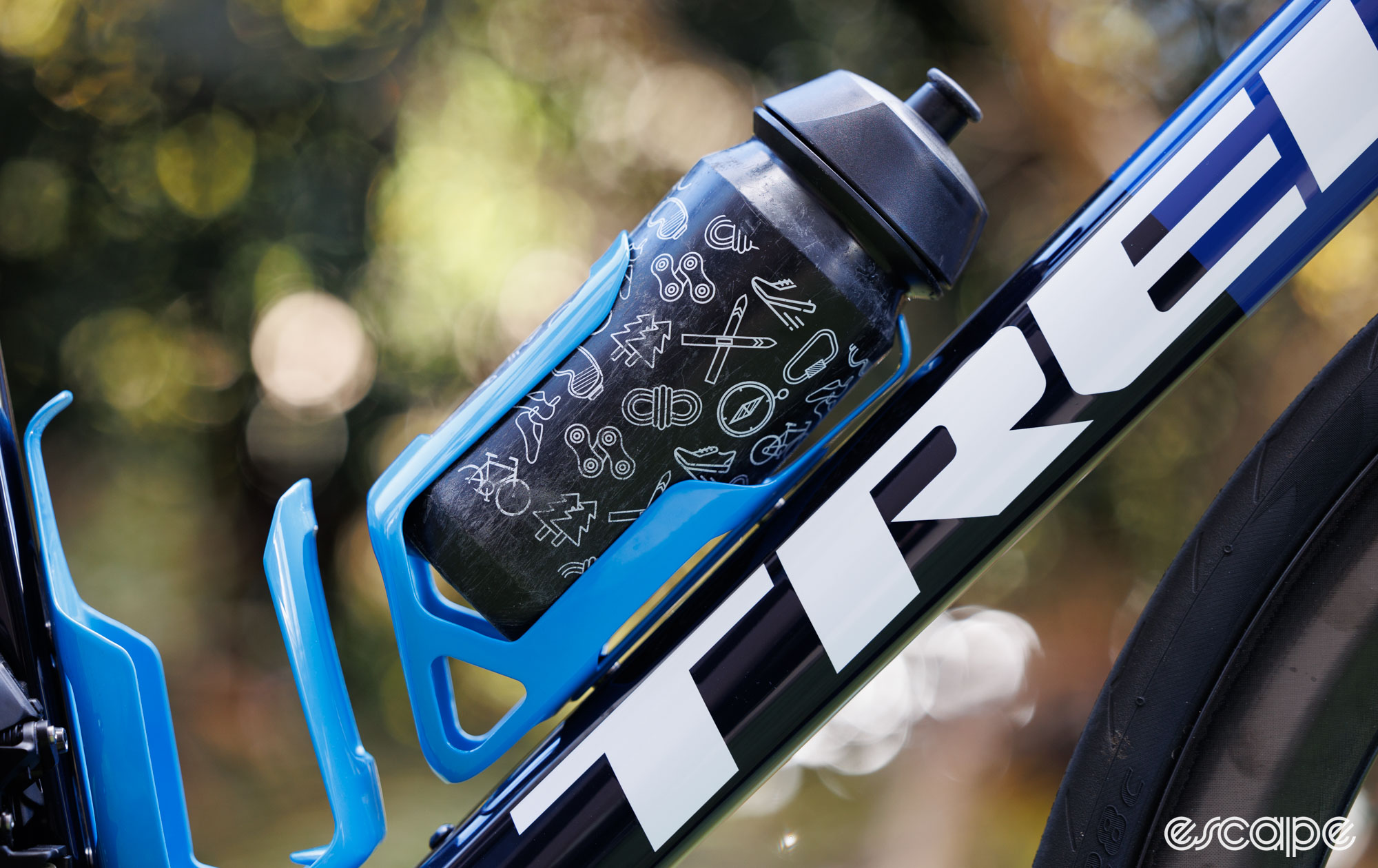
Taking a page from Cannondale’s book, the new aero cages can also hold any regular round bottle from the collection that currently occupies its own kitchen cupboard in your house. Carrying a regular bottle looks a little funky, but it at least holds it over a bumpy road. The fit with the Aero bottle is secure without being a pain to grab the bottle from, but there is certainly a learning curve in returning a non-round bottle to its holster.
Trek will offer its RSL Aero bottles in a smoke (black) colour or the pictured team blue. Matching carbon cages are available in black, white, and blue, with Project One bikes (excluding ICON paint) getting painted-to-match cages. Bottles and cages will be available for individual purchase, but expect to pay US$100 for a bottle and cage set (one bottle, one cage).
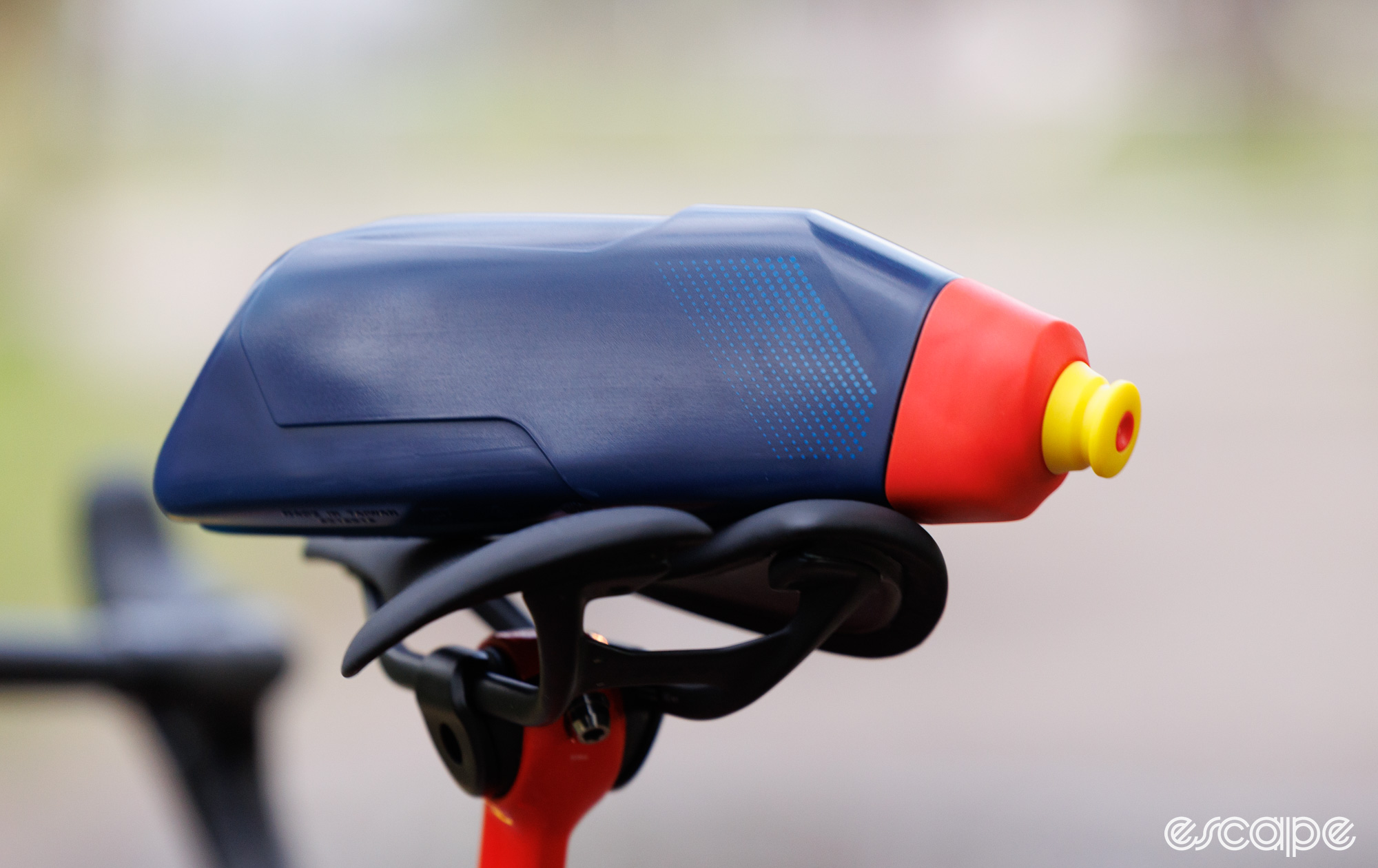
Madone SL vs Madone SLR
The new Madone, along with the Emonda’s phaseout, represents a significant reduction in Trek’s stock-keeping units (SKUs), with two bike lines becoming one, two fewer sizes across all models, and a narrower range of stock colour options. There are now nine complete bike options and two frameset options, split between the more-affordable Madone SL and the premium Madone SLR.
The Madone SL shares the same aesthetic exterior as the SLR but features a heavier 500-series OCLV carbon lay-up. All versions of the SL come equipped with a two-piece handlebar and stem (RCS Pro). Meanwhile, the fancy aero bottles and cages need to be purchased separately.
There are four complete Madone SL bikes in the 2025 range, starting with the Madone SL 5, the only model to feature mechanical shifting ( Shimano 105 12-speed ) and alloy rim wheels. The Madone SL 6 introduces 105 Di2 shifting and Bontrager Aeolus Elite 35 carbon wheels, while the Madone SL 6 AXS swaps to an SRAM Rival AXS groupset. At the top of the Madone SL range, the likely-to-be-popular SL 7 upgrades to Bontrager Aeolus Pro 51 carbon wheels, a carbon handlebar, and a Shimano Di2 12-speed groupset. This bike is claimed to weigh 7.88 kg without pedals.
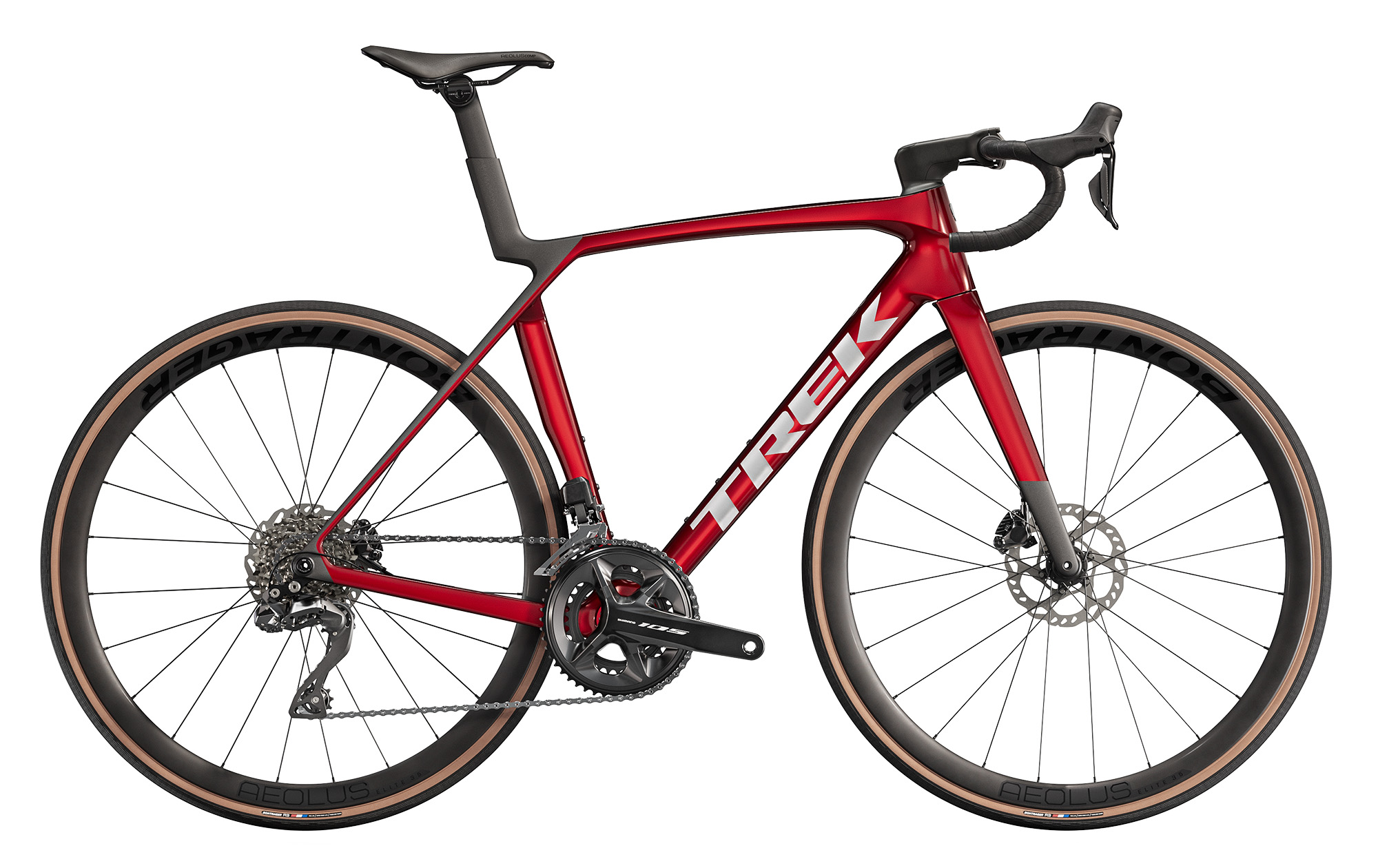
The Madone SLR range kicks off with the SLR 7, running the same level of build kit as the previously mentioned SL 7. However, with a change in tyres and to the one-piece RSL handlebar/stem, this one carries a claimed weight of 7.31 kg. At an extra 100 g is the Madone SLR 7 AXS with a SRAM Force AXS groupset. And then we arrive at the flagship Madone SLR 9 and SLR 9 AXS options, offering a choice between Shimano Dura-Ace Di2 or new SRAM Red AXS . And finally, you get into the customisable world of Trek’s Project One, an option exclusive to the Madone SLR-level of bike.
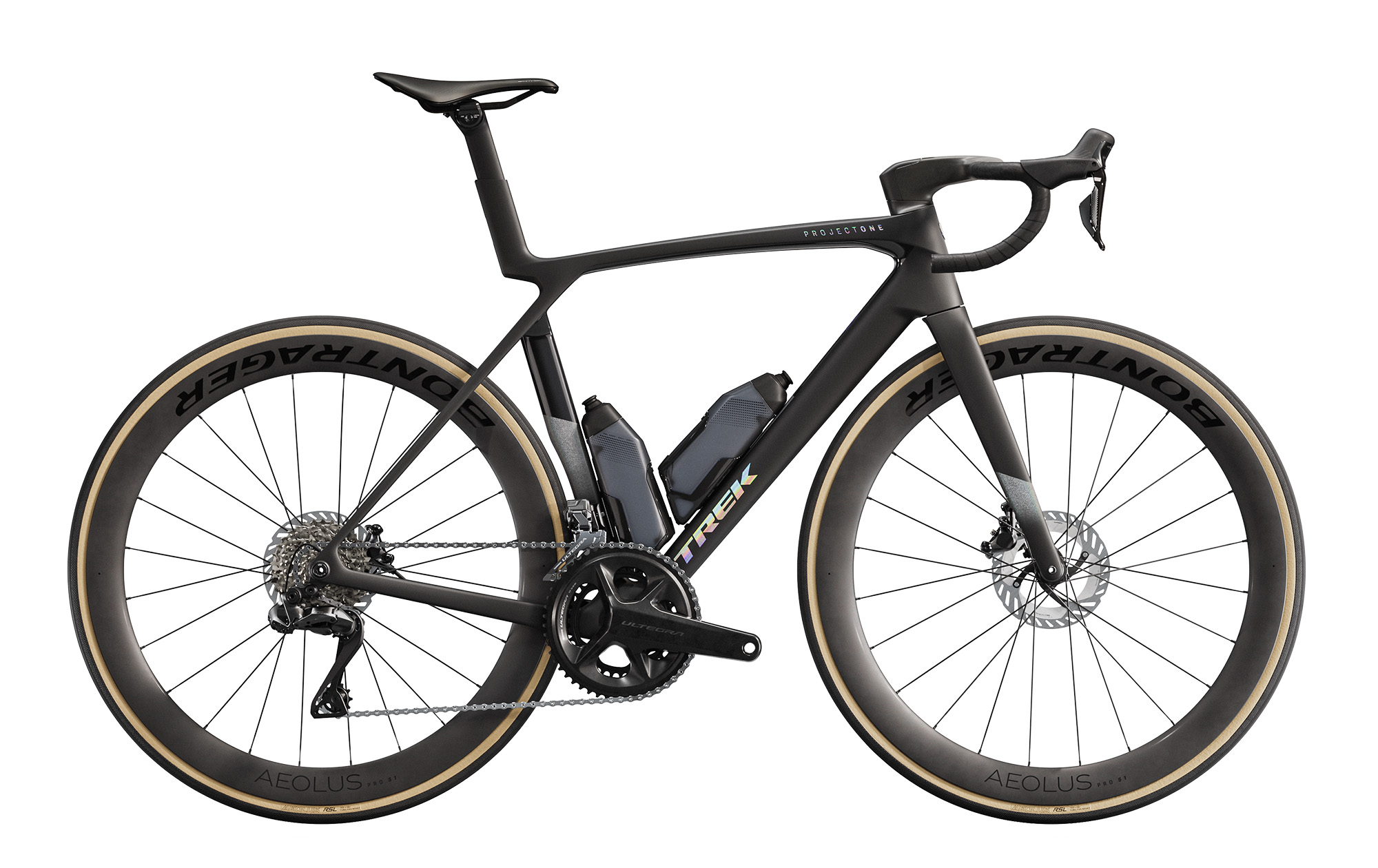
As noted, all bikes come stock with 28 mm tyres – Pirelli P Zero Races for the Madone SLRs, and Bontrager R3 Hard-Case Lites for the Madone SLs. All but the cheapest Madone SL 5 bikes come with the tyres set up tubeless-ready, including the required tyre sealant.
Early thoughts
Let me preface this by saying that while I appreciated that the previous Madone existed, heavier aero bikes have never been to my liking or riding preference. And while I’d ridden many Madones over the years, I hadn’t yet thrown a leg over the Gen 7.
I had, however, ridden the most recent Emonda SLR. It was a fine bike, but like the Emonda before it, I still found the ride quality to be unnecessarily brutish without any obvious gain to performance. I understand some pro riders request a bike to have a stiff feel through the saddle, but I’m increasingly of the opinion that that’s silly, and I at least know it’s not for me. Either way, the Emonda SLR wasn’t on my recommendation list, either. It’s fair to say that I came into a brief period of testing this bike with a decent level of scepticism.
Kudos to Trek – the new Madone has taken positive steps in making this platform more enjoyable to ride. The immediate sensation from the new Madone is that, while still stiff and certainly not muted to the road, it’s now far better-mannered in terms of seated comfort. The rear feels well balanced to the front, too, with a minor amount of flex in the RSL Aero handlebar doing the job there. And the wider tyre configuration (29.5 mm actual width) certainly helps greatly with that improved ride feel, too. There’s no denying the Madone is still a true race bike, but I at least find it to be an enjoyable one to be on.
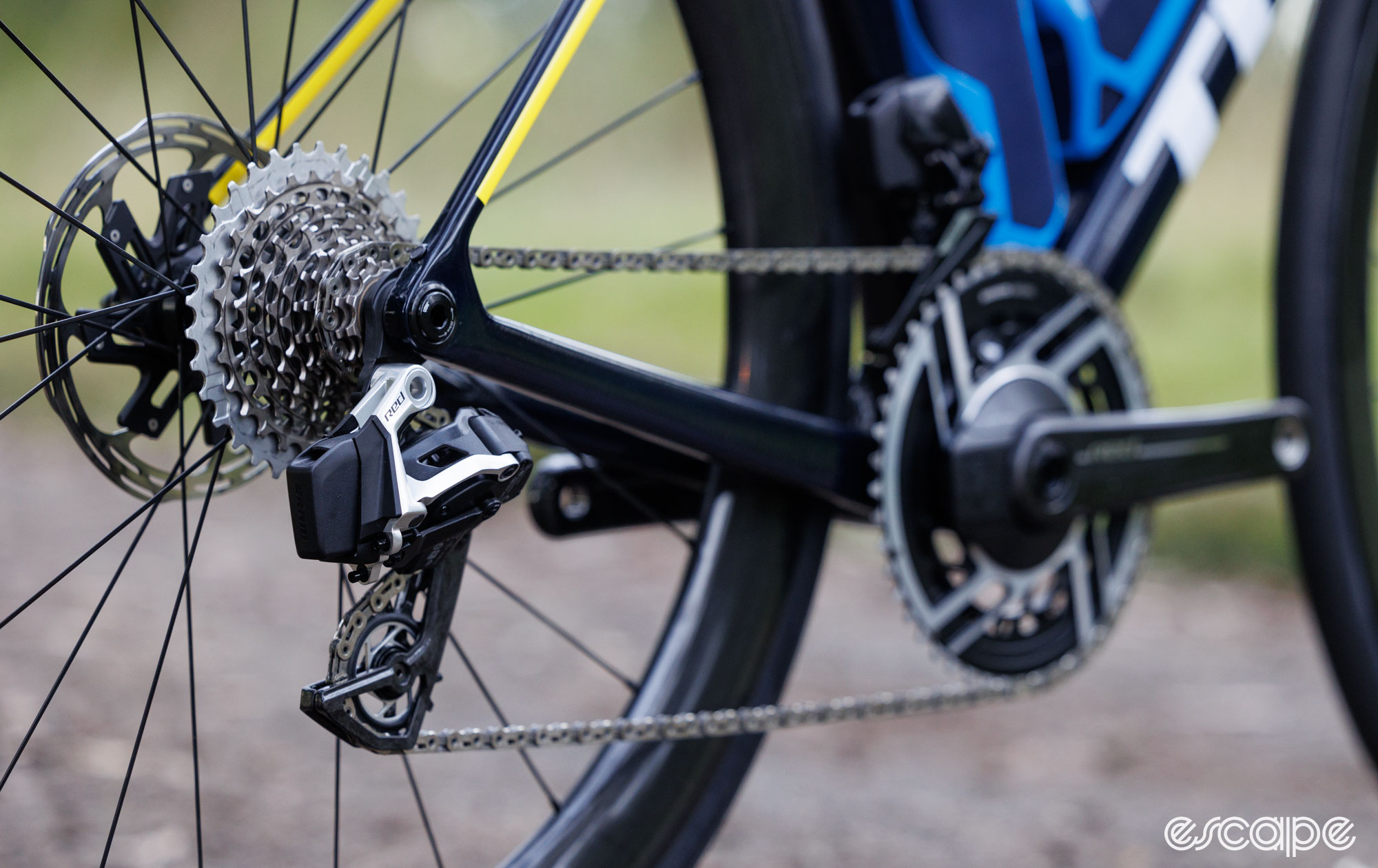
There are also many other positives to the new Madone through what hasn’t changed. The handling is still rapid but by no means a handful – it’s a stable ride at speed. Trek’s reach figures run marginally on the long side, but the company balances that with marginally shorter stem lengths for a given size, along with the narrowed bar widths, and now a zero-setback post as stock. And while I think the 40 mm stack of spacers given below the stem is excessive for such a race-focussed machine, it’s at least a little more welcoming for those who strongly desire to be on a race bike rather than an endurance-styled road bike. Adding to this, the touch points remain comfortable, and the unchanged Bontrager wheels remain a solid option, with a quality hooked rim that keeps tyre choices wide open.
Early signs do point to the new Madone somewhat defying its ultra-modern looks by being a relatively simple bike to own. That seatpost design locks securely, and the independent saddle angle and fore-after adjustments are a nice change from Trek’s single-bolt systems of old. The ability to adjust stem height, or just access the headset bearings for greasing is nice. And it’s comforting knowing the UDH hanger means the frame is future-proofed for whatever SRAM is likely to cook up next.
Still, it’s not quite perfect. There is no additional sealing for either the top or bottom headset bearings. I’d like to adjust the (fixed) angle on the provided computer mount. And those aero bottles aren’t quite as easy-squeezy as the best round bottles.
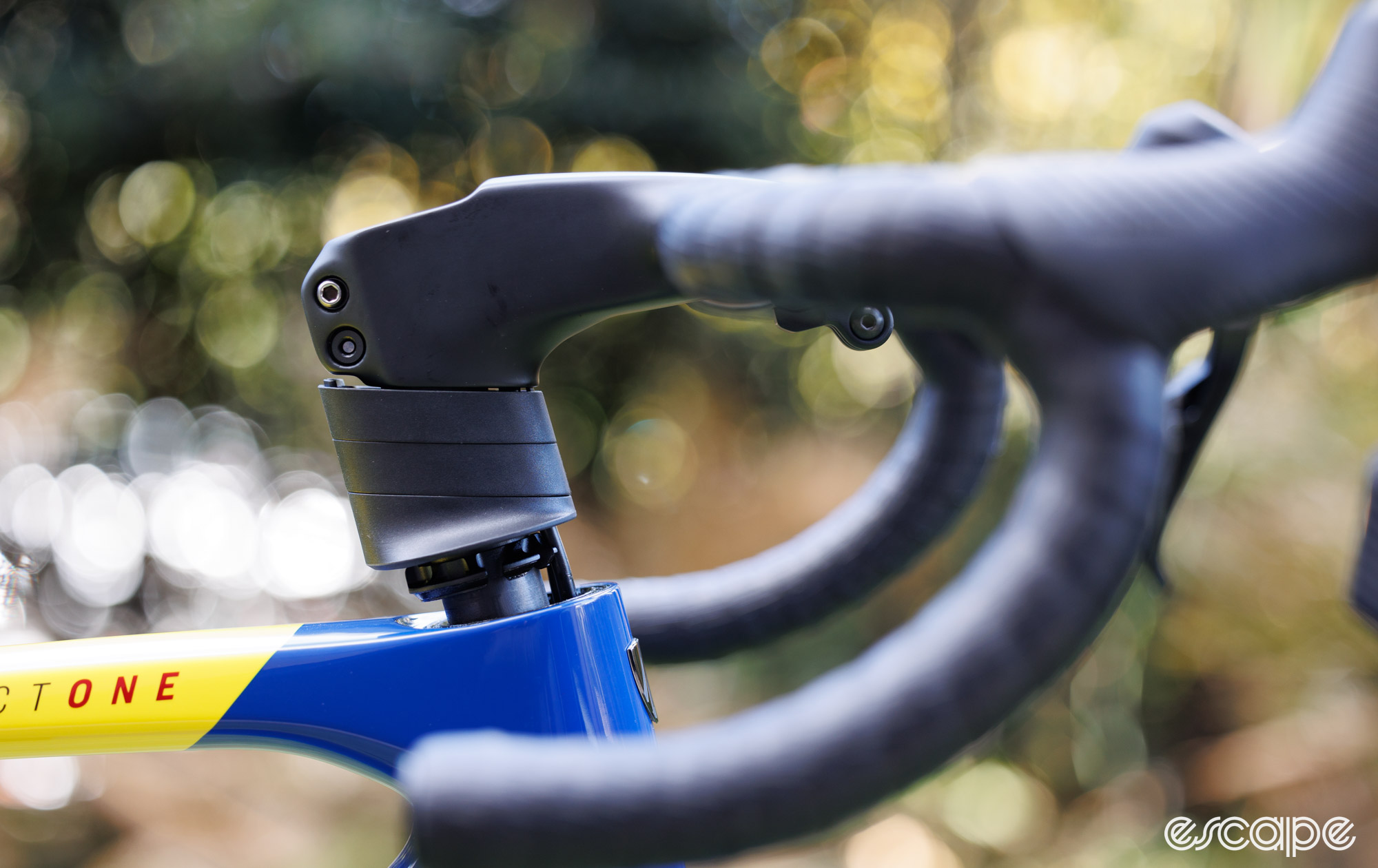
Obviously, there’s a lot more to say about this bike, but a recent injury has left me in a position where I’d rather leave such further comments to my colleague Ronan Mc Laughlin. And while it’s a tough one to answer, hopefully, he’ll be able to provide further insight into whether the new Madone meets the company’s speed claims.
Questions remain
Merging two race bikes into one is always going to be polarising decision and a risk for the company. I’d argue the new Madone isn’t as aero it could be, and equally, it’s certainly not the lightest bike Trek could make. Still, most athletes now demand a lightweight aero bike, or an aero lightweight bike, and there is an increasing amount of nuance in how you separate those demands. As someone who has never loved heavy aero bikes, or rattle-can lightweight rides, I can understand Trek’s decision to seek a happy medium.
Of course, the pessimistic view is that Trek’s bike line was incredibly bloated given current market demand, and Trek had previously said it would cut spending by 10% including through reducing its lineup. Trek hasn’t just halved the number of race bikes it ships around the world; it’s also found further efficiencies in fewer sizes and colour options. It’s all upside for Trek bike retailers, but I can’t help but feel Trek has achieved it by making trade-offs that will matter to some.
Early impressions suggest the new Madone Gen 8 is a great bike that’s well worthy of competition at the top level. In a similar vein to bikes like the Factor Ostro or Pinarello Dogma, it speaks to riders seeking a well-rounded race bike, and bonus points for doing it in a package that can’t be accused of being boring to look at. Still, I suspect riders who firmly sit in either the camp of wanting a bike on the UCI weight limit, or one that is aero-optimised to the limit, will be left wanting something different to what Trek now has to offer.

What did you think of this story?
😐 Meh 😊️ Solid 🤩 Excellent
Read Comments
escapecollective Lidl-Trek Road Trek
best yacht tech
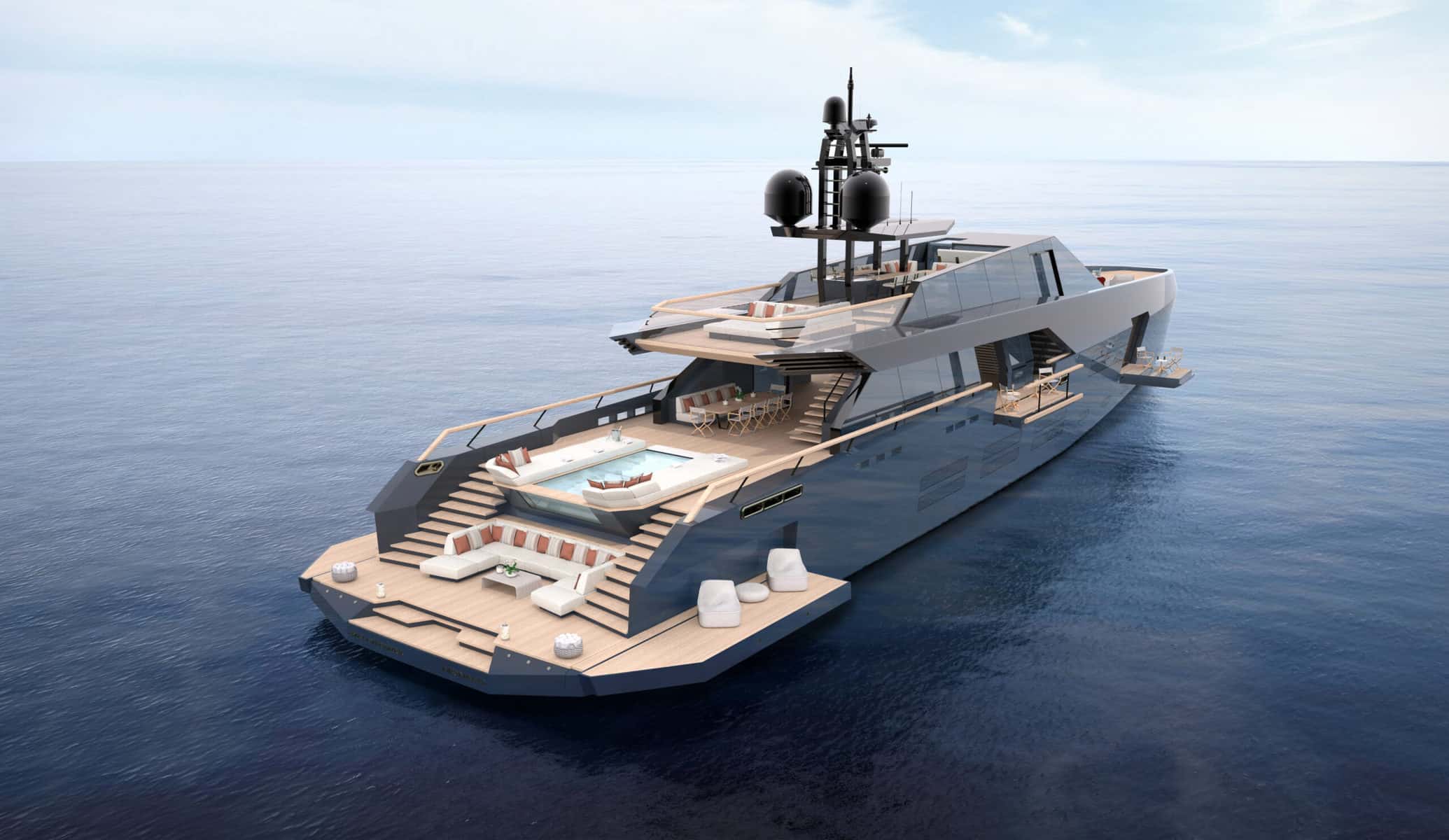
Mountainbike
- TFR Downhill
- TFR Cross Country
- Baloise-Trek
- TFR Triathlon
- Trek Ambassadors
- Regional teams and athletes

- Lidl-Trek Fanclub
- trekbikes.com
Skjelmose sprints into Vuelta white jersey atop Moncalvillo

A late burst from the Dane moves him to 6th overall and best young rider
After 19 days of grueling competition at the Vuelta a España, Lidl-Trek’s GC hopeful Mattias Skjelmose was rewarded for his consistent performances with a trip to the podium to slip on the White Jersey as best young rider. Since the start of the second week of the Grand Tour, Skjelly has been locked in a tight battle with the other contenders to the White Jersey – Carlos Rodríguez and Florian Lipowitz – but slowly but surely, our Dane clawed back time through the mountainous second and third weeks.
Whilst moving up the young rider ranking, Skjelmose has also gained places in the General Classification, and currently sits in 6 th overall, but has the ambition to crack the top five within the final two stages. Tomorrow’s challenge is perhaps the most important mountain stage of the entire Vuelta, with seven categorized climbs on the menu. The final battle on the mountains will be followed by a time trial in Madrid, allowing for plenty of movement in the final rankings. For now, Skjelmose is happy to enjoy his moment on the podium, and will give his all to carry his momentum to the finish line in Madrid.

It was really painful. In all the last days, me and Carlos have tried to drop each other but our limit is really close to each other so it’s been difficult. I have a small upper hand with a good acceleration in the end, and that gained me small seconds all the time. It’s nice to be in the White Jersey now.

(Photo by Dario Belingheri/Getty Images)
I think it will be a good battle. In my opinion, tomorrow is a perfect day for Carlos: a lot of kilojoules in the legs before the last climb. He has such a huge engine, he’s a good rider in general, but especially when the day becomes so hard and all the explosivity is taken out of the legs. He’s a really strong guy, so of course I’m a bit scared, but I hope I can follow him.

It’s my first time having a proper go at the GC in a Grand Tour, and of course I start to feel it, but I think the other guys do as well. Well, maybe not Primož. I’ve tried not to go over the limit any day, just saving myself as much as possible. For me, the most important was to prove myself, that I stay consistent and don’t crack tomorrow. One day at a time.
In this story

Discover more

Hattie Harnden wins Enduro World Cup overall title!

A powerful, winning sprint from Balsamo at Tour de Romandie

Inside Alex Yee’s Olympic gold performance and new gold Madone

- Mattias Skjelmose
Elisa wins the first stage of the Swiss race after a hectic finish: “We strongly sought out and wanted this victory.”
world motorcycle tours
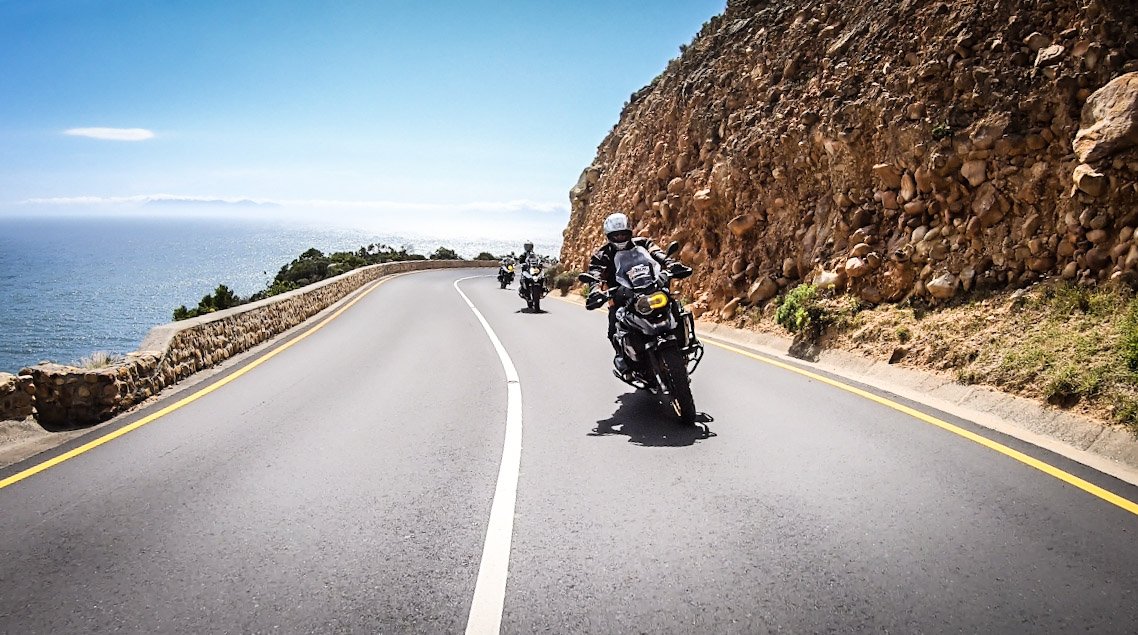
- Madone SLR 7 Gen 8 - 2025, X-Large
We’ll make this a great experience
It’s our mission to provide you with world-class hospitality every time you visit us online or in-store. We’ll always take care of you. It’s the Trek way.
30-day Unconditional Guarantee
If for any reason you’re not 100% happy with your online order from trekbikes.com, you can return it in like-new condition within 30 days. No questions asked.
Couldn't be happier
"I couldn't be happier. Easy deal, came in a couple of days. Only had to put on the bars and front wheel. Thank you, Trek!" -Rick
Best packaged bike
"Hands down the best packaged bike I've ever had shipped." - Ronald
Incredibly impressed
"I want to let you know how incredibly impressed I am with my entire Red Barn Refresh bike purchase experience...one of the best buying experiences I've ever had." - Jim
Accessories
How tall are you.
To measure your height, stand straight up, barefoot, with your back, heels, shoulders and head all touching a wall. While looking straight ahead, place a book or straight edge on your head and slowly push it against the wall. Your straight edge should be parallel with the floor. Mark the spot where the bottom of the book is touching the wall. The distance from the marked spot to the floor is your height.
What is your inseam?
How to measure: Stand barefoot with your back straight and against a wall. Tuck a ruler or something that extends to the floor between your legs. Using both hands, and keeping it level, pull the ruler up into your crotch as if you were sitting on the saddle. Measure the distance from the top edge of the ruler to the ground to find your inseam measurement. Your inseam is very important to your final bike size so please measure carefully.
We offer different sightseeing programmes in Moscow and Russia!
Maria moscow tours.
Private tours in Moscow and Russia

Walking tour + Metro
We offer a 4-hour private tour which includes a walking tour around the city center and a metro visit.
- Read details

Panoramic city tour
A 4-hour tour around the city with a private transport and a guide. The best option for the first day in Moscow!
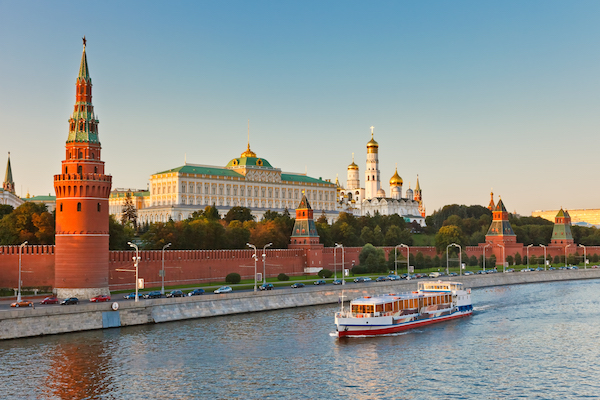
The Kremlin Tour
During the tour you will see the grounds of the Kremlin. We offer a walking tour with a private guide.

Together with a private guide you will see the most famous stations of Moscow underground. The tour lasts about 2h, you will be picked up at the hotel.
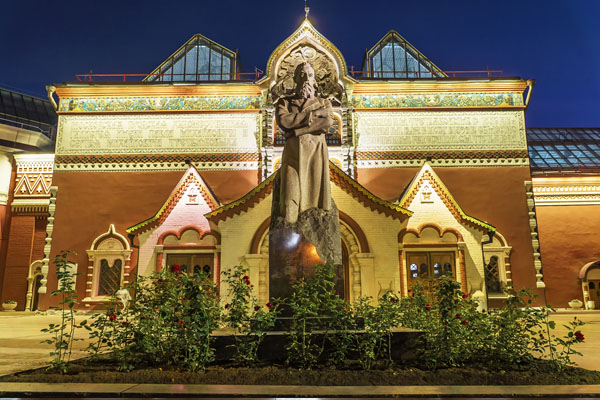
The State Tretyakov Gallery
A private tour to the biggest gallery of Russian art, where you can see classical and ancient Russian paintings
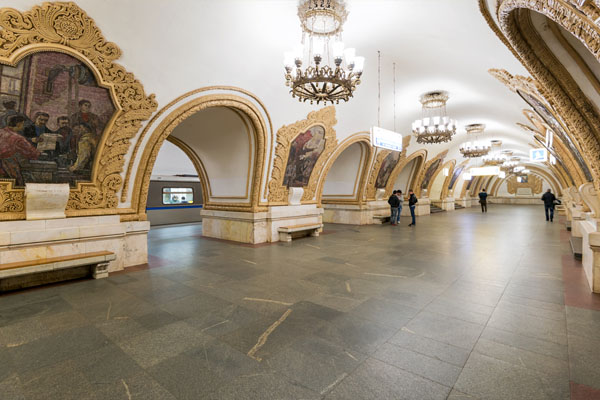
Tretyakov Gallery + Metro
A private tour which includes the visit to the biggest Russian art gallery and the excursion to Moscow underground

Kremlin grounds + The Armoury Chamber
Nowadays the Kremlin is the most famous museum in Moscow and the office of Russian President. UNESCO listed architectural ensemble of Moscow Kremlin and the Armoury Chamber as world heritage sites.
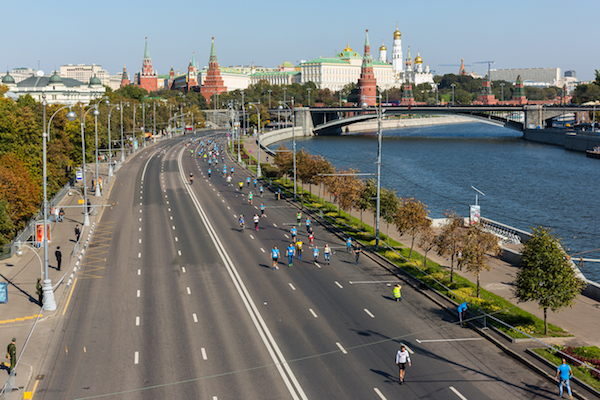
Moscow Running Tour
You are welcome to experience the first official running tour with a licensed guide in Moscow! Our tour is about sport and culture, because the guide is not only a local runner who loves this city but also an official Moscow guide, acquainted with its history, art and culture...

Transfers from/to the airport/railway-station
We arrange private transfers for you!

Local family visit
If you want to learn more about modern Russians, you have a chance to visit a real Russian family, see the apartment and have a traditional Russian meal.

Vladimir and Suzdal' Tour
This a 2-day tour to ancient Russian cities located near Moscow: Sergiev Posad, Vladimir and Suzdal. You will have 3 excursions and stay overnight in Vladimir or Suzdal.
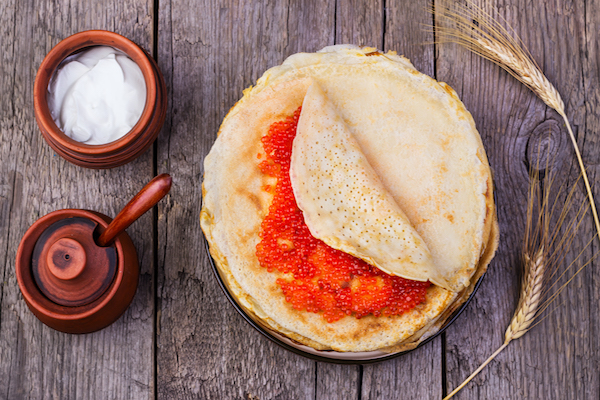
Food tour + sightseeing
It is 3h walking tour which includes food tasting and sightseeing programme. You will have a private guide for the tour.
Cancellation policy
If you cancel the tour 15 days or more in advance before the expected date and time of tour operations (local time, Moscow) there is no cancellation fee of prepaid service. If you cancel the tour 14-8 days before the expected date and time of tour operations (local time, Moscow), there is a 50% cancellation fee of prepaid service. If you cancel the tour 7 and less days in advance before the expected date and time of tour operations (local time, Moscow) or do not come to the tour, you will not receive a refund of prepaid service. The refund may take up to 30 days, usually about 3-5 days.
Select date
* You will get an answer on your e-mail, sometimes it automatically marks as spam, please check this folder as well.
+7 909 6903661 [email protected]

IMAGES
VIDEO
COMMENTS
Kevin Wabiszewski August 12, 2024. As the largest bicycle company in the United States, Trek manufactures nearly 50 percent of all the bikes sold in the USA. They make all styles of bikes, including mountain bikes, road bikes, professional-grade bikes, and bikes for kids. Understanding the scale of its operations, you may wonder where they make ...
Émonda Gen 1. The first generation Émonda marks the first time we split our road race lineup into two separate focuses —Émonda as the dedicated lightweight climbing bike, and Madone as the ultimate aerodynamic race bike. Émonda was the lightest bike we'd ever made, and designed to be the first up every climb. 2 0 1 5. Madone Gen 5.
Trek's road engineers restarted development towards this goal in late 2021 by cutting alloy frames to put into wind tunnel testing to refine the Madone Gen 7's already best-in-class design. Once they settled on the shape of the frame, they made a tool that could create carbon prototype frames for ride testing.
Frame: 900 Series OCLV Carbon, Full System Foil tube shaping, IsoFlow seat tube, RCS Headset System, electronic-only routing, removable aero chainkeeper, T47 BB, flat mount disc, UDH, 142x12mm thru axle Fork: Madone Gen 8 full carbon, tapered carbon steerer, internal brake routing, flat mount disc, 12x100mm chamfered thru axle Shared with every build option: T47 bottom bracket standard, RSL ...
All Trek bikes made by Project One program are handbuild in the United States. There are currently eight Trek models available: Madone, Domane, Emonda, Checkpoint, Speed concept, Supercaliber, Fuel EX, and Slash: all high-end models above $10k. Note that not all these bikes are made in the USA. Only the "Project One" ones do.
Four complete Madone SL bikes are offered, starting with the Madone SL 5 ($3,500), which features mechanical shifting using Shimano's 12-speed 105. ... Trek made a good bike with the latest ...
Madone Gen 8. The ultimate ultra-light, ultra-aero race bike. • Our lightest and fastest road race tech. • New lighter-weight, more compliant IsoFlow technology. • Available in all-new 900 OCLV Carbon (SLR) or 500 OCLV Carbon (SL) • New light, fast, and aero Full System Foil tube shapes.
The Madone 7-Series and 6-Series frames will be made in Trek's Waterloo, Wisconsin factory. Less expensive models - and all of the Domanes - are made in Asia (Image credit: Jonny Irick)
The new Trek Madone SLR Gen 8 frame uses a new carbon fibre called 900 OCLV Carbon. It's 20 per cent stronger than the 800 Series OCLV Carbon, which was formerly Trek's top composite. It's ...
The new Madone will replace both bikes, so Trek joins the growing number of bike brands to abandon separate aero and lightweight offerings. ... Trek said at the time that it made the Gen 7 seat ...
For Madone Gen 8, install the seat tube cage first with the bottom of the cage as close to the bottom bracket as possible. Then, install the downtube cage with the bottom of the cage for the bottom of the cage to be 1 cm away from the seat tube cage. Minimizing the gaps between the frame and bottles will help you maximize aerodynamic efficiency.
Trek says it has made a big effort towards standardising components across its family of road bikes, and that continues with the new Madone. "This started with the T47 [threaded] bottom bracket system that's used on all Trek road platforms, and with the Gen 8 Madone that's extended with the inclusion of UDH (Universal Derailleur Hanger ...
All of Trek's aero road bikes wear the same "Madone" label, but there are essentially two different bikes on tap here. Not long ago, Trek offered many of its Madone models in two fit variants: the aggressive H1 version with its pro-friendly long-and-low rider positioning, and the masses-friendly H2 fit, with its taller head tube and ...
Trek engineers didn't stop at IsoFlow to improve the Madone's aerodynamics. Painstaking research went into the frame, cockpit and rider position to make sure that riders got every ounce of free speed possible. The result? The new Madone is 19 watts faster than the previous generation at 45 kilometers an hour.
The entry-level build for the 2023 Madone SLR 6 (with Shimano 105 Di2) comes in at $8,000. That is a $1,100 increase over the 2021 Madone SLR 6 equipped with mechanical-shifting Shimano Ultegra ...
All of these bikes come with H2 fit frames. The Madone Race Shop Limited model, with a frame made from a higher grade of carbon fibre and built to an H1 geometry, Shimano Dura-Ace Di2 and Bontrager Aeolus 5 D3 wheels, is £9,750. An H2 frameset is £3,350 while a Race Shop Limited H1 frameset (with that higher grade of carbon fibre) is £4,100.
The home of Trek Factory Racing, and all the Trek programs. Whether its road, XC, enduro, downhill, freeride, cyclocross or triathlon, you'll find a Trek athlete, racing for the win. ... At the end of his visit, he was presented with one last prize: A glittering, gold-painted Madone Gen 8, which he'll race this weekend for a supertri race ...
It's a full $1,000 / £1,000 more than the equivalent outgoing Gen 6 Madone SLR 7, and you'd have to look hard to find a more expensive Ultegra Di2-equipped bike from the other mainstream ...
Trek made further improvements by moving to two distinct sizes of tube shapes, one for the three smaller frame sizes and another for the larger three. ... There are four complete Madone SL bikes in the 2025 range, starting with the Madone SL 5, the only model to feature mechanical shifting (Shimano 105 12-speed) and alloy rim wheels. The Madone ...
Madone SL Gen 8 Frameset is an insanely light, aerodynamic, and built to race. It's crafted with 500 Series OCLV Carbon that finds the sweet spot between stiff power, light weight, and compliance. Plus, IsoFlow frame technology adds comfort on long rides without sacrificing speed or aerodynamics. Compare. Color / Dark Star.
Trek Madone SLR - The most aero bike in the Tour de France? Prior to the Tour de France, the 2023 Trek Madone was the most significant new bike to be seen thanks to its radical ae
Trek told us the unpainted frame is 1050g (56), and a painted fork is 358g w/240mm steerer. Like the ultralight Emonda carbon models, the ALR uses their H2 race geometry, E2 tapered headtube (standard 1-1/8″ to 1-1/2″) and wide Pressfit BB 86.5, meaning this bike is made to go fast.
The home of Trek Factory Racing, and all the Trek programs. Whether its road, XC, enduro, downhill, freeride, cyclocross or triathlon, you'll find a Trek athlete, racing for the win. ... Inside Alex Yee's Olympic gold performance and new gold Madone. September 6, 2024 All Lidl-Trek stories. Tweet Facebook. Mattias Skjelmose; Next story ...
Trek Introduces Its New Madone SLR. Improved aerodynamics, reduced weight, and radical looks are brought to the brand's 7th generation road racing platform. Gear-obsessed editor
Pre-owned road bikes; Madone SLR 7 Gen 8 - 2025, X-Large; Madone SLR 7 Gen 8 - 2025, X-Large; Overview Specs; Frameset. Frame ... Trek Aero RSL Road integrated bar/stem, OCLV Carbon, Race Fit, 80mm reach, 124mm drop, 41cm control width, 44cm drop width, 110mm stem length. Brakeset
Panoramic city tour. A 4-hour tour around the city with a private transport and a guide. The best option for the first day in Moscow! Read details